THE ROCKY MOUNTAIN ASSOCIATION OF GEOLOGISTS

presents the

THE ROCKY MOUNTAIN ASSOCIATION OF GEOLOGISTS

presents the
Geoscience ~ Exploration ~ Commercialization
March 22-23, 2023
Westin Westminster
106000 Westminster Blvd
Westminster, Colorado
the U.S. Geological Survey Assessment of Known Helium Resources in the United States

Once the Federal Helium Reserve is Depleted, will North America be Able to Sustain Helium Self-sufficiency?
In Search of a Helium Standard: Regulations and Valuations in Global Capital Markets
Assessing Helium Accumulation Potential and Resource in Frontier Basins
Demystifying Colorado Regulatory Approval
The Federal Helium System: A Precedent for the Valuation of Future Helium Reserves?
Day One Keynote: What Makes an Economic Helium Prospect?
University of Oxford
Aota Technical, LLC
21
23
Tedesco, Running Foxes Energy pg. 25
EXPLORATION: COLORADO PLATEAU
Helium Exploration Workflow in the Four Corners Area, Navajo Nation
Andreason, Navajo Nation Oil and Gas Co. pg. 27

Understanding the Subsurface Helium System of Saskatchewan with a Focus on Traps/Seals via Volatiles Analysis of Helium and Other Compounds in Legacy Cores
Recent Developments in Helium Explotation in Southern Saskatchewan and Ajacent Areas of Montana and Alberta
Advance Hydrocarbon Stratigraphy
Helium in Alberta – Bringing in Critical Commodity On Stream Brad hayes, Petrel Robertson Consluting Ltd./ Royal
Geology of Natural Gas Resources at Kevin Dome, Toole County, Montana – Proven and Potenial Helium, CO2 and Hydrocarbon Systems
Comparison of Three Exploration Plays in North America, Gas, and Reservoir Characteristics, Land Inssues, Market Issues and More
EXPLORATION: SE COLORADO AND MORE
Expanding the Giant: A Review of the Hugoton Area’s Gas Fields’ First 100 Years of Development in the Permian’s HydrocarbonHelium Gas System
and Play Characterization of Upper Morrow Sandstone Reservoir using High Density 3D Seismic Nversion and Lithology Prediction Probability
Helium – Relationships to Other Reservoir Gases and Implications for Exploration: The New Mexico Example

Helium and Low-Hydrocarbon Reservoir in San Juan County, Utah: Unconventional Methods to Detect Reservoir Zonations and GasWater Contacts Part 1
Helium and Low-Hydrocarbon Reservoir in San Juan County, Utah: Unconventional Methods to Detect Reservoir Zonations and GasWater Contacts Part 2
Day Two Keynote- Helium Processing & Commercialization: Overcoming Challenges
New Mexico Bureau of Geology and Mineral Resources.
Cammack, Four Corners Helium pg. 68
Smith, Advanced Hydrocarbon Stratigraphy
pg. 69
Jordan, IACX ENERGY pg. 72


March 7, 2023
Conference Attendees:
It is with great pleasure that we welcome you to the Rocky Mountain Association of Geologists 2023 North American Helium Conference. We are honored to host this event and are thrilled by the overwhelming response we have received. We extend our sincerest gratitude to everyone who have joined us this week.
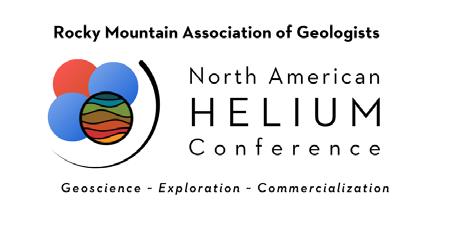
As we gather to discuss the latest developments in helium exploration and commercialization, we recognize that this would not have been possible without the generous support of our sponsors and exhibitors. Their contributions both helped make this event a reality and importantly assisted in making this an affordable event. As such, we are grateful for their continued support.
We also want to express our appreciation to all the speakers who without their contributions this conference would not have happened. Your participation and engagement have made this event a great success for all the attendees who have taken the time to join us for this conference. A special thank you is given to all the companies that have allowed permission for the material to be presented over the course of these two days.
We are confident that this conference will be an informative and engaging experience for all of us. We hope that you will take advantage of the opportunity to connect with industry leaders, share your expertise, and gain new insights into the latest developments in the helium industry. It is both our hope, and RMAG’s, that the connections and new insights will help your helium exploration efforts.
Once again, on behalf of the entire planning committee, we extend our sincere thanks to all our sponsors, exhibitors, speakers, and attendees for their support and participation in this conference. We wish you a productive and enjoyable event.
Sincerely,
Jeff Aldrich & Mark Germinario Helium Conference Planning Committee Co-Chairs
6:30 am
Doors Open – Registration and Breakfast
7:30 am Opening Remarks – Benjamin Burke, 2023 RMAG President
7:45 am
8:30 am
8:30 am
9:00 am
9:30 am
Keynote: Helium Market Overview, Outlook & Opportunity Phil Kornbluth, Kornbluth Helium Consulting LLC
The Big Picture
Session Chairs: Jeff Aldrich and Mark Germinario
Overview of the U.S. Geological Survey Assessment of Known Helium Resources in the United States, Sean Brennan, USGS
Once the Federal Helium Reserve is Depleted, will North America be Able to Sustain Helium Selfsufficiency? Tim Rynott, Four Corners Helium
In Search of a Helium Standard: Regulations and Valuations in Global Capital Markets, Jeff Aldrich, Sproule
10:00 am Break
10:30 am
11:00 am
11:30 am
Assessing Helium Accumulation Potential and Resource in Frontier Basins, Chris Ballentine, University of Oxford
Demystifying Colorado Regulatory Approval, Gwen Brodsky, Aota Technical, LLC
The Federal Helium System: A Precedent for the Valuation of Future Helium Reserves? Nicholas Kernan and Kelsey Zabrusky, Division of Minerals Evaluation, Department of Interior
12:00 pm Lunch
12:45 pm
1:30 pm
1:30 pm
2:00 pm
2:30 pm
Keynote: What Makes an Economic Helium Prospect, Steven Tedesco, Running Foxes Energy
EXPLORATION: Colorado Plateau
Session Chair: Sean Brennan
Helium Exploration Workflow in the Four Corners Area, Navajo Nation, Mark Andreason, Navajo Nation Oil and Gas, Co.
Helium Exploration in the Rio Grande Rift, Bruce Black, Black Exploration
Helium Systematics in the Southern Rockies, Edward Coalson, Coyote Oil and Gas CO

Midstream Logistics
Session Chair: Mark Germinario
Transportation of Natural Gas Containing Helium from Wellhead to Refinery, William. L. Horn, Metropolitan State University
Helium Transport in this Millennium, Rocky Freeman, Kelley Leasing Partners, LLC
Modular Helium Purifiers in Saskatchewan, Paul Terrien, Air Liquide
3:00 pm
Utilizing Flowing Material Balance for Assessing Reactivation of Abandoned Helium Fields
Applied to the Navajo Springs Fields, Jessica Davey, Desert Mountain Energy
3:30 pm Break
EXPLORATION: Colorado Plateau
Raw Gas Processing – Selecting Processing Strategies for Your Operational Goals, Forrest Churchill, SIGIT
4:00 pm
Session Chair: Sean Brennan
EXPLORATION: International
Session Chair: Jeff Aldrich
4:00 pm
4:30 pm
Helium & Other Inert Gases in the Piceance Basin, Colorado, Bryan McDowell, Sabata Energy Corp.
The Current Status and Commercialization of the Virginia Helium Field in Free State, South Africa: An Analogue for Fractured Basement Plays, Fin Stuart, Scottish University Environmental Research Centre
Exploring Helium in Europe, Benoît Hauville, 45-8 Energy
5:00 pm
5:30 pm
A Source and Migration Model for Helium and Other Gases of the Colorado Plateau, William Craddock, USGS

Networking Happy Hour
Impact Craters as Potential Critical Element in Development of Helium Accumulation, Steven Tedesco, Running Foxes Energy Inc.
7:00 am Doors Open – Registration and Breakfast
8:00 am
EXPLORATION: Canada Session Chair: Michele Bishop
EXPLORATION: Southeast Colorado and More Session Chair: Rob Diedrich
8:00 am
Helium Landscape in the Western Canadian Sedimentary Basin, Canada, Genga Nadaraju, Avanti Helium Corp.
Lower Pennsylvanian Morrow Helium System, Las Animas Arch, Eastern Colorado and Western Kansas, David Bowen, Wave Tech Helium, Inc.
8:30 am
Helium Potential of Southwestern Manitoba, Canada, Michelle Nicolas, Manitoba Geological Survey
The Proven and Potential Plays of Las Animas County, SE Colorado, Trent Spry, Blue Star Helium
9:00 am
Understanding the Subsurface Helium System of Saskatchewan with a Focus on Traps/Seals via Volatiles Analysis of Helium and Other Compounds in Legacy Cores, Christopher Smith, Advanced Hydrocarbon Stratigraphy
9:30 am Break
10:00 am
EXPLORATION: Canada Session Chair: Michele Bishop
Expanding the Giant: A Review of the North Hugoton Area’s Gas Fields’ First 100 Years of Development Via a Modern Geo-analytical Approach for Identification of Stranded Resources and Redevelopment Opportunities in the Permian’s Chase HydrocarbonHelium Systems, Matthew Fox, Fox Bros Energy LLC.
10:00 am
Recent Developments in Helium Exploitation in Southern Saskatchewan and Adjacent Areas of Montana and Alberta, Duncan MacKenzie, Global Helium Corp
EXPLORATION: Southeast Colorado and More Session Chair: Rob Diedrich
Case Study and Play Characterization of Upper Morrow Sandstone Reservoir Using High Density 3D Seismic Inversion and Lithology Prediction Probability, Mark Falk
10:30 am
Helium in Alberta – Bringing a Critical Commodity on Stream, Brad Hayes, Petrel Robertson Consulting Ltd.
Helium – Relationships to Other Reservoir Gases and Implications for Exploration: The New Mexico Example, Ron Broadhead, New Mexico Bureau of Geology and Mineral Resources

11:00 am
Geology of Natural Gas Resources at Kevin Dome, Toole County, Montana – Proven and Potential Helium, CO2, and Hydrocarbon Systems, David Bowen, Wavetech Helium, Inc.
Helium and Low-Hydrocarbon Reservoir in San Juan County, Utah: Unconventional Methods to Detect Reservoir Zonation’s and Gas-Water Contacts Part 1, Jacob Cammack, Four Corners Helium
11:30 am
Comparison of Three Exploration plays in North America, Gas and Reservoir Characteristics, Land Issues, Market Issues and More, Steven Tedesco, Running Foxes Energy, Inc.
12:00 pm Lunch
12:45 pm
1:30 pm
1:30 pm
2:00 pm
2:30 pm
3:00 pm
Helium and Low-Hydrocarbon Reservoir in San Juan County, Utah: Unconventional Methods to Detect Reservoir Zonation’s and Gas-Water Contacts Part 2, Christopher Smith, Advanced Hydrocarbon Stratigraphy
Keynote: Helium Processing & Commercialization: Overcoming Challenges, Jeremy Jordan, IACX Energy
Technologies and Remote Sensing Session Chair: Mark Germinario
Near-surface Geochemical Exploration for Helium Deposits, David Seneshen, Geochemical Insight

Probabilistic Determination of the Role of Faults and Intrusions in Helium-Rich Gas Field Formation, Daniel Halford, University of Oxford
Wellsite Mass Spectrometry for Helium Resource Analysis, Scott Field, Field Geo Services Inc.
The Soil Gas Journey at GeoFrontiers, Gary Rice, GeoFrontiers
3:30 pm Break
4:00 pm
5:00 pm
EXPLORATION: Northern USA
Session Chair: Steven Tedesco
LaBarge Platform, Wyoming, and Neighboring Helium Accumulations: Chemistry and Emplacement Mechanism, Matthew Merrill, USGS
High Helium Concentrations Duluth Complex Well Gases, Minnesota, USA, Peter Barry, Woods Hole Oceanographic Institute
Helium Resources in the Rome Trough, East-Central Kentucky, and its Potential for Commercial Development, David Harris, Kentucky Geological Survey
Exploration for Helium in the Phanerozoic, Paul Lafleur
Closing Keynote: Helium Off-take Agreements – Dancing with the 800lb Gorilla, Gregg Peters, The Edelgas Group
Key Take Aways from the Conference with Phil Kornbluth, Steven Tedesco, Jeremy Jordan, and Cliff Cain. Chaired by Jeff Aldrich and Mark Germinario



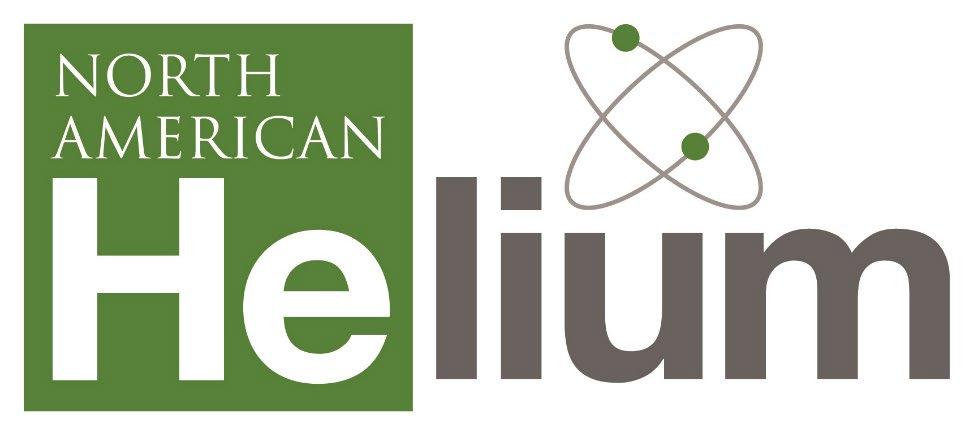









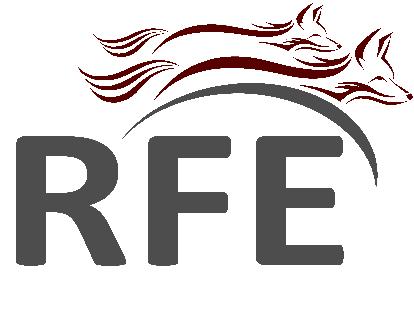






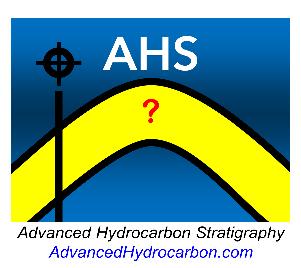

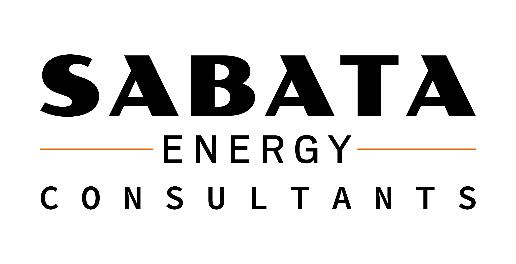

7:45 AM
7:45 – 10:00 am
Session Chairs: Jeff Aldrich and Mark Germinario
Wednesday March 22, 2023
Helium Market Overview, Outlook & Opportunity
Room A
Presenting
Author Phil Kornbluth, Kornbluth Helium Consulting
Abstract This presentation will start out by providing a commercial overview of the Global Helium Business before taking a closer look at the causes of Helium Shortage 4.0, its expected duration and the expected future events that will eventually bring it to an end. The presentation will also discuss the impact of the war in Ukraine on helium markets and the impact of increased concern about geopolitical risk in the Helium Supply Chain. The presentation will take a brief look at longer term trends in the Helium Business and provide a forecast of helium supply vs. demand through the end of the decade. Finally, the presentation will outline the path to monetization for small to mid-size helium projects in North America.

Biography of Presenting
Author
Phil Kornbluth is the founder and President of Kornbluth Helium Consulting, LLC, a helium-focused consultancy that advises clients on all commercial aspects of the Global Helium Business.
Phil is recognized as one of the gas industry’s leading independent commercial experts in the Global Helium Business. He has been employed by several leading industrial gas companies over the last 40 years, including The BOC Group, plc (BOC) and the Matheson Gas subsidiary of Nippon Sanso Holdings (TNSC) and has worked in various roles related to the Helium Business for the last 40 years. While at both BOC and TNSC, Phil held executive positions that included general management and P&L responsibility for their global helium businesses. Phil has been a frequent speaker on helium-related topics at industry conferences, has contributed to and authored numerous helium-related articles and has made important contributions to U.S. helium legislation passed in 1996 and 2013. Phil has been consulting full-time for the last 7 1/2 years.
Kornbluth holds a BS degree in Economics from the University of Pennsylvania’s Wharton School of Business and received a Masters in Business Administration degree from Rider University.



8:30 AM
Presenting
Wednesday March 22, 2023
 Author Sean Brennan, USGS
Author Sean Brennan, USGS

Co-Authors
Jennifer L. Rivera, Brian A. Varela, and Andy J. ParkAbstract The Helium Stewardship Act of 2013 (Public Law 113–40) directed the U.S. Geological Survey (USGS) to create an accounting of the geologic helium resources of the United States. Helium is a nonrenewable resource that is produced from the subsurface, typically in conjunction with other gases. These coproduced gases are either inert, hydrocarbon-rich, or a mixture of the two. Unlike other USGS natural resource assessments, which have focused on undiscovered resources, this assessment provides an estimate of the volume of producible helium currently remaining in known gas accumulations within the United States.
To complete this assessment, a dataset of helium concentrations was compiled from natural gas analyses from gas wells throughout the United States. These data are primarily from the U.S. Bureau of Land Management (BLM) Federal Helium Program, which has been performing gas compositional analyses for over 100 years. These data were supplemented with data from the USGS Energy Resources Program Geochemistry Laboratory Database (EGDB)
(https://certmapper.cr.usgs.gov/data/apps/geochem-db/). The combined dataset is available online both as a data release
(https://www.sciencebase.gov/catalog/item/609e8fe1d34ea221ce3f39e6) and as an interactive map (https://eerscmap.usgs.gov/heapp/).
The helium data were matched to reservoir and production data from proprietary sources for hydrocarbon-bearing reservoirs and internal datasets from the U.S. BLM for non-hydrocarbon reservoirs. These data sources were used to calculate the total volume of producible gas remaining in the helium-bearing reservoirs. The remaining volume of helium in a given reservoir was calculated using the volume of remaining gas and the helium concentration within the reservoir. The remaining helium for each reservoir was then aggregated to regional and national values. The result of the assessment indicates that there is between 231 and 394 billion cubic feet (BCF) of helium remaining in known gas reservoirs throughout the United States, with a mean value of 306 BCF. Roughly 99% of the helium remaining in the United States is in the Rocky Mountain and Midcontinent regions. The results can be found in a USGS Scientific Investigations Report (https://pubs.er.usgs.gov/publication/sir20215085).
Author
Sean Brennan is co-project lead for the Carbon and Energy Storage, Emissions, and Economics Project at the U.S. Geological Survey. His main areas of expertise include sedimentology, stratigraphy, low-temperature geochemistry, and subsurface fluid systematics. His research has focused on assessing non-energy gases in the subsurface, creating assessment methodologies and completing assessments of subsurface fluid resources, and working to understand the creation, migration, and entrapment of various naturally occurring fluids.

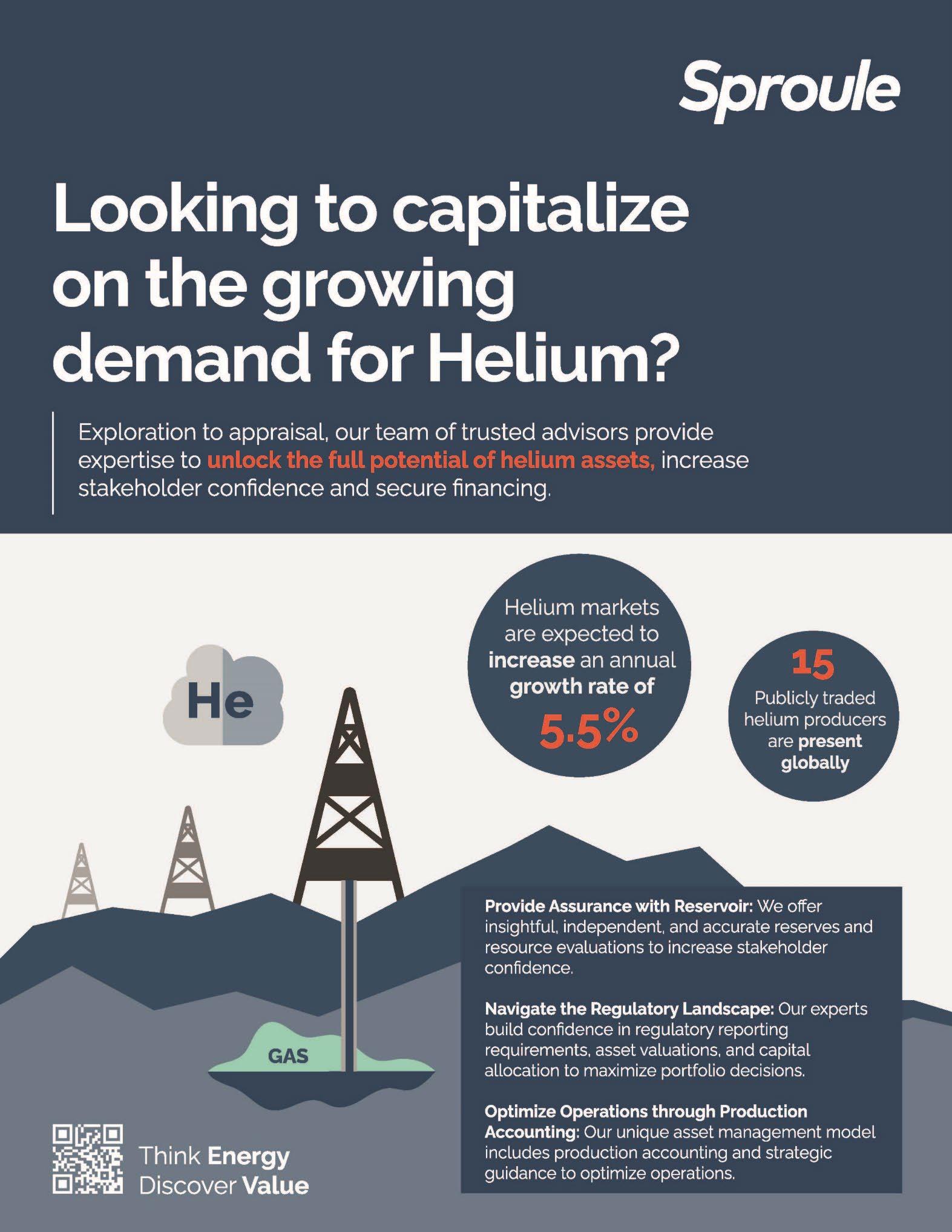
Wednesday March 22, 2023
9:00 AM Once the Federal Helium Reserve is Depleted, will North America be Able to Sustain Helium Self-sufficiency?
Presenting
Author Tim Rynott, Four Corner’s HeliumRoom A
Abstract The Bureau of Land Management’s Federal Helium Reserve (FHR) located ~12 miles northwest of Amarillo, Texas, currently supplies 35-40% of Americas helium needs (~2,000,000 cubic feet of helium/day), was offline for over 6 months in 2022 due to maintenance issues. This development, along with a major disruption in Russia, plus reduced output in Qatar and Algeria, is emblematic of the fragility of our domestic helium supply/demand balance.
If these combined supply disruptions sent shockwaves to many helium end users (e.g.-MRI’s, semi-conductors, cryogenics, lifting applications) - what happens when the final 10-12% of helium in the FHR has been exhausted?
Starting around 2018, a cavalry of small independents with highly varied technical acumen began the charge for new helium discoveries, but to date, the results have been less than stellar. Since helium is 7x lighter than air and can travel through steel given enough time (Hu, 2013), it’s considered one of the more elusive gases on the planet.
Historically, most of the known helium accumulations were found serendipitously while in search of hydrocarbons. Therefore, explicit helium prospecting is still in its infancy. Fortunately, many of the same exploration methods used in oil and gas exploration are utilized in helium exploration, although source and seal play higher priorities in the risk-analysis game.

Modern helium exploration can be subdivided into two broad categories: 1) Drilling host rock overlain by salt/evaporitic seals; and 2) drilling host rock formations with clastic seals (e.g. - hard shales or tight carbonates). There is nothing in the subsurface that can trap helium – but certain formations slow it down better than others – tight salt being the best.
Over millions of years, basins associated with the Ancestral and modern Rockies developed the thickest and most laterally contiguous salt layers. Top subsalt players include ExxonMobil (LaBarge, SW Wyoming); Kinder Morgan/Air Products (Doe Canyon, SW Colorado); Grand Gulf Energy (Red Helium Project, SE Utah); Paradox Resources, (SE Utah); Blue Spruce (LaBarge); Wesco (Three Mile Unit, SE Utah), and most recently, encouraging results by Avanti Helium (Greater Knappen, NW Montana).
Other than Avanti, all of the sub-salt helium accumulations above are associated with Mississippian-aged carbonates. Through hydrothermal dolomitization, these reservoirs possess world class porosities and permeabilities, and in cases like LaBarge and the Red Helium project, can cover areas in the 10’s of square miles. ExxonMobil’s LaBarge Field in Southwest Wyoming currently produces ~20% of the global helium supply and hasn’t needed to drill a development well since 1993.
Non-subsalt fields can have alluring economics when helium is trapped at anonymously shallow depths. The best example is the world class Pinta Dome/Navajo Springs helium accumulation located on the northwestern edge of Arizona’s Holbrook Basin. Although multiple operators have made numerous attempts for a repeat performance of Pinta/Navajo, nothing substantial has been proven to date.
New production in the northeast Arizona (Tohachee Wash) and NW New Mexico (Tocito Dome) have shown a modicum of success, although the 6-7% helium percentages have been offset by low porosity host rock. In SE Colorado and western Kansas, chasing helium bearing lower Pennsylvanian Morrow channel sands utilizing advanced seismic attributes shows promise over time, and a sprinkling of other Mid-Continent projects are in early stages of development.
In SW Saskatchewan the big player is still North American Helium. NAH has raised significant capital; built an enviable midstream; and has drilled ~50 wells to date. Although pre-mature water influx can be an issue, and their estimated current production of over just 300,000 cubic feet of helium/day is relatively minor considering the number of wells drilled to date. Keep in mind the latter is partially due to numerous wells held up by facility construction.
With helium contracts presently ranging from $450 to $500 per thousand cubic feet of helium at the time of this writing, and spot prices in select areas exceeding $1000 per thousand cubic feet, opportunities abound for helium operators. In the near term, high-rate subsalt discoveries could provide immediate relief to Helium Shortage 4.0. In the longer term, the addition of sustained organic growth in the non-subsalt play areas could bode well for counterbalancing the depleting Federal Helium Reserve.
Lastly, capital constraints are problematic. High-rate subsalt wells are CAPEX intensive, and the more promising non-subsalt areas will require hundreds of wells to be drilled to make an impact. Due to the nascent nature of helium exploration, and investors who maintain a proclivity for playing in a familiar sandbox, the headwinds are strong for raising much needed capital. Best estimates suggest $80-100MM USD could be required in the next 4-7 years for North America to be able to turn the helium corner. It’s not easy to envision the origin for this sizable investment. Can the United States become helium self-sufficient for our kids and grandkids? At this early stage of the game, the answer is a hard maybe. Then again, unencumbered hard driving entrepreneurs possess an amazing track record for success when individual gain is the carrot.
Mr. Rynott, founder of Four Corners Helium, LLC (FCH) and Ridge Resources, LLC has spent the majority of the past four decades successfully exploring for oil and gas in over twelve US Basins, including the Gulf of Mexico Deep Water. During his career he has generated or endorsed discoveries with a gross net worth of almost $1Bn US.
The most recent three years has been an immersion in applying natural gas exploration techniques into successful helium endeavors. The newly formed Four Corners Helium technical team, comprised of five geoscientists, three geophysicists, and a top geochemist, has mapped almost ten million acres of the helium charged Colorado Plateau. Having also reviewed helium projects in eastern Colorado, Northern Montana, the Texas Panhandle, New Mexico, and Arizona, the team has gained appreciable insights for the geologic and geochemical challenges inherent in helium exploration.

Joining forces with Grand Gulf Energy (ASX:GGE) allowed FCH to drill one of the most important helium projects in North America, under the operatorship of Valence Resources. The geologic data gathered to date has confirmed most pre-drill expectations, and the Phase II confidential development plan is in progress.
Mr. Rynott has served on multiple leadership positions with the American Association of Petroleum Geologists (AAPG) and is a past president of the Four Corners Geological Society. Mr Rynott has provided domestic and International technical presentations to the AAPG, SEG, GCAGS,

SIPES, Four Corners Oil & Gas Conference, HGS, LGS, and FCGS. He is presently serving as Rocky Mountain Section Counselor for the Division of Professional Affairs of the AAPG and is a member of good standing with the AAPG, DPA (Cert #5803), LOGA, HGS, LGS (Honorary Member), FCGS, and SGE.
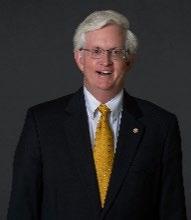
Wednesday March 22, 2023
9:30 AM In Search of a Helium Standard: Regulations and Valuations in Global Capital Markets Room A

Presenting Author Jeff
Aldrich, SprouleCoAuthors Steve Golko, Sproule
Abstract What has been labeled as Helium 4.0 is transforming the world in exploration and production in how to value projects. The UK, Canada, Australia and the US all provide exchanges to raise public capital in order to further various helium developments and each country has their own advantages and challenges when it comes to public capital. Some of the regulatory bodies for the various stock exchanges have issued recent guidance on the reporting of helium volumes and valuations while others are still trying to conclude new guidance. One aspect of the ability to successfully raise that capital is to be able to properly communicate, through the valuation process, the current and future value and potential of the project. Thus, having an understanding of the rules and regulations that vary between the markets is key.
This presentation will highlight the opportunities that exist with each of the primary markets for public capital and review the key elements that are different between the regulations with respect to the reporting of helium; both the volumes and the valuations.
Jeffrey Aldrich is a Senior Geoscientist with Sproule International Company (formally MHA Petroleum Consultants). He has over 40 years of global oil and gas experience working from frontier exploration through appraisal to large development projects. His expertise is in unconventional reservoirs, prospect evaluation, reserve determinations, helium reservoirs and multi-discipline and multi-culture team dynamics. Jeff is the primary Petroskills instructor for “Evaluating and Developing Shale Reservoirs (SRE)” and “Prospect and Play Analysis (PPA)”. Prior to joining MHA he held various management and technical positions with Dart Energy, a Australian global unconventional gas company, Greenpark Energy, a UK CBM company, PetroSA, the South African national oil company, and American companies, Forest Oil, Maxus Energy and Pennzoil Oil and Gas Company. He has a B.S. Degree in Geology from Vanderbilt University and a M.S. Degree in Geology from Texas A&M University. He is an active member in the AAPG having served as the Vice-President, Sections, President of the DEG and is currently the Chairman of the Board of Datapages, LLC. plus active on several committees. He is also a member of SPE, RMAG, DWLS, DIPS and is both Certified Petroleum Geologist (#3791) and a Licensed Professional Geologist in Texas, Louisiana and Alberta. He is author or co-author of over 30 papers and/or technical presentations.


10:30 AM
10:30– 12:00 pm
Session Chairs: Jeff Aldrich and Mark Germinario
Wednesday March 22, 2023
Assessing Helium Accumulation Potential and Resource in Frontier Basins

Presenting Author Chris Ballentine, University of Oxford
Co-Authors Jon Gluyas, University of Durham, Barbara Sherwood Lollar, University of Toronto
Abstract
Room A
At concentrations greater than ~0.3%, in North America, helium becomes the primary value gas and the co-value of high-carbon-footprint CH4 and CO2 is no longer needed for a viable helium reserve. Nevertheless, helium-rich gas field occurrence is itself reliant on co-located gases to exceed the local groundwater bubble point and generate the gas phase necessary for buoyant migration and geological accumulation. Co-genetic N2, generated in the same source rocks as the helium, is another gas that can do this, and has no carbon footprint.
In assessing a sedimentary basin or sub-basin for its commercial helium potential, the approach is similar to that for hydrocarbons. This requires a source rock, a primary expulsion mechanism, secondary migration pathway and a geological trapping structure (e.g. Danabalan et al., 2022). Unlike hydrocarbons, helium is both highly diffusive and requires long geological timescales to accumulate from U+Th radioactive decay in source rocks. Primary helium gas fields may be formed by rapid release of helium from source rocks in a few to tens of millions of years, seen in the East African Rift, to forming and charging over hundreds of millions of years in stable intracontinental areas, such as the Williston Basin N America.
Each helium system is a dynamic process operating over multiple time and length scales. This includes: the capacity of the source rock/s to retain helium (helium generative vs retentive capacity); the mechanism and rate of release of helium from the source rock (steady state vs thermal/tectonic enhanced); the form of secondary migration (diffusive vs advective dissolved/gas phase); the role of the geological architecture in focussing the secondary migration (deep faults, effective seals and lateral migration); the role of co-genetic (N2) or other gases in generating a gas phase, but for CH4 and CO2 also diluting the helium; and the trap seal efficiency relative to helium charge rate. These concepts can be captured and quantified in numerical simulations (Cheng et a., 2023) providing a unique insight into the viability of helium gas field formation in frontier basins.
Danabalan et al., (2022) The Principles of Helium Exploration, Petroleum Geoscience 28 (2), petgeo2021-029
Cheng et al., (2023) Primary N2-He gas field formation in intracratonic sedimentary basins. Nature. in-press
Biography of Presenting
Author
Chris Ballentine graduated from Cambridge with a PhD in Isotope Geochemistry. He worked at the University of Michigan, ETH Zurich, and the University if Manchester before accepting the Professorship and Chair of Geochemistry at the University of Oxford in 2013. He was Head of the Oxford Dept of Earth Sciences from 2017-2022.

Ballentine’s application of isotope geochemistry has changed our understanding of the origin of gases in the Earth’s mantle, the dynamic evolution of the deep Earth, and how the mantle system relates to the origin and evolution of the atmosphere.

Ballentine has also made fundamental advances in quantifying and understanding the nature and origin of gases in the crust and planetary formation. This includes: carbon dioxide behaviour on anthropogenic and geological timescales; commercial helium and hydrogen resource accumulation; biogenic gas production rates; and the discovery of Ga old fluids in the crust relevant to understanding how planets can support subsurface microbial life on planetary timescales.
Ballentine has been internationally recognised for his work in both mantle geochemistry and crustal fluid systems, including the Eni ‘Frontiers in Energy’ prize . The latter was for his contribution to understanding multi-phase fluid systems relevant to the energy industry.
Wednesday March 22, 2023
11:00 AM
Presenting
Author Gwen Brodsky, Aota Technical, LLC.

Abstract This session will demystify what it takes to get a wildcat exploration well approved in Colorado. The Colorado Oil & Gas Conservation Commission introduced new permitting rules in 2021. The session will break down what goes into a successful application and the timeline to anticipate. Learn why the selected surface location matters. Hear about up-front planning that will streamline the permit process. The session will also explain where developers are seeing improving efficiencies at the state.
Biography of Presenting
Ms. Brodsky is principal and founder of Aota Technical, LLC. Aota specializes in steering complex projects from concept to construction. Ms. Brodsky is a leader in pre-permit planning and strategy, permitting, agency consultations, regulatory compliance, and project management. Her expertise is in navigating complicated and sometimes overlapping federal, state, and local requirements to obtain project approvals. She brings unique insight and skill sets from both sides of the regulatory environment. In the private sector, Ms. Brodsky is a former Operations Manager and Project Manager for the environmental engineering firm, Tetra Tech, Inc. In the government sector, she was a former lead in air, water quality, and tribal programs for the U.S. EPA Region 8 Office, U.S. EPA Montana Operations Office, and Montana Department of Environmental Quality.


Wednesday March 22, 2023
11:30 AM The Federal Helium System: A Precedent for the Valuation of
Room A
Presenting
Author Nicholas Kernan and Kelsey Zabrusky, Division of Minerals Evaluation, Department of Interior
Co-Authors Patrick Morton and Shannon Rentz
Abstract The Federal Helium System at Cliffside is located near Amarillo Texas and in FY 2021 supplied approximately 12 percent of domestic demand for helium. Managed by the Bureau of Land Management (BLM), it is made up of the Federal Helium Reserve, the Cliffside Field, the Federal Helium Pipeline, and all the infrastructure associated with the storage, transportation, withdrawal, enrichment and purification of helium. The reserve was established in 1925 as a strategic supply and since then has collected and over one billion cubic feet of helium have been stored at this location. The Helium Privatization Act of 1996 required the Department of the Interior (DOI) start selling the helium stored at Cliffside and in 2013 the Helium Stewardship Act directed the DOI ultimately sell the entire Federal Helium System.
As the helium industry in the United States privatizes, this sale sets a precedent for the future valuation of helium assets. Publicly available data on the Federal Helium System was gathered and interviews with subject matter experts were conducted. This information is summarized in this presentation and used to draw conclusions on how this sale reflects the current value of North American helium reserves.

Biography of Presenting
Author
Nicholas (Nico) Kernan is a geologist within the U.S. Department of Interior (DOI) where he conducts mineral rights valuations of Federal and Native American lands. Before that, he worked for Devon Energy as a development geologist, and for ExxonMobil supporting the generation of play assessments and 3D geo-cellular models. He holds a Bachelor’s degree from Hamilton College and a Master’s degree from the Colorado School of Mines.
Kelsey Zabrusky is a geologist with the Appraisal and Valuation Services Office in the Department of the Interior (DOI) where she conducts mineral evaluations for Federal and Native American lands. In previous Federal service, she worked for the Office of Natural Resources Revenue as a petroleum engineer and the Bureau of Land Management as as Field Office geologist. She also has experience with geologic modeling and resource estimation from the private consulting sector. Kelsey holds a B.S. in Geological Engineering and an M.S. in Geology from Colorado School of Mines.
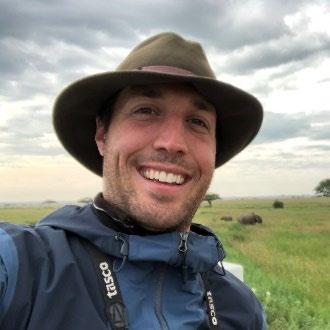

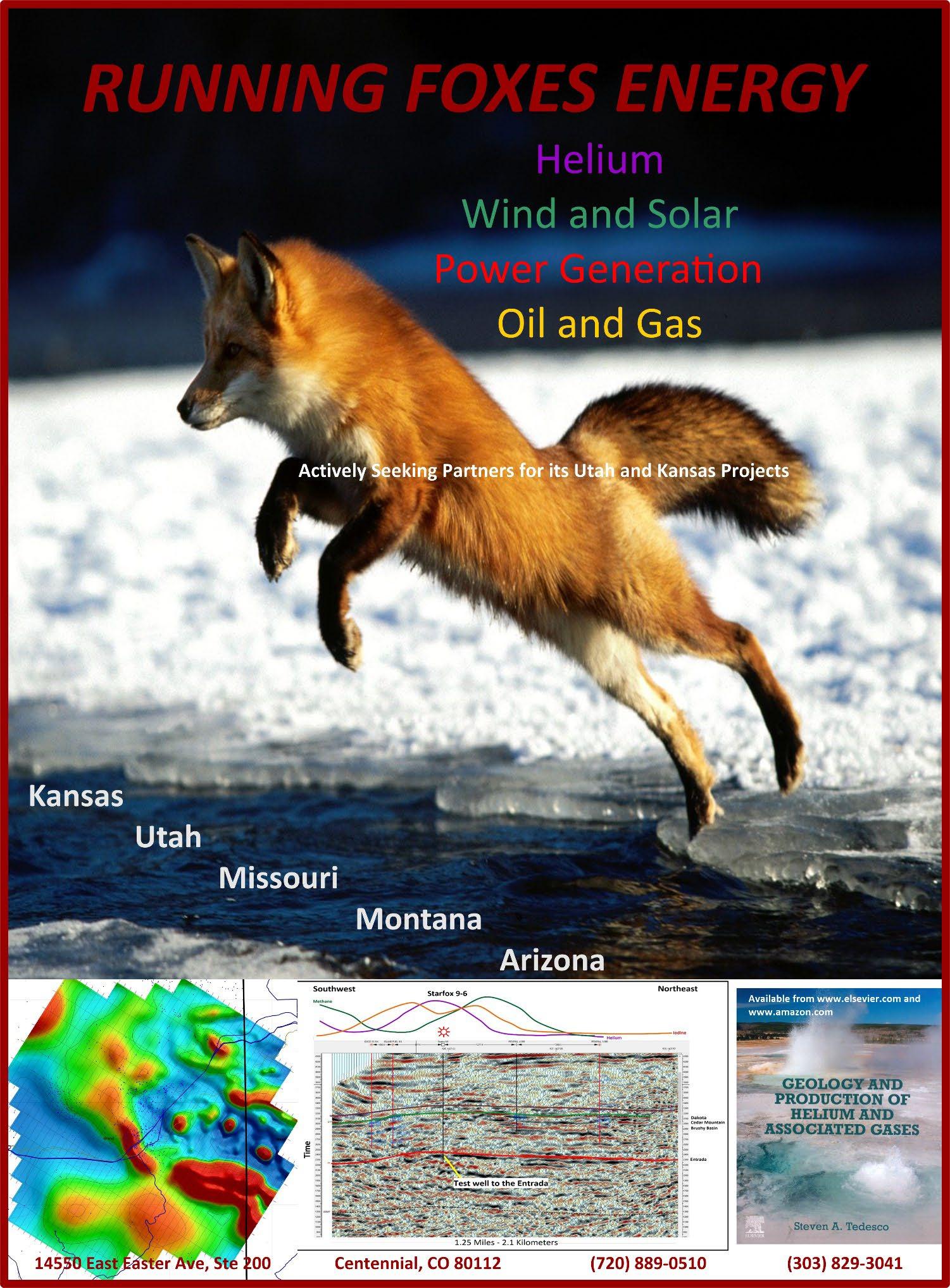
Wednesday March 22, 2023
Presenting
Author Steven Tedesco, Running Foxes EnergyAbstract What is a viable helium prospect? The typical investor vision of an exciting great helium prospect is having a high percentage of the element present. The higher the better. Secondary considerations, at least initially, are gas composition, reservoir characteristics, areal extent of the trap, location power source for processing of gas, presence of water, permeability/porosity, thickness of pay, any surface issues, Crown/Federal, State/Provincial or Fee minerals, disposal of host gas or fluid, location of sale point and market. It is estimated that 8% to 17% of present USA and Canadian natural gas accumulations have helium present. Less than 1% of these have percentages of helium considered economic or viable for recovery. Less than 1% of these turn into productive deposits. The majority (80+%) of worldwide helium production is extracted from either supergiant fields that have very low percentage of helium present (Qatar, Algiers and La Barge-Big Piney) or supergiant fields that have low volume deliverability but helium percentages of up to 3% (Texas Panhandle-Hugoton or Otis-Albert). The remaining helium production is from numerous smaller fields located almost exclusively in the US and Canada with the exception of some isolated areas such as found in Poland. Examples of small but with exceptional helium present are the Harley Dome (Uncompahgre Uplift), Battle Creek and Swift Current anticlines (Williston Basin - southwestern Saskatchewan), Keyes Dome (Oklahoma), Navajo Springs and Pinta (Arizona), Ryersee (Central Uplift, Kansas), Salt Wash (Paradox Basin), Tocito Dome (San Juan Basin); Dineh-Bi-Keyah (Defiance Uplift - Black Mesa Basin), Model Dome (Apishapa Uplift)), Sorrento (Las Animas Arch) or Archer (Las Animas Arch). There are numerous accumulations in the US and Canada with very high helium content associated with a host gas either composed of singularly or in combination with carbon dioxide, methane or nitrogen gases that have proved non-productive. Helium prospects and fields fail because of the lack of significant reserves present, the amount of element present is over-estimated and/or deliverability is non-existent. In the petroleum industry similar smaller fields, even if productive, barely impact worldwide supply.
Three forms of helium prospecting presently dominate the industry: 1) Broad brush assumption that there are numerous undiscovered helium fields across a vast area of land such as Southwestern Saskatchewan, Las Animas County, Colorado and Holbrook Basin, Arizona in the millions of acres is leased and large 3Ds seismic surveys shot. This is a shotgun approach to exploration. 2) Specifically defined prospects based on very detailed geologic and geophysical analysis in areas such as Kansas, Las Animas Arch and the Colorado Plateau. These are typically one-shot ventures with little room for failure. 3) Pick any area in the world that has a hint of helium and wave one’s arm over it and declare the undiscovered potential the maybe present, examples Mid-Continent rift or Greenland.
Defining a helium prospect, once the amount of helium is determined in a gas, starts with focusing on the potential host gas composition. This is followed by areal extent of the accumulation, reservoir characteristics, deliverability and any surface issues. Another important factor typically overlooked is the length of time to bringing helium production to market. Except in a few cases, helium extraction is highly specialized and typically takes a year to build a small facility and the costs typically exceed $3M (US) for a plant. However, prior to that it takes

Author
anywhere from three to 10 years to get to the processing point for many prospects. Other characteristics critical for any good gas prospect are the integrity of the seal above the trap, reservoir continuity, water present, age of water, areal extent of the helium column of gas, disposal of host gases, surface and regulatory issues that inhibit development, power access, distance to processing facilities, and lack of or presence of financing to develop the project. Exclusive of price the vast majority of prospects fail and the failure rate is significantly higher in comparison to petroleum prospecting. Discussed here will be examples of helium prospects as to why some are successful and others fail in order to potentially help recognize critical criteria in the evaluation process.
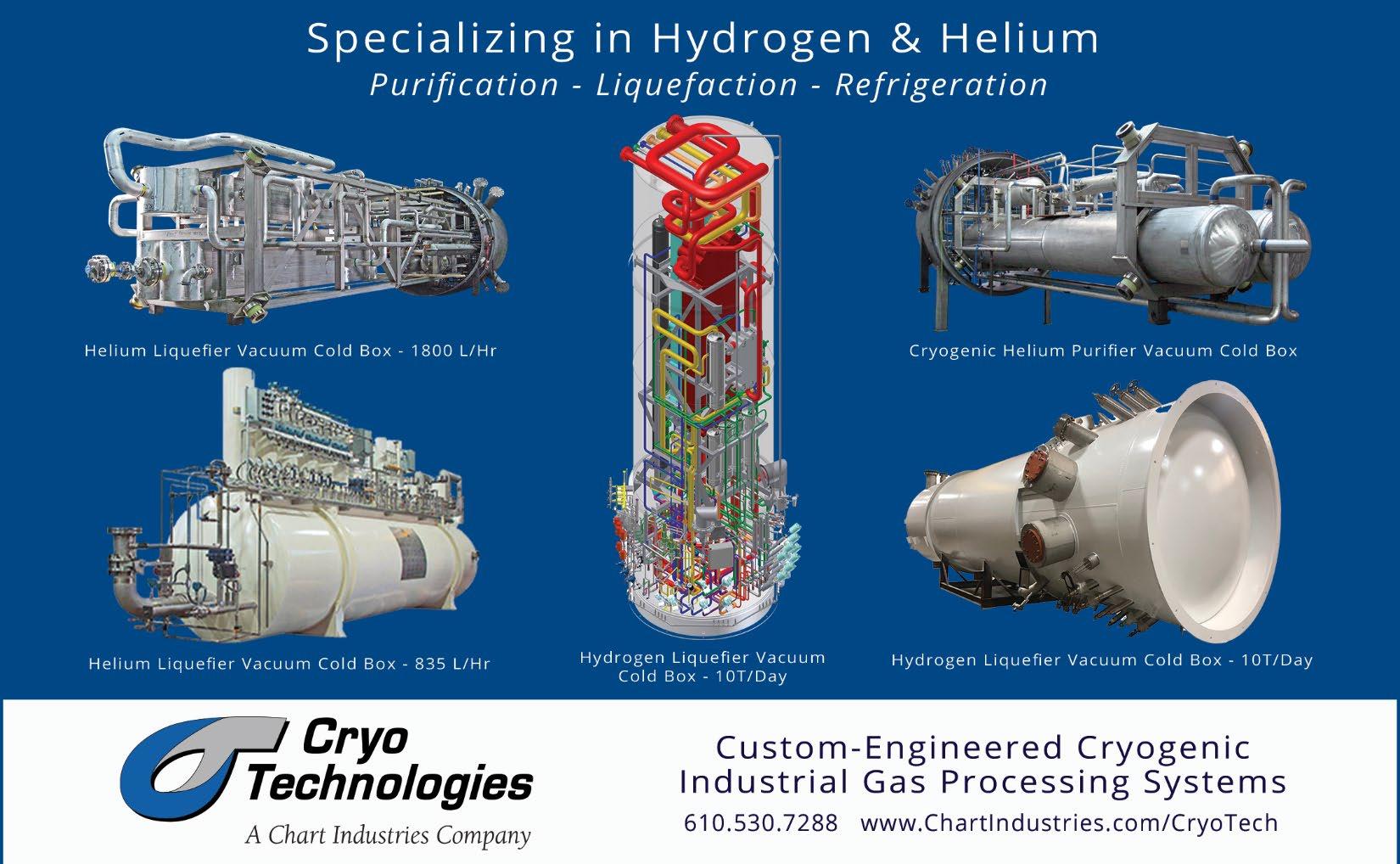

Dr. Steven A. Tedesco is Owner of Running Foxes Petroleum Inc.; Manager of MRE Wind and Solar; and Manager of Starfox Helium Inc. and has been in the resource industry for over 40 years. Dr. Tedesco has a MS from Southern Illinois University and a PhD from Colorado School of Mines. He has written numerous articles on coal, coal-bed methane, surface geochemistry, Pennsylvanian stratigraphy, numerous field studies, use of aeromagnetics in petroleum and resource exploration and gas operation. Dr. Tedesco recently authored the book: Geology and Production of Helium and Associated Gases published this spring by Elsevier and another book entitled Surface Geochemistry in Petroleum Exploration published by Chapman and Hall. Dr. Tedesco is on the Foundation Board for Southern Illinois University. Dr. Tedesco operates over 600 CBM, oil (both conventional and waterflood) and gas wells in Utah, Missouri, Kansas, and Wyoming and has solar and wind assets in Arizona, Utah, Colorado, and New Mexico. Dr. Tedesco is a member of SPE, AAPG, RMAG, Emu Association, and National Buffalo Association.

1:30 PM
1:30 – 3:30 pm – Technical Session 1A
Session Chair: Sean Brennan
Wednesday March 22, 2023
Helium Exploration Workflow in the Four Corners Area, Navajo Nation
Presenting Author Mark Andreason, Navajo Nation Oil and Gas Co.
Co-Authors
Abstract
Room A
Bill Cathey, Earthfield Technology, Michael Cathey, Earthfield Technology, Gary Rice, Geofrontiers CorpVery high concentrations of helium (5-9%) have been historically discovered and produced within the Four Corners region of the Navajo Nation generally as a byproduct of oil and gas exploration. The purposeful exploration for helium deposits requires an understanding of the helium system and what exploratory tools best take advantage of helium’s unique system. From 2020-2021, NNOGC, funded by the US Dept. of Interior, conducted a detailed study over 1.7 million acres in the Four Corners area. The study’s purpose was to better understand the mechanisms that result in the accumulation of high helium deposits and to identify new potential helium resources within the Navajo Lands. Two aspects of the study will be discussed in this presentation: 1) a high-resolution aeromagnetic data (0.25 x 1 mile grid) over an area that contains the highest concentration of known helium deposits to better understand the source, migration, and possibly trapping aspects and 2) a high-density soil gas sampling survey (2232 samples, 0.125 mile grid) over several known and prospective helium deposits to see if there is a relationship between subsurface helium deposits and helium soil gas concentrations. This presentation will show the results and benefits of high-resolution aeromagnetic and helium soil gas data in identifying potential helium prospects. These surveys also gave insights into the workings of the helium system.

The radioactive decay of uranium and thorium within the crust serves as the source for helium. Radioactive decay is only a function of time and thus very old and shallow (below the closure temperature) granitic rocks will have the highest concentrations of stored helium. Release of helium from the granitic source can occur because of orogenic and/or magmatic events. In the Four Corners study area, data suggests that magmatic events, particularly those related to the Oligocene to Miocene (28-19 Ma) Navajo Volcanic field, were the primary release and concentration mechanism for helium from the crustal source rocks. Data also suggests that helium migration from a rising intrusive bodies and basement lineaments is very short before encountering a trap. Data from this study also suggests that the helium fields surrounding the Defiance uplift would have begun charging due to the Navajo Volcanic field magmatic activity or later.
The most helium prospective areas, as determined by this study, are basement highs intersected by basement lineaments and intermediate-depth intrusive bodies. Over two hundred untested potential helium deposits were identified within the study area meeting these criteria. Thirty-five (35) of these basement intersection-intrusive overlap areas had been previously tested resulting in a 45% success rate for finding significant high helium-rich deposits. Helium soil gas sampling
Biography of Presenting
Author
was also found to be indicative of identifying subsurface helium deposits and is a useful and cost-effective method to reduce the exploratory risks.
Mark Andreason is the Vice President Geosciences of the Navajo Nation Oil & Gas Company. Andreason has 37 years in the oil & gas industry working exploration and development projects both internationally and domestically. His international experience in Southeast Asia, Brazil, China, and Russia. And his North American experience in East Texas, West Texas, South Texas, North Texas, Gulf Coast, GOM, Oklahoma basins, Michigan basin, Illinois basin, Appalachian basin, and Four Corners area. Over the course of his career, he has worked for Unocal, SM Energy, Contango Oil & Gas, Castleton Resources. Additionally, he formed and managed a small domestic oil & gas E&P company in the Michigan basin, Northshore Petroleum LLC. Andreason holds a B.S. and M.S. Geological Sciences University of Texas at Austin.
Wednesday March 22, 2023
2:00 PM
Presenting
Helium Exploration in the Rio Grande Rift

Author Bruce Black, Black Exploration
Co-Authors Bruce H. Black, Black Exploration, LLC

Room A
Abstract Black Exploration, LLC will test a large structure on the Zia Pueblo in 2023. The objectives are oil, gas and helium. The structure sits adjacent to some of, if not the largest reported air corrected mantle He and CO2 degassing carbonic and geothermal springs in the Rocky Mountain region. The Zia prospect overlies a classic Synthetic Overlapping Transfer Zone between the northern Albuquerque basin and the southern Espanola basin in the Rio Grande rift in Northern New Mexico. Crustal and probable upper mantel faulting as well as surface geologic mapping, gravity, seismic and geo-microbial techniques have helped delineated the prospect. A possible explanation of why this apparently high mantle derived helium is concentrated near the intersection of the Jemez Lineament and the Rio Grande rift will be discussed.
Biography of
Presenting
Author
Bruce was born in Albuquerque in August, 1936. After receiving his Master’s degree in geology at UNM he was hired by Shell Oil in 1963. He and his family moved to Farmington as a Senior Staff Geologist with Shell Oil in February, 1969. Bruce left Shell in 1970 and started Colorado Plateau Well Logging Co. and Colorado Plateau Geological Services. He went to the University of Southern California and then the University of New Mexico part time while working full time at Shell, and in 1973 received his PhD in Geology. Bruce, with along with a partner, owned and operated the Red Mountain Oil Field. He sold the well logging company and changed the geological services company to Black Oil Inc. in 1982. In 2009 started Black Exploration, LLC to explore for new oil and gas fields. While he has found extensions to pools and a small field in the San Juan Basin, he concentrated his consulting and his geologic efforts, not in known producing basins, but rather in basins and areas where oil and gas has never been found. True Frontier Exploration has been his love.
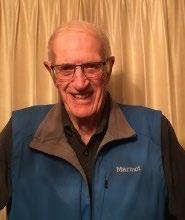
2:30 PM
Presenting
In 1985, he found the first oil to be produced and sold out of the Rio Grande Rift. As new fields are found he believes the Rio Grande Rift will become a new oil and gas province in New Mexico. Bruce stayed in the Naval Reserve after his active duty in the Navy in 1962, and between 1986 and 1996 he was heavily engaged with the United States Navy. He was on the staff of the Naval Reserve Intelligence Command and in 1991 he was promoted to Rear Admiral. In 1992, he became the Commander of the Naval Reserve Intelligence Command with offices in Washington and Dallas.
He retired from the Navy in 1996 after 41 years of active and reserve service and returned to Black Oil and fulltime geologic exploration of Frontier basins. He did keep his hand in the business during his Navy Command tours by consulting for Merrion Oil and Gas in Farmington. In addition to his oil and gas activities he and his son built and own “Kokopelli’s Cave”, an unusual B&B rated in the top 10 in the world by National Geographics Magazine.
He is an avid outdoorsman and pilot. He built and flew a 7/8 scale replica Mk. 9 Spitfire and loves to fly. He is a past president of the Rocky Mountain Section of the American Association of Petroleum Geologists. He has served on many State and local organizations including the New Mexico Museum of Natural History Board of Directors. In the past among other things, he has run for State Representative, was the San Juan County Chairman for the Republican Party and cofounded the San Juan Citizens Against Drug Abuse.
Wednesday March 22, 2023
 Author Edward Coalson, Coyote Oil &Gas Co
Author Edward Coalson, Coyote Oil &Gas Co
Room A
Abstract A survey of helium accumulations in the southern Rocky Mountains suggests that traps and seals for helium are the same as for oil, natural gas, and other subsurface fluids. In fact, helium trapping may be enabled by the presence trapped of oil, natural gas, nitrogen, CO2 and/or very salty water. Especially effective seal rocks are not required for a helium trap.
The largest trapped helium volumes are in anticlinal closures located on basin-margin uplifts, and are primarily traps for CO2. Large stratigraphic traps for helium are not recognized yet, nor are “unconventional” traps. HTD systems exist and offer potential for undiscovered helium accumulations.
Estimates of helium generation rates based on observed local U and Th measurements suggest that in-place radiogenesis alone could not supply the observed helium volumes. It is inferred that most helium in the area derives from relatively rapid flows of magma and/or bulk gas out of the Precambrian lower crust rather than from slower local radiogenesis and subsequent migration. However, at least two helium accumulations have intra-sedimentary helium sources that likely contributed to helium-in-place, one from pre-Mississippian rocks and another from Morrow shales.
Helium deposits, e.g., the world-class Four Corners fields, are more closely related spatially to Tertiary igneous intrusives and mineral deposits than they are to Tertiary extrusives. Helium deposits show only weak spatial correlation with Precambrian lithologies, although detailed knowledge of Precambrian rocks in the subsurface is limited.
Biography of Presenting Author
It is speculated that gas escaping from the lower crust might fractionate on the way toward the surface. That would be expected from the low chemical reactivity of helium compared to CO2.
Ed Coalson has a long history in Rocky Mountain petrophysical and geological exploration and development. Between graduating from the University of Wyoming in 1970 and the present he has worked for several well-known companies, including Amoco Production Company and Davis Oil Company, and also for himself as an independent and consulting geologist. In 2012 he earned a Ph.D. from the Colorado School of Mines while working for Cabot Oil and Gas as exploration manager and senior geologist. He currently consults for Desert Mountain Energy, a helium exploration company focused on the Holbrook Basin of Arizona.
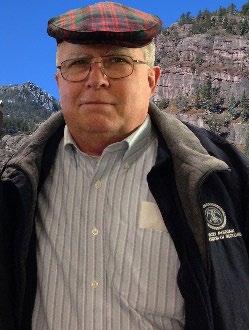
Wednesday March 22, 2023
3:00 PM Utilizing Flowing Material Balance for Assessing Reactivation of Abandoned Helium Fields Applied to the Navajo Springs Fields

Presenting Author Jessica Davey, Desert Mountain Energy
Co-Authors John Seidle
Room A
Abstract Fluctuating oil and gas prices over the last half-century have resulted in the episodic development of many fields which produce helium, either as a byproduct of natural gas production or strictly as a helium play. These fields were typically developed during times of high product prices, only to be shut-in during the following inevitable price crash. As product prices rose and fell, this boom-and-bust cycle was repeated multiple times. Operatorship frequently changed hands and valuable well and reservoir data were lost. With the recent increase in global helium prices, industry is considering new supplies of this noble gas, including the revival of abandoned fields. Regardless of whether our abandoned field recovers helium as a byproduct of hydrocarbon production or is a standalone helium field, this presentation proposes a flowing material balance study for evaluating the technical aspects of reviving production using the Navajo Springs Fields as an example.
This study will also determine if the volume of remaining helium is material. Remaining helium is defined here as the technically recoverable resource (TRR) minus cumulative production. Our definition of helium technically recoverable resources as “those quantities of helium producible using currently available technology and industry practices, regardless of commercial considerations” is very similar to the petroleum TRR defined by the Petroleum Resources Management System (PRMS, 2018). Technically recoverable resources for a shut-in field can be determined by running a decline curve forecast for each well out to a very low rate far below any economic cutoff, say 1 mcfd, then summing all individual well recoveries to obtain a field-level helium TRR. Subtracting cumulative field-wide helium production from the helium TRR gives an estimate of the remaining helium.
Building on the flowing material balance results, we will consider the construction of a development plan to reactivate the field. This plan should include not only bringing shut-in wells back into production and drilling new wells but should also address regulatory and permitting requirements and availability of service company personnel and equipment. A detailed
development plan can help identify any data gaps and include plans to address them, such as running additional wireline logs, cutting additional cores, or obtaining gas samples.

Reactivation of abandoned helium fields is risky business but can be very profitable. This presentation will demonstrate a process by which we can identify attractive revival candidates and, on the other hand, provide distinct exit points for fields that we find to be unsuitable.

Jessica Davey is a geologist and currently works as Vice President of Land and Director for Desert Mountain Energy Corp. She received her B.S. degree in Applied Geology from MSU Denver and her M.S. degree in Global Energy Management from the University of Colorado Denver. Jessica possesses geological field experience in Ireland, Germany, and the United States and has provided geologic, land, and regulatory support on projects in Australia, Europe, Africa, South America, and throughout the oil and gas basins of the United States and Canada. Jessica is passionate about ethically based wellrounded economic and feasibility studies in oil and gas and minerals development projects and has presented at several conferences, including AIPG Annual Conferences on topics including resource evaluation, environmental studies, and business and professional ethics.


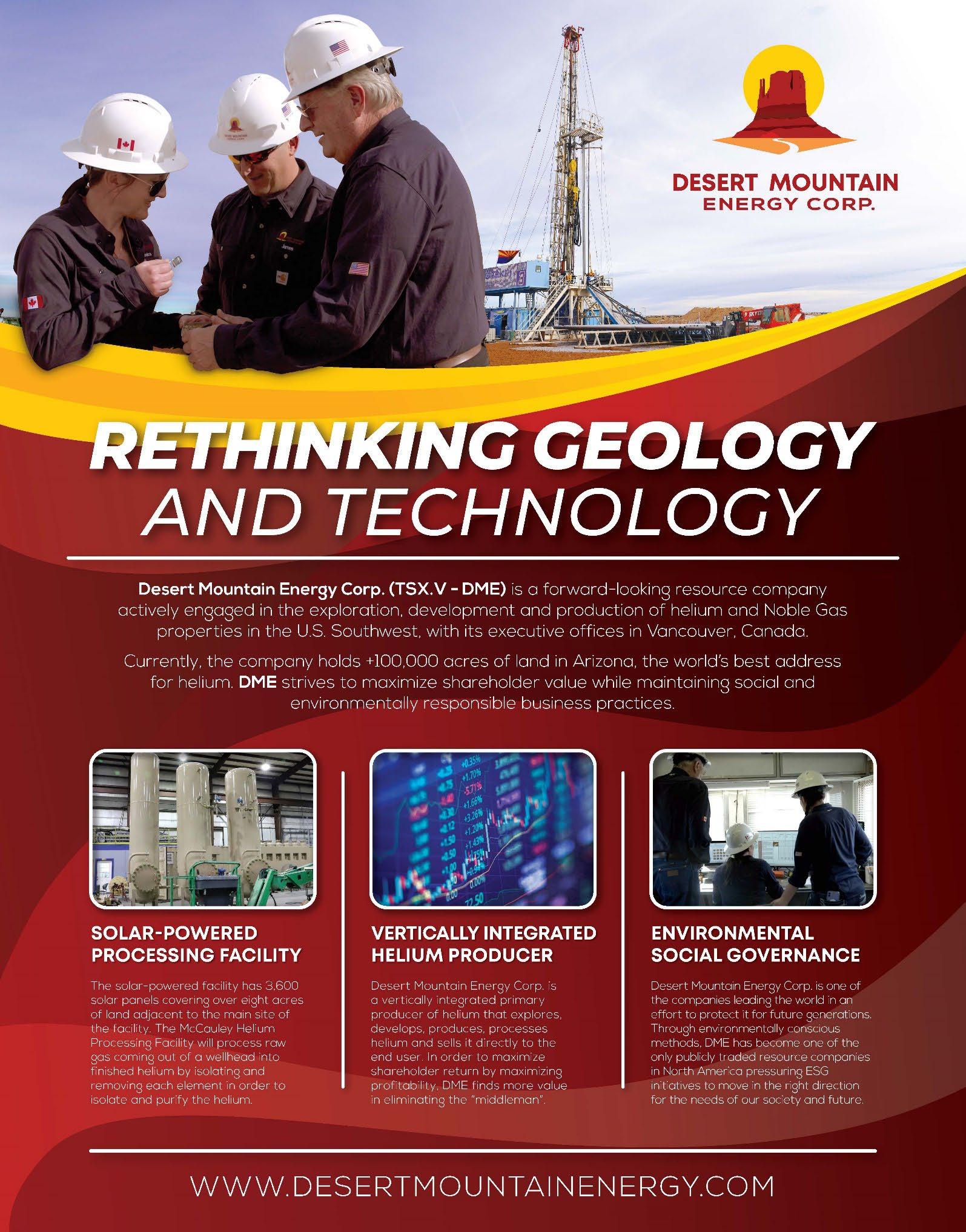
1:30 – 3:30 pm – Technical Session 1B
Session Chair: Mark Germinario
Wednesday March 22, 2023
1:30 PM Transportation of Natural Gas Containing Helium from Wellhead to Refinery
Presenting Author William L. Horn, Metropolitan State University of Denver
Room B
Co-Authors Barbara Echohawk, Metropolitan State University of Denver, Uwe Kackstaetter, Metropolitan State University of Denver
Abstract Loss of helium is likely to occur during transport of natural gas from wellhead to refinery. Liquid helium boils at 4.2 K (-268.95° C), and gaseous helium readily diffuses and escapes containment by effusion. Appropriate containment vessels and valves are required to minimize helium loss during transport and storage. Shared methods by industry leaders provide a model of best practices for minimizing helium leakage. Research from the nuclear industry provides insights into ideal valve materials for containing helium leakage. Leakage rates are calculated for helium in a gaseous mixture in a typical tanker truck under a range of temperature and pressure conditions; cumulative leakage volume is calculated for specific pressure-temperature combinations. Learning to minimize helium lost to leakage during transport and storage is critical to successful production of this strategic resource.
Biography of Presenting
Author
William Horn is in his senior year as an undergraduate student at the Metropolitan State University of Denver and is majoring in Applied Geology. Prior to his current educational endeavors, he spent the last 25 years in the welding, fabrication, and welding inspection world. Of those years, 16 have specifically focused on quality assurance and quality control of welding and fabrication processes. He currently maintains the credential of Senior Certified Welding Inspector (SCWI) through the American Welding Society, and teaches welding to corporate clients at the Community College of Denver.
Wednesday March 22, 2023
2:00 PM
Presenting Author Rocky Freeman, Kelley Leasing Partners, LLC
Room B
Abstract Transportation of compressed helium has evolved from 60 mcf trailers to 600 mcf trailers mainly in the last 20 years. We explore the different types and sizes of gaseous helium transport equipment and compare them over different volumes and distances to find the best solution for each transport opportunity.

Biography of Presenting
Author
Rocky Freeman graduated Oklahoma State University with a BS in Petroleum Engineering Technology. After graduating Rocky began his career in the TX Panhandle working as a Field Engineer for an oilfield service company. This work covered Western Kansas, Western Oklahoma and the TX Panhandle. After 5 years in this area Rocky transitioned to a District Engineering level in the Permian and managed lab personnel as well as field engineering personnel on a 24/7 basis for 3 years before promoting to Region Engineer in Midland, TX.
While working in Midland, 100% dedication was devoted to Chevron and their work across the Permian and SE New Mexico. Work included Reservoir Evaluation, Stimulation design and implementation, Production Optimization and Remedial and Primary Cement design / operations.
In 1998 Rocky began work for BP America operations out of Amarillo and worked heavily with production optimization, reservoir analysis and completions design for the 3600 well operation across the panhandle and Western Oklahoma. From 2006 until 2012 Rocky carried on duties as completions design engineer for Baker Hughes covering the states of Kansas and Oklahoma as well as the TX Panhandle and Arkansas.
Rocky’s career turned more to Completions design and reservoir analysis working for Continental Resources out of Oklahoma City and covered the Bakken in North Dakota for 6 years. Then in 2018 he had a chance to work in the DJ basin in Denver for Extraction Oil and Gas and did so until the pandemic in 2020. In June 2021 he had an opportunity to switch career paths somewhat and joined Ken Kelley working for Kelley Leasing Partners.

Wednesday March 22, 2023 2:30 PM
Presenting
Author Paul Terrien, Air Liquide
Co-Authors Alex Augstine, Air Liquide, Sandeep Karode, Air Liquide, Kirsten Maki, Air Liquide, Marlon McDougall, North American Helium, Vance Blydo, North American Helium, Nim Mohammadi, Xebec
Abstract Helium has been in extremely short supply over the last few years. The limitation is the discovery and development of new helium resources. Most of the helium in the world is produced from large natural gas reserves, as a byproduct of processing. The typical process consists of cryogenic separation to enrich helium. It is generally cost effective to produce helium from such conventional sources because most of the cryogenic treatment is required just for the production of natural gas. In recent years the growth in helium demand and depletion of those historic resources justify deployment of modular helium systems to smaller non Hydrocarbon based gas fields.
A few natural resources exist that contain substantial concentrations of helium but with no commercially attractive amounts of methane or heavy hydrocarbons, often with nitrogen being the main component. The volumes of helium can also be relatively small when compared to the large helium sources of the world. While cryogenics would be an efficient way to manage the

Author
bulk separation required, the capital cost would be prohibitive. Even more importantly, during a shortage, the time-to-market for such technology to be implemented is too long.
The purpose of this presentation is to present a new non-cryogenic process to tackle these specific types of helium rich resources. This patented new process is based only on plug and play, modularized skids using two key technologies: Membrane Separation and Pressure Swing Adsorption (PSA).

This approach has been very successfully employed by North American Helium in Saskatchewan as one large plant was commissioned in 2021 (Battle Creek, SK) and numerous others of various sizes are in construction. Relevant field data and learnings will be shared during this presentation.
Both technologies used present best in class performances and uniquely compact gas treatment capabilities:
• Hollow fiber membrane technology with the highest helium flux and optimal helium / nitrogen selectivity. These are arranged in simple small skids which fully standardized and modularized, allowing for easy sizing of the main membrane treatment stage.
• 9-bed Pressure Swing Adsorption process using a fast cycle PSA and rotary valves for maximum compactness and reliability.
Paul Terrien is currently the director of hydrogen and helium membrane business units at Air Liquide Global Markets & Technology Americas. He has been working for Air Liquide for the last 15 years. He started out as a process engineer and since then he has held various technical and commercial positions in France and in the US covering various technologies including carbon capture, hydrogen production, natural gas conditioning and helium purification. For the past 6 years, his focus has been mainly gas separation membranes for natural gas, helium and hydrogen purification. Paul is an Air Liquide International Expert, he has presented at around 10 technical conferences and has more than 20 patents.
Wednesday March 22, 2023
3:00 PM Raw Gas Processing – Selecting
Room B
Presenting
Author Forrest Churchill, SIGIT
Co-Author Wayne Monnery, SIGIT
Abstract This presentation will provide an analysis of various major processing technologies to can be deployed to support the raw gas production profiles seen in Helium formations. Major processing equipment such as cryogenic, pressure swing adsorption, and membrane technology will be discussed regarding the considerations related to costs, reliability, product quality capabilities, and contaminant robustness. We will present high-level process flow diagrams and share publicly available information with the organization. Let’s answer the question, “What is the right processing equipment for my operations?”.

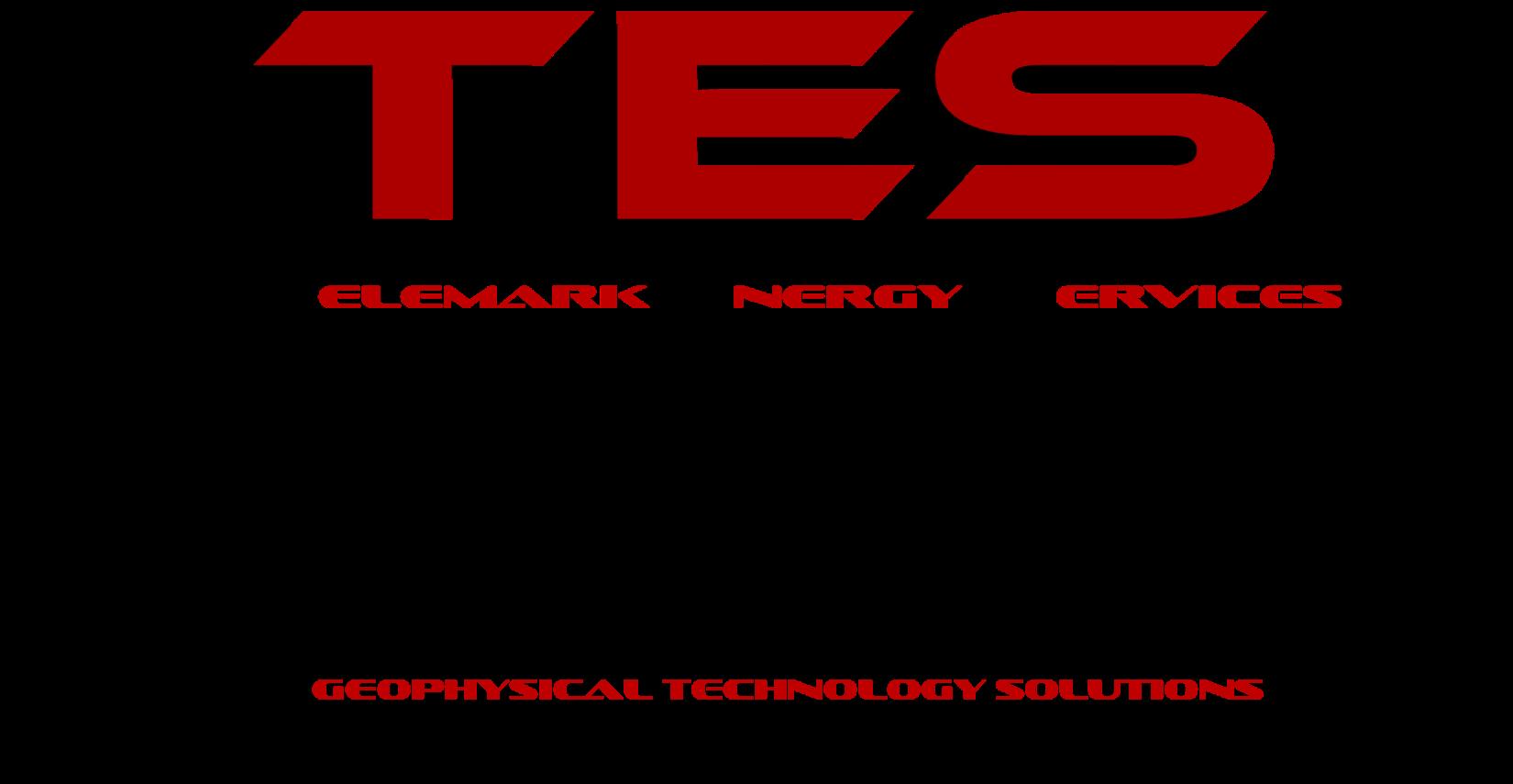

Forrest Churchill is a partner at SIGIT, working to help clients develop execution strategies for their industrial projects. His experience as a chemical engineer with exposure to gas procession, food and beverage, refining, specialty chemical, and industrial processes across North America has provided him with the knowledge to align engineering deliverables with execution strategies. His goal is to help operators meet expectations for the construction and operations of industrial projects.

4:00 – 5:30 pm – Technical Session 2A
Session Chair: Sean Brennan
Wednesday March 22, 2023
4:30 PM Helium & Other Inert Gases in the Piceance Basin, Colorado

Presenting
Author Bryan McDowell, Sabata Energy Corp.
Room A
Abstract The Piceance and Uinta basins are well known for their hydrocarbon gas reserves, however, significant volumes of helium, nitrogen, and carbon dioxide are found near the Uncompahgre Uplift and Douglas Creek Arch. These gases are found primarily in the Entrada, Morrison, Dakota, Frontier, and Prairie Canyon Member of the Mancos Shale formations. Simple scatter plots of Helium vs. Nitrogen yield two trend lines McDowell et al (2017) interpreted to represent discrete inert gas systems whereby gas fractionation/mixing is controlled by initial gas composition, migration pathway, and migration distance. Based on this interpretation, helium and nitrogen are sourced from Precambrian basement and/or Pennsylvanian red beds, migrate vertically via faults and fractures to the Entrada Formation, and then migrate laterally towards basinal highs until being trapped in conventional stratigraphic and structural traps. The Morrison, Cedar Mountain, and Mancos formations appear to form imperfect top seals, thus allowing limited amounts of inert gases to migrate vertically where they are progressively diluted by hydrocarbon gases from overlying petroleum systems. This is readily seen by a continuous decline in helium abundance in increasingly younger stratigraphic intervals (i.e., Entrada, Dakota, Frontier, and Prairie Canyon, respectively). Carbon dioxide regularly complicates these trends and can become a major exploration risk; however, its occurrence and distribution has not been studied in detail. During this talk, we will revisit the conclusions of McDowell et al (2017) by (1) focusing more closely on the margins of the Uncompahgre uplift where helium is most abundant; (2) attempt to quantify helium dilution via carbon dioxide in these areas; and (3) highlight areas of potential exploration based on new data available at the Colorado Oil & Gas Conservation Commission (COGCC).
Bryan McDowell is a geologist/reservoir engineer specialized in integrating geologic and petroleum engineering datasets for multidisciplinary assessments in oil & gas reservoirs. He was an engineering/geoscience technical advisor for asset development at Discovery Natural Resources before starting Sabata in 2020.
Bryan received his B.Sc., Geology at Texas A&M University in 2010 and his M.Sc., Petroleum Engineering at Colorado School of Mines in 2018. He finishing his Ph.D., Geology at Colorado School of Mines and has worked in the oilfield since 2011.
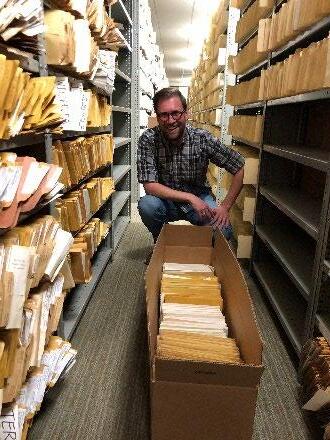



Wednesday March 22, 2023

Presenting Author William Craddock, Geology, Energy & Minerals Science Center, USGS
Co-Authors
Madalyn Blondes, Geology, Energy & Minerals Science Center, USGS, Christina DeVera, Geology, Energy & Minerals Science Center, USGS, Andrew Hunt, Noble Gas Laboratory, USGS
Abstract The Colorado Plateau hosts several large accumulations of naturally occurring, non-hydrocarbon gases, including CO2, N2, and noble gases such as He, making it a good field location to study the fluxes of these gases within the crust and to the atmosphere. In this study, we present a compilation of 1,252 published gas-composition measurements. The data reveal at least three natural gas associations in the field area, which are dominated by hydrocarbons, CO2, and N2+He+Ar, respectively. Most gas accumulations of the region exhibit compositions that are intermediate between the three end members. The first non-hydrocarbon gas association is characterized by very high-purity CO2, in excess of 75 mole % (hereafter, %). Many of these highpurity CO2 fields have recently been well described and interpreted as magmatic in origin. The second non-hydrocarbon gas association is less well described on the Colorado Plateau. It exhibits He concentrations on the order of 1% to 10%, and centered log ratio biplots show that He occurs proportionally to both N2 and Ar. Overall ratios of N2 to He to Ar are ≈100:10:1 and correlation in concentrations of these gases suggests that they have been sourced from the same reservoir and/or by a common process. To complement the analysis of the gascomposition data, stable isotope and noble-gas isotope measurements are compiled from 11 representative fields. Gas sampled from the Harley Dome gas field in Utah contains nearly pure N2+He+Ar. The various compositional and stable and noble gas isotopic data for this gas indicate that noble gas molecule/isotope ratios are near crustal radiogenic production values and also suggest a crustal N2 source. Across the field area, most of the high-purity N2+He+Ar gas accumulations are associated with the mapped surface trace of structures or sutures in the Precambrian basement and are often accumulated in lower parts of the overlying Phanerozoic sedimentary cover. The high-purity gas association mostly occurs in areas interior to the plateau that are characterized by a narrow range of elevated, moderate heat flow values (53–74 mW/m2) in the ancient (1.8–1.6 Ga) basement terranes of the region. Collectively, the geochemical and geological data suggest that (1) the N2+He+Ar gas association is sourced from a crustal reservoir, (2) the gas association migrates preferentially along structures in the Precambrian basement, and (3) the sourcing process relates to heating of the crust. Prospecting for noble-gas accumulations may target areas with elevated Cenozoic heat flow, ancient crust, and deep crustal structures that focus gas migration. High-purity CO2 gas may also migrate through regional basement structures, however, there is not always a clear spatial association. Rather, CO2 accumulations are more clearly associated with zones of high heat flow (>63 mW/m2) that sit above hot upper mantle and are proximal to Cenozoic volcanic rocks near the plateau margins. These observations are consistent with previous interpretations of a magmatic gas source, which were based on geochemical measurements.
William Craddock is a Supervisory Research Geologist at the U.S. Geological Survey. He studies natural resources, especially petroleum and non-hydrocarbon gases, and also landscape evolution and tectonics. He has degrees in geology from Penn State (PhD), UC Santa Barbara (MS), and William and Mary (BS).



4:00 PM
4:00 – 5:30 pm – Technical Session 2B
Session Chair: Jeff Aldrich
Wednesday March 22, 2023
The Current Status and Commercialization of the Virginia Helium Field in Free State, South Africa: An Analogue for Fractured Basement Plays
Presenting Author Fin Stuart, Scottish Univ. Environmental Research Centre
Room B
Co-Authors Stuart Gilfillan, University of Edinburgh, Stefano Marani, Renergen, Khalid Patel, Renergen, Orestis Gazetas, SUERC
Abstract The high He content of surface and deep mine gases in the Witswatersrand Basin, South Africa, has been known for many decades. Exploration by Renergen Ltd. in the Virginia licence area in the Free State, southern-most extent of the Witswatersrand Basin, has led to the discovery of gases with up to 12% He emanating along the main N-S faults in the basin. The helium likely originates in the exceptionally U-rich “reef” rocks hosted by the 2.8-3 Ga Dominion and Central Rand Group metasedimentary rocks 2-3 km below the surface. These are largely conglomerates and coarse sandstone palaeo-placer deposits that are host of the huge detrital gold reserves that have been mined since the late 19th century. The role of the underlying Archaean basement in supplying He is not fully defined but given the low geothermal gradient is unlikely to be at temperature where He is lost by diffusion from the main U-bearing accessory minerals. The gases are methane-rich with little N and no significant H or CO2. The stable (d13C-dD) isotope composition of the methane implies that it is dominantly microbial in origin with possibly a small contribution of abiotic methane. The origin of the microbial methane remains enigmatic. The reefs contain volumetrically small C-rich veins and blebs that may be related to the 1.8 Ga Vredefort impact and provide a link to the ultimate source of methane. The methane is isotopically distinct from the He-rich gases further north in the Wits Basin where a thermogenic source appears to dominate. This implies that regionally there is no obvious genetic link between the He and methane.
Based on understanding of the regional geology we estimate that over 400 billion cubic feet of helium is present in the Renergen Production Right area. Helium is extracted from shallow (200400 m) boreholes drilled into deep-rooted steeply dipping N-S trending fault structures. Gas pressures are highest in faults beneath dolerite sills within the shallow Karoo sequence. Current published reserve estimates are gross P50 407 BCF of methane and 13.5 BCF of helium which are being developed by an onsite LNG and liquified helium processing facility. There are an additional 241 BCF C2 Contingent Resources of methane and 8.0 BCF C2 Contingent Resources of helium, plus a large volume of Prospective Resources. The Virginia Gas Field may prove a useful analogue of fractured basement plays and there may be much to learn from how Renergen has commercialized this important new discovery.
Fin Stuart is a Professor of Isotope Geochemistry at University of Glasgow, with in expertise in the application of geochemical techniques for tracing fluids in the deep Earth.



4:30 PM
Presenting
Wednesday March 22, 2023
Author Benoît Hauville, 45-8 Energy

Room B
Abstract European helium consumption currently accounts for nearly 25% of global supplies, while production is almost non-existent.
At a time when long-distance transport duration is becoming uncertain and, in a world, where real efforts shall be made to reduce carbon footprint, securing affordable helium has become a real challenge for the many users who depend on it.
It is for this reason that 45-8 Energy embarked five years ago on helium exploration and production in Europe, an area where geology is strongly shaped by the Hercynian orogeny which occurred the end of the Paleozoic era.
Given the very long generation process, such relatively “young” geological context is theoretically far less favorable for helium generation/accumulation compared to old Precambrian cratons such as the one preserved in Australia, South Africa or South America. In reality, it has proven to be largely prospective and many European Carboniferous and Permian basins in Europe exhibit high N2 and/or CO2 fractions associated with significant helium enrichment (ranging from thousands of ppm to several %).
Exploring close to consumptions areas offers significant surface processing simplification favored by an overall supply chain shortening. It particularly opens the door to gaseous helium sales thanks to the relative short distances involved which enables to get rid of helium liquefaction, a high energy consumption process which is, in top of that, most of the time not necessary as nearly 75% of helium needs in Europe is at gaseous state.
Considering innovative co-valuations of other gases associated with helium (depending on the geological context: natural hydrogen, methane converted to electricity or blue hydrogen, food grade carbon dioxide, geothermal energy…) can also bring synergies and CAPEX/OPEX mutualization making small fields or fields with modest He content ultimately profitable.

As a result, combination of local helium production with nearby consumption and co-valuation of other resources can, at the end, bring about projects with a much lower carbon footprint compared to the current long distance supply chain from overseas and propose a real solution to the recurrent shortages.
Co-founder and chief executive of the French company 45-8 ENERGY, Benoît HAUVILLE has a geoscience background (MSc in Geology and Geophysics) and had been active in the O&G industry within the French company TotalEnergies for nearly 15 years in various places of the world (Europe, Asia, Africa, South America). Being aware of the today’s and future challenge to supply helium to the numerous industries which are now depending on it, he is now using his subsurface competencies to industrial gases exploration in Europe with ambition to produce helium and natural hydrogen locally, get rid of transportations constrains and propose low carbon footprint supplies.


5:00
Wednesday March 22, 2023

Presenting
Author Steven Tedesco, Running Foxes Energy IncAbstract Over the past decades it has been increasingly recognized that the earth, like the moon, has been bombarded continually by meteorites in the historical past. The dynamic nature of the earth, on-going erosion and sedimentation has caused many of these resulting craters to be obscured or removed. However, the long-lasting effects of these impacts tend to last through the ages. The effects of many of these impacts are typically difficult to discern because of the dynamic processes on-going across the planet. Within the petroleum and mineral industry, a number of discoveries over the past 100 years have identified several productive accumulations to be related to these impacts. The implication in relation to helium accumulations is significant in that an impact’s shock waves can penetrate and fracture the sedimentary rock and well into the upper crust. These shock waves could be the cause of the release and migration of various gases and fluids including helium, and create or enhance fault/fracture pathways from the crust and lower sedimentary sequence upwards in the shallow upper sedimentary, igneous or metamorphic section. Mars and the Moon contain 635,000 (and counting) and 9,137 impact craters respectively, based on present day analysis. On the moon 5,185 craters are over 12 miles in diameter and some have been dated back as far 3 billion years. The size of impacts required for releasing helium trapped from the upper mantle and lower crust are probably relatively large impact type. Based on the number of large impacts seen on the Moon and Mars were probably fairly numerous on the Earth through time. Impact craters from smaller meteorites are typically very local and some petroleum examples of these are the Ames (Oklahoma) or Red Wing (North Dakota). Larger impact craters that may have influenced helium migration have been identified are the Black Mesa Basin in Arizona, Kalahari/Vredefort basin, South Africa, and Mongol-Okhotsk and Baikal-Patom regions, USSR. The Michigan Basin, because of its circular nature has been suggested as a major impact crater prior to Paleozoic deposition. An example of a very productive mineral resource related to an impact crater is the Sudbury complex, it is a world producer of nickel in western Ontario that was formed when a meteorite met with an active volcanic system. Petroleum productive reservoirs have been identified as forming on the rims of impact craters as at Avak, North Slope, Alaska. Examples of smaller craters that are petroleum productive across their interior and periphery are the Ames Creek, Major County, Oklahoma and the Marquez Dome, Leon County, Texas impacts. Impact craters are geologic and tectonic events that have been on-going since the formation of the earth. The shape and internal geometry of every crater is unique and does not follow a set model, thus complicating exploration for petroleum, rare earth, base metals, and helium in relation to these features. These impacts can affect reservoir and source rocks at the time of impact or millions of years later by controlling deposition. The recognition of impact craters as a potential defining phenomenon for any resource play represents a needed additional tool in the explorationist toolbox.

Dr. Steven A. Tedesco is Owner of Running Foxes Petroleum Inc.; Manager of MRE Wind and Solar; and Manager of Starfox Helium Inc. and has been in the resource industry for over 40 years. Dr. Tedesco has a MS from Southern Illinois University and a PhD from Colorado School of Mines. He has written numerous articles on coal, coal-bed methane, surface geochemistry, Pennsylvanian stratigraphy, numerous field studies, use of aeromagnetics in petroleum and resource exploration and gas operation. Dr. Tedesco recently authored the book: Geology and Production of Helium and Associated Gases published this spring by Elsevier and another book entitled Surface Geochemistry in Petroleum Exploration published by Chapman and Hall. Dr. Tedesco is on the Foundation Board for Southern Illinois University. Dr. Tedesco operates over 600 CBM, oil (both conventional and waterflood) and gas wells in Utah, Missouri, Kansas, and Wyoming and has solar and wind assets in Arizona, Utah, Colorado, and New Mexico. Dr. Tedesco is a member of SPE, AAPG, RMAG, Emu Association, and National Buffalo Association.



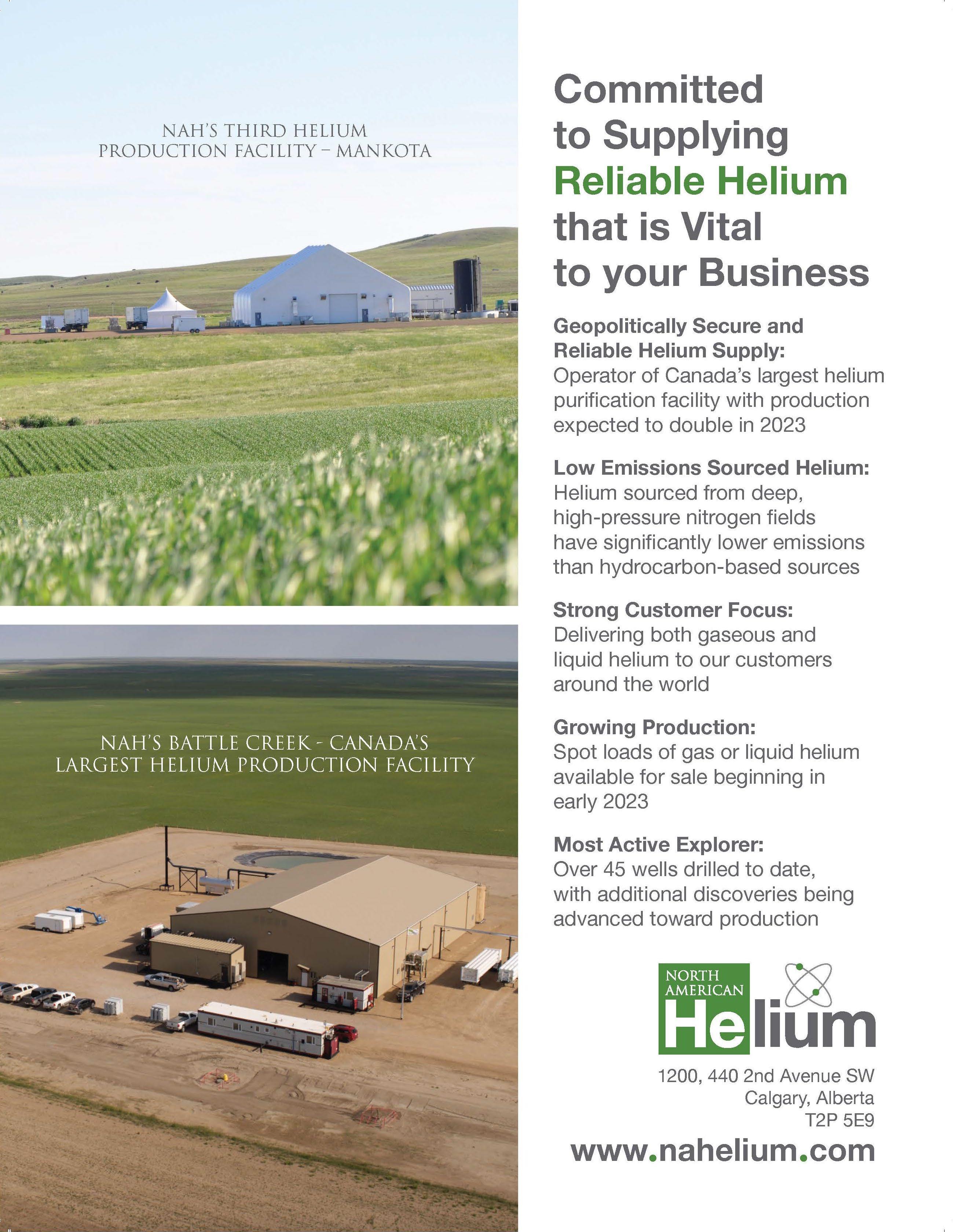
8:00 AM
Presenting
March 23, 2023
8 – 9:30 am – Technical Session 3A
Session Chair: Michele Bishop
Thursday March 23, 2023
Helium Landscape in the Western Canadian Sedimentary Basin, Canada
 Author Genga Nadaraju, Avanti Helium Corp.
Author Genga Nadaraju, Avanti Helium Corp.
Room A
Abstract The Western Canadian Sedimentary Basin (WSCB) is the second largest intracratonic basin in the world, covering the western provinces of Canada which include Northeastern British Columbia, Alberta, Southern Saskatchewan, and Southwestern Manitoba. The basin is rich with a vast resource of oil, coal, and natural gas which have been exploited and developed for over a century. Helium exploration however is new in this basin and the hunt for helium as a primary target has been gaining momentum since 2015. Important market changes, including shutdown of the U.S. Helium Reserve, the emergence of high geopolitical risk to the producers in eastern parts of our globe, along with the declaration of helium as a critical mineral in Canada, have driven an explosion of interest in exploring for and developing helium reserves in both the United States and Canada. Within the WCSB, helium exploration and development activities have emerged in the provinces of Saskatchewan and Alberta.
Southern Saskatchewan is the hub for Western Canadian helium activity and has a favourable jurisdiction for helium prospecting. The Government of Saskatchewan blanketed the southern region of the province for helium exploration, providing permits that grant the right to explore for and produce helium. The province has also applied a crown royalty of 4.25% to helium production since the early sixties and has recently encouraged growth in the industry by offering a 15% transferable royalty credit rebates for eligible costs associated with new helium processing and liquification projects, pursuant to its Oil and Gas Processing Investment Incentive program [2]. There are several companies actively exploring and developing the helium play in the region. To year end 2022, there are thirteen publicly disclosed helium wells on production with a total helium production of ~290 mcf/d [3]. There are also two shut in wells that have a production history of over ten years. The geographic locations of the helium fields in this region are rich with nitrogen with low concentrations of methane and carbon dioxide. Considered ‘green’ helium, the development in these fields will have a smaller environmental footprint and lower or net zero emissions
The province of Alberta has also taken steps to promote helium exploration by granting a helium specific royalty rate of 4.25 % effective April 2020. In Alberta, helium drilling rights are included in oil and gas leases. There are two regions that have been a focus for helium: helium associated with nitrogen in Southern Alberta and helium associated with natural gas in the northern part of the province in the Peace River Arch area. There are only a handful of companies that are
Biography of Presenting
Author
currently active in this province. Alberta has few years of helium production history, with only three publicly disclosed wells in Southern Alberta, which have a total helium production of ~80 mcf/d at year end 2022 [3].
British Columbia has not announced a helium royalty rate or other regulatory changes or incentives to date. Studies done by the British Columbia Oil and Gas Commission (OGC) estimates 430 natural gas pools in Northeastern British Columbia with 0.04% mole fraction of helium gas, which is the minimum fraction required to produce helium for commercial venture [4]. In southwestern Manitoba, helium occurrences have been identified and measured during oil and gas operations. This region has low density of wells penetrating the basement crustal rock, this area has potential for helium accumulation but has not yet been a target [5].
[1] https://avanti.helium.com: Avanti Helium Corporation
[2] https://www.saskatchewan.ca : Helium Action Plan: From Exploration to Exports
[3] https://www.geologic.com : GeoScout database
[4] https://www2.gov.bc.ca : Helium in northeastern British Columbia; in Geoscience Reports 2013, British Columbia Ministry of Natural Gas Development, pages 45–52 by Johnson, E.G
[5] https://www.manitoba.ca/iem/geo/field/roa18pdfs/GS2018-9.pdf: Summary of helium occurrences in southwestern Manitoba by M.P.B. Nicolas

Born in Malaysia, where she lived most of her childhood years, Genga decided to venture out to the US for her postsecondary education. She obtained her geology degree at The College of Wooster, Ohio and did her master’s degree at The University of British Columbia, Canada. Her career took her to Calgary, Alberta where she has over 25 years of diverse professional experience in the oil and gas industry that includes business development, asset exploitation, strategic planning, and investor relations. She is currently the VP Subsurface at Avanti Helium Corporation, a start-up helium company based in Calgary. Genga enjoys the outdoorshiking in the Canadian Rockies, loves travelling, enjoys preparing and having meals with family and friends or just reading a good book.
Thursday
8:30 AM
Author Michelle Nicolas, Manitoba Geological Survey

Abstract Manitoba has a vast and diverse geology, and its southwestern corner is known for its oil and gas fields. Within and below those oil reservoirs lies other important commodities whose extraction can benefit from the decades of exploration work done by the energy industry, including helium accumulations. Helium is occasionally measured and reported in gas analyses collected during drill stem tests on oil wells. These analyses are reported to the government and are then subsequently available in the technical well files.
Helium occurrences have been identified and measured during oil and gas operations resulting a concentration of helium occurrences in oil producing areas. This could be representative of the
Biography of Presenting
Author
larger helium potential in the Williston Basin in Manitoba. A search through technical well files resulted in a total of 120 gas analyses in 86 wells, where 80% of them reported helium concentrations. Six of these wells have helium concentrations at or above the economic cut off for crude helium at 0.3 mol %, with the highest results coming from a well at 14-17-20-5W1 at 2.00 mol %. This helium concentration is from the lower Winnipeg Formation sandstone to weathered Precambrian regolith interval. The second highest helium values were from the Middle Bakken Member to Torquay Formation interval in 16-22-11-28W1 with 1.30 mol %.
Manitoba is a favourable place to look for helium due to its geological location within the basin, basement structural complexities, and the composition and age of its sediments. There are several potential helium-bearing horizons, but the oldest sedimentary rocks in Manitoba, the basal sandstones of the Deadwood and Winnipeg formations, may be the best candidates for helium exploration. These deep sediments sit overtop of fractured Precambrian basement rocks that act as helium sources, creating just the right structural environment for accumulations.
Michelle Nicolas is a graduate of the University of Manitoba in Winnipeg, Canada. She joined the Government of Manitoba in 1998 and has been with the Manitoba Geological Survey since 2007. Her area of expertise is in sedimentary geology, pore-space commodities and stratigraphy of Manitoba’s two Phanerozoic sedimentary basins. Since 2013, she has held various management positions, including acting Director of the MGS. She is the Chief Geologist of Sedimentary Geoscience and chair of the Manitoba Critical Mineral Team. She is a registered Professional Geoscientist with Engineers Geoscientists Manitoba, and is Fellow of Geoscientists Canada.

Thursday March 23, 2023
9:00 AM Understanding the Subsurface Helium System of Saskatchewan with a Focus on Traps/Seals via Volatiles Analysis of Helium and Other Compounds in Legacy Cores

Presenting
Author Christopher Smith, Advance Hydrocarbon Stratigraphy
Co-Authors
Room A
Melinda Yurkowski, Saskatchewan Geological Survey, Jessica Flynn, Saskatchewan Geological Survey, Dan Kohlruss, Saskatchewan Geological Survey, Timothy Smith, Advanced Hydrocarbon Stratigraphy, Patrick Gordon, Advanced Hydrocarbon Stratigraphy, Michael Smith, Advanced Hydrocarbon Stratigraphy
Abstract The Canadian province of Saskatchewan has a long history of helium production starting in 1963 with helium being produced from the Cambrian Deadwood Formation in the Wilhelm area where the Deadwood sits atop a local Precambrian basement high. After a hiatus of several decades production began again in 2014 and continues to grow driven by several significant economic and geopolitical concerns – thus the further development of a subsurface helium system model is a subject of significant interest in Saskatchewan and an active area of research by the Saskatchewan Geological Survey (SGS). Recently the SGS partnered with Advanced Hydrocarbon Stratigraphy (AHS) to utilize rock volatiles stratigraphy (RVS) to directly measure the residual helium and other volatiles present in legacy core samples. RVS, also known as Volatiles Analysis Service, was developed by AHS and enables the direct measurement of 40+ different volatile compounds in rock samples including helium, the C1-10 hydrocarbons, water, carbon dioxide, 50
nitrogen, and various organic and inorganic acids among others. Previously the RVS results from the analysis of the Deadwood core of the B.A. Saskatchewan Landing helium production well, drilled in 1962, were reported. Herein we examine two additional cores from wells that contained 0.44% helium in their tested gas, the Shell Prud Homme drilled in 1967 and the CPEC 11-16-7-7 drilled in 1997. The Shell Prud Homme encountered inert gas, mostly nitrogen with some trace CO2 in addition to the helium, in the Devonian Winnipegosis. The CPEC 11-16-7-7 produces oil from the Ordovician Yeoman and Winnipeg – the associated gas in addition to helium and hydrocarbons contains a significant amount of nitrogen, ~25%. Both cores contain anhydrites at their tops in addition to several internal features which may serve as sealing/baffling features. Like the B.A. Saskatchewan Landing core each core was sampled for RVS at regular intervals ~2 ft with some additional focus at various features of interest in the cores. The RVS analysis of these two cores will be combined with the previously analyzed B.A. Saskatchewan Landing core to better understand elements of the subsurface helium system in Saskatchewan such as the effects of neighboring structural elements, migration pathways, and sourcing. However, the principal motivation in analyzing and comparing these three cores is to provide a survey of trapping/sealing mechanisms in some of the major formations noted to contain economic helium concentrations across Saskatchewan.

Christopher Smith has been a Senior Chemist with Advanced Hydrocarbon Stratigraphy (AHS) since January 2019 and recently moved to Midland working on data analysis, instrumentation, client engagements, and business development. Most of his analysis work focuses on the North Slope in Alaska, the Delaware Basin, the Anadarko and Arkoma basins in Oklahoma, and the Marcellus. Prior to working for AHS, he received his PhD in analytical chemistry from the University of Arizona in the Winter 2018 term with focuses on instrumentation, data analysis programing, spectroscopy, electrophysiology, surfactants, and surface modification chemistries. He also completed a MA in history at the University of Tulsa as a Henneke Research Fellow in 2012. He completed his undergraduate work cum laude in 2011 with degrees in chemistry, history, and biochemistry also from the University of Tulsa.


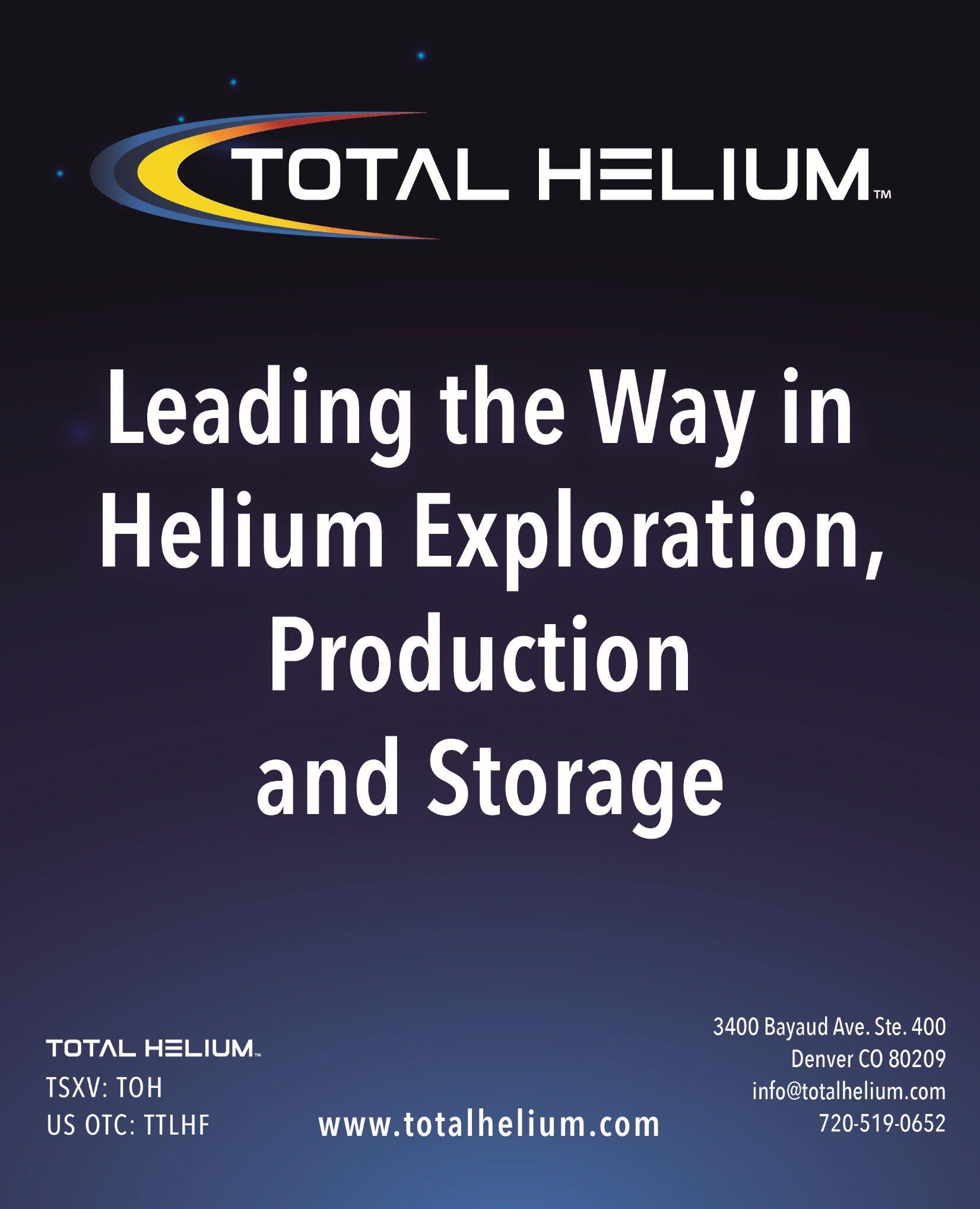
8:00 AM
Presenting
8 – 9:30 am – Technical Session 3B
Session Chair: Rob Diedrich
Thursday March 23, 2023
Lower Pennsylvanian Morrow Helium System, Las Animas Arch, Eastern Colorado and Western Kansas
Author David Bowen, Wavetech Helium, Inc.

Co-Authors David Eby, Wavetech Helium, Mark Germanario, Intergrated Geologic Solutions LLC

Room B
Abstract Incised valley-fill sandstones of the Lower Pennsylvanian Morrow Formation in eastern Colorado and western Kansas have produced more than 100 million barrels of oil and 500 billion cubic feet of gas. The petroleum system responsible for this production has been studied extensively and these reservoirs and traps well-documented. Exploration and development of Morrow reservoirs began in the mid-1970’s and continued in earnest through the end of the 20th century. Exploration for Morrow Sandstone targets slowed dramatically during the past two decades, as it did for many conventional reservoir systems across North America. Recently, exploration and exploitation of Morrow reservoirs has again gained interest, not due to the petroleum system per se, but due to the helium-nitrogen system that mixes with the petroleum system and which dramatically increases the economic potential of associated gasses. Low BTU gas trapped in Morrow Sandstone reservoirs once discouraged gas exploration, wellcompletions, and gas field development in these reservoirs. This low BTU gas is now a highly sought target due to associated helium percentages in the natural gas ranging from 1.5% to greater than 8% in traps on the Las Animas Arch in eastern Colorado and western Kansas. Understanding economic accumulations of this mixed gas, a function of both the nitrogenhelium system and the petroleum system, requires regional analysis of both systems. This presentation will review key elements of both systems: sources, migration pathways, reservoirs, seals, and traps; and the processes: generation, migration, and accumulation in order to better document the distribution and characteristics of this evolving play.
Dr. Bowen is Chief Geologist for Wavetech Helium, Inc. He received his B.S. degree in Geosciences from Hobart College in Geneva, New York, his M.S. degree in Earth Sciences from Montana State University in Bozeman, Montana, and his Ph.D. in Geology from the University of Colorado in Boulder, Colorado. He has more than 40 years of experience as a geologist. He began his career with Champlin Petroleum, which became Union Pacific Resources, working all the Rocky Mountain basins intersecting the Union Pacific Land Grant. He started a consulting business while finishing his Ph.D. at the University of Colorado and continued a hybrid industry/academic career teaching and serving as a research professor in the Department of Earth Sciences at Montana State University. Over the past 30 years he has prospected and consulted on industry projects across North America and consulted on several international projects. Dr. Bowen has been a distinguished lecturer for the American Association of Petroleum Geologists, 53
8:30 AM
taught industry short courses in exploration methods, and has authored publications in the fields of stratigraphy, reservoir characterization, and petroleum geology. He has also collaborated on several research, curriculum, and exhibit projects with the Museum of the Rockies in Bozeman, Montana.

Thursday March 23, 2023
The Proven and Potential Plays of Las Animas County, SE Colorado
Presenting Author Trent Spry, Blue
Star HeliumRoom B
Abstract Looking for non-hydrocarbon related economic accumulations of helium and other gases requires a unique set of geological conditions. In Las Animas County in southeast Colorado, outside of the Raton Basin at the confluence of the Sierra Grande uplift, the Apishapa Arch and the southern Las Animas Arch these conditions exist.
Here we consider the dynamics of the proven Permian Lyons play and explore the prospectivity of additional plays down to and including the basement source of helium. The interplay of source character (basement composition), intrusive activity, pressures, and seal capacity are believed to determine the reservoir gas composition at the various play levels.
Outside of the Raton Basin, Las Animas County is an under explored and data poor area. With essentially no seismic available in the area exploration requires integration of sparse well data, non-seismic geophysical data, surface geology, geochemical surveys, remote sensing data modelling and spatial stacking to define exploration targets.
Biography of Presenting
Author
Trent has over 25 years of global experience in the oil, gas (including helium) and resources industry. He has enjoyed successful careers with large independents, international consulting firms, advising national and multinational energy companies as well as holding key executive and board member roles in publicly traded companies. He is currently Managing Director and CEO of Blue Star Helium.
He has a broad technical background covering geology, geophysics, geochemistry, remote sensing, and basin/play modelling allowing him to integrate these different data sets to aid in regional basin and play analysis, prospect generation, evaluation, appraisal, reserves calculation and economic evaluation and risk reduction. These skills have been applied to both conventional & unconventional plays and prospects.
His qualifications are: University of Adelaide, Bachelor of Science, Double Major Geology & Biochemistry with First Class Honours from the National Centre of Petroleum Geology & Geophysics (NCPGG) he is a member of the American Association of Petroleum Geologists (AAPG) and the Petroleum Exploration Society of Australia (PESA) as well as a member of the AAPG EMD Critical Minerals Sub-Committee on Helium.
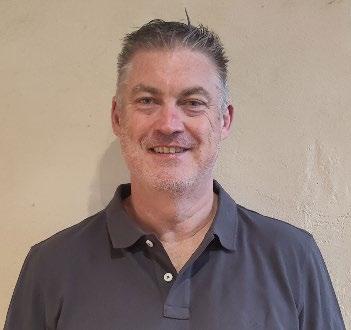


Thursday March 23, 2023
9:00 AM Expanding the Giant: A Review of the Hugoton Area’s Gas Fields’ First 100 Years of Development in the Permian’s Hydrocarbon-Helium Gas System
Presenting
Author Matthew Fox, Fox Bros Energy LLCRoom B
Co-Authors Chris Mullen, Bandit Exploration LLC, Wahid Rahman, Ph.D, Geoscience and Petroleum Research, Inc.

Abstract The Hugoton and Panhandle Gas Fields’ and their satellite extensions’ (“The Hugoton”), produce low BTU (850-1050) dry gas enriched with economic helium concentrations (economic helium concentrations span 0.25 – 2.5% of the total gas by volume) predominantly from the shallow Permian reservoirs that extend across Southwest Kansas and further southward into the panhandles of Oklahoma and Texas (BLM). The Hugoton was originally discovered in Seward County, Kansas during December of 1922, but it wasn’t until May of 1927 that the Hugoton Field was truly identified and subsequently became important (Hemsel 1939; Pippin 1968). Since the 1922 discovery well, the Hugoton has produced somewhere between 50-70 TCF of natural gas commingled with between 250 to 400 BCF of helium gas; the processed crude helium recovered volumes total to approximately 120 BCF (Bureau of Mines - AMY 1967-1993; BLM/USGS MCS 1991-2022). Although a century has passed and over 18,000 wells have been drilled to date, the Hugoton continues to capture roughly 1.2 BCF of helium annually (20% of current annual global production market) from 300-500 BCF of gross commercial natural gas, per year, which is remarkable for any gas field providing 100 years of consecutive depletion.
The Hugoton’s prolific primary gas reservoir, the Chase Group, was deposited during the Early Permian as cyclic platform and shelf carbonates across the vast shallow marine low relief Hugoton Embayment, a northwest extension to the Ancestral Anadarko Basin (Mazzullo, 1996). The Hugoton Embayment’s shallow marine carbonate-dominated platform was bordered to the North and West by siliciclastic terrestrial facies that covered the entire area during episodes of relative lowstands of sea level (Rascoe, 1988; Johnson, 1989; Caldwell, 1991; Mazzullo, 1996; Olson, Babcock, and Wagner, 1996; Sorenson, 2005; Dubois et al., 2006). From detailed well-log analysis, it is apparent that the Chase Group’s lowstand terrestrial accumulations’ interfinger both laterally and vertically with the main field's shallow marine carbonate facies, around the northern and western Hugoton Field boundary (Mazzullo,1996; Dubois et al., 2006). These internal depositional facies boundaries offer vertical and lateral permeability contrasts, which in return segregates migratory reservoir fluids across the boundary and subsequently redistributes their relative fluid saturations within the reservoir. Essentially, by delineating and characterizing each reservoir's internal depositional facies boundary and then comparing production results across the facies boundary, it is apparent that a Chase Group reservoir’s internal marineterrestrial boundary (shoreline) has propensity to enhance and/or diffract internal permeability gradients between terrestrial and marine reservoir facies within in the same stratigraphic flow unit (Olson et al., 1996; Sorenson, 2005), which has profound economic consequences to development of stranded reserves in a vintage gas field, like the Hugoton. Similarly, the consistency of the gas partitioning in each separately defined field has implications on timing of helium charge to the hydrocarbon-petroleum system.
Purpose for study: Regardless of a defined trapping mechanism or newly refined petroleum systems timing analysis, which are both critically important concepts to understanding and predicting any reservoir's saturation/economic potential, the Hugoton fields’ production purports
Author

that the Permian Chase Group's economically viable gas reservoirs are available either in the high-stand marine reservoirs’ or in their northwesterly correlative lowstand terrestrial and marginal marine reservoirs’; therefore delineating their internal stratigraphic marine-terrestrial boundaries’ (shorelines) have profound economic consequences on planning new drills’ or field infill wells’ locations and their associated completion styles’.


Scope of study: 1) demonstrate the economic significance of the Hugoton’s stratigraphic sealing units across the Hugoton Field and how these sealing layers and their unique burial history are integral to identifying the subregional gas compartmentalization overprinting the primary Chase group’s reservoirs’ productivity 2) characterize a typical 640 acre section’s primary development on the perimeter of the Hugoton in terms of the reservoirs lateral/vertical extent/geometries and saturation parameters, highlight contrasts with that of typical Hugoton 3) observe a schematic depiction of a Bradshaw Field’s primary development infill wells’ cost and uplift efficiency in the primary reservoir, contrasted to those in the Hugoton-Panoma Fields
Earned a BS in Geology and Geophysics from the University of WisconsinMadison and a MS in Geology from The University of Texas at El Paso. Six formative years of E&P experience with mid-majors’, private equity backed, and privately owned energy firms coupled with pandemic energy pricing gave way for a career digression: independently exploring for prospects and upstream business opportunities related to the production of natural gas commingled with economic helium concentrations.
10:00 – 12:00 pm – Technical Session 4A
Session Chair: Michele Bishop
Thursday March 23, 2023
10:00 AM Recent Developments in Helium Exploitation in Southern Saskatchewan and Adjacent Areas of Montana and Alberta

Presenting
Author Duncan MacKenzie, Global Helium CorpRoom A
Abstract The Williston Basin in southeast Saskatchewan lacks physiographic definition. Its northern and western limit in Canada is held to be the regional -1500 metre/-4900’ Precambrian subsea contour. The significance of this for helium exploration in southwest Saskatchewan is that west of this contour and east of the Sweetgrass – North Battleford Arch, there has been no discovery of a petroleum system deeper than the Mississippian. The result: only a handful of wells were drilled to the Precambrian after the mid-20th century, when the majors gave up on oil bearing Devonian structures in the area. For decades, there were no new data about the rocks or geochemistry of helium-bearing strata in the Devonian through Cambrian sections. The same holds true of Basement “source rock”, in an area covering 10s of 1000s of square miles of this region. Through these years, little was done besides sporadic gathering of remote sensing data.
Imperial Oil first encountered Paleozoic helium in the border region between the Rocky Mountains and the Williston Basin in 1952. This was at Battle Creek, southwest Saskatchewan, 150 miles northeast of Great Falls MT and 220 miles southwest of Regina SK. The discovery of non-combustible gases including helium in Devonian strata draped on a Precambrian monadnock was likely inadvertent. Imperial Oil plugged back the United Canso #1 well in Jurassic strata after running 47 bottom hole DSTs over four months. Three Devonian gas shows were non-combustible. Two of the three were analyzed. Both contained helium. A second well drilled to the Precambrian (~7300’) in 1971 tested helium in a basal Cambrian sandstone. Aside from the 1971 well, nothing more was learned of Battle Creek deep rocks or geochemistry for 65 years after discovery. Unlike much US mid-Continent helium, no associated hydrocarbon system spurred field development in helium-bearing strata. The carrier gas in the region is dominantly N2, with variable CO2, rarely observed to date exceeding 2 mol%. The Battle Creek pool is now producing, operated by North American Helium. Its 1952 discovery is no surprise: SK and adjacent MT and AB have what we have learned is favourable geology for helium accumulation. In 1958, Cambrian helium was found at Swift Current SK, 110 miles northeast of Battle Creek, 90 miles north of the international border. British American Oil abandoned the well. Helium was produced here for a decade, starting from the mid-1960s: production has now re-started. Few wells were drilled, and once again absent a Paleozoic petroleum system, little new was learned of the Devonian or deeper geologic systems.
By 1960, the imminent Apollo program and the Cold War combined to make helium relevant. A result was The SK Dept of Mineral Resources Report 49, Sawatzky et al., 1960. Report 49 signposted future helium discoveries remarkably well. We note here that some Sawatzky ideas, suitably updated, are part of Global Helium’s Saskatchewan prospect inventory. An addendum to Report 49 notes Texaco’s equally remarkable late 1960 discovery of Cambrian helium at Mankota
SK, on the northeast flank of the cross-border Bowdoin Dome, 80 miles north of Glasgow MT. For decades, no more recent survey of helium in SK, AB, or MT existed. This has decisively changed: in 2016, Yurkowski et al. published Helium in Southwestern Saskatchewan. Ms. Yurkowski’s group followed with a comprehensive 2021 update.
Less still is known of adjacent areas of Montana. Texaco found helium (again!) in 1960 at Rudyard MT, in the border county of Liberty. The Rudyard resource and a modern standing well are now assets of Global Helium Corp. A handful of helium wells have now been drilled in border townships. Montana remains largely unexplored. Montana is likely to see first helium in Q4 2023. Despite Alberta’s huge, century-old well count, westwards along the 49th parallel comparatively little is known of the deep Paleozoic, for familiar reasons. Paleozoic helium was discovered by Home Oil, again in 1960, five miles across the border from Toole County MT. Similar to Saskatchewan and Rudyard MT, the carrier gas is dominantly N2, with variable CO2 and low percentages of alkanes. Thor Resources began producing the pool in 2019, half a century after discovery.
Since 2016, after half a century of inactivity in the deep Paleozoic, around 70 helium wells have been drilled to the Precambrian, several in both Alberta and Montana near the international border, with the majority to date being located in Saskatchewan – due in part to Saskatchewan’s unique Helium Exploration Permit system. Alberta and particularly Saskatchewan are now meaningful producers, likely exceeding 100 million of cubic feet of helium per year, with Montana primed to follow suit. For geoscientists, the story is just beginning. Development of this resource will provide unprecedented insight into the substantially unknown rocks and geochemistry of the regional middle Devonian through Cambrian sections, as well as the Precambrian basement. Commercially, continuing development means the region is set to become a true helium production hub; the first north of the Shute Creek plant in southern Wyoming.

Duncan MacKenzie has spent 23 years as a geologist working in oil & gas exploration and development, mining reagents, and since 2015 noncombustible gases. Duncan is co-founder of Global Helium, and has seen the company grow from an LLC to one of Saskatchewan’s largest publicly traded Helium Exploration Permit holders, with a land position in Alberta, as well as land and producible gas in Montana. Duncan’s oil & gas career has been spent growing production and reserves with Calgary-based oil and gas producers such as Zargon Oil & Gas Ltd., and Montane Resources. He has also worked as a consultant on oil and gas projects in Colombia and the Gulf of Guinea. During oil & gas downturns and while working to fund Global Helium, Duncan worked supplying mining reagents from North Africa and West Asia to non-ferrous metals and chemical producers in eastern North America and the Caribbean, as well as Guyana and Chile. Duncan studied geology at McGill University, Montreal and the University of Alberta, Edmonton, and obtained his BSc Specialization Geology from the University of Alberta. He is a professional member of the Association of Professional Engineers and Geoscientists of Alberta, as well as the Ordre des géologues du Québec.

10:30 AM
Presenting
Thursday March 23, 2023

Author Brad Hayes, Petrel Robertson Consluting Ltd.
Abstract The helium industry in the Western Canada Sedimentary Basin has evolved from a few producing wells near Swift Current (Saskatchewan) in the 60s and 70s, followed by little activity for several decades, to an exciting and rapidly-growing business with a number of new players within the past decade.
Today, the Canadian helium focus remains in southern Saskatchewan. Several companies, led by North American Helium and Royal Helium, have pursued helium prospects in Cambrian sandstone and Devonian carbonate reservoirs associated with structural features on the Precambrian basement. Helium has been tested in a number of locations, and production volumes are growing rapidly.
After the initial rush in Saskatchewan, explorationists turned their attention westward to Alberta, seeing opportunities to extend exploration models westward and to develop new play ideas as well.
Sound geological detective identified the Steveville helium discovery, about 30 km northeast of Brooks. Regional geological mapping defined several high-quality and relatively continuous carbonate reservoirs within the Devonian Leduc through Ordovician Red River section. Intensive mapping of legacy seismic data defined a subtle structural closure, but the clinching evidence was actually found on the front page of the Calgary Herald from March 8 1940, describing a huge blowout from Standard Oil Princess 13-22-20-12W4, flowing a 50 MMCF/D gas stream consisting largely of nitrogen and other inert gases. Imperial Helium drilled and tested the modern discovery well immediately offsetting the blow-out and drilled two additional wells, defining sufficient reserves to justify putting the pool on production.
Steveville is an isolated discovery at this time, lying 270 km west of the closest Saskatchewan helium production. So while the Steveville area is densely developed for conventional shallow gas production, Royal Helium will be building a stand-alone helium extraction facility to service the planned 15 MMCF/D raw gas production. Construction is underway, and Steveville is scheduled to be producing high-purity helium in the second quarter of 2023.
Brad Hayes is President of Petrel Robertson Consulting Ltd., a geoscience and engineering consulting firm providing professional advice to clients working in oil and gas, helium and lithium exploration, water resource management, and geothermal energy. He has co-founded three helium exploration companies in Canada, two of which are publicly traded. Brad and PRCL currently support Royal Helium Ltd. in exploring for new helium pools in southern Alberta.
Brad holds a PhD in geology from the University of Alberta, and has 40 years of diverse experience applying subsurface geoscience in resource industries. He is Outreach Director for the Canadian Society for Evolving Energy, and a Past-President of the Canadian Society of Petroleum Geologists. He is a member of the Energy Resources Technical Advisory Committee for Geoscience BC and a Fellow of the Balsillie School for International Affairs.
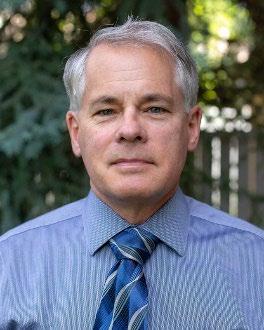
Dr. Hayes is an Adjunct Professor in the University of Alberta Department of Earth and Atmospheric Sciences, and a sessional lecturer in Earth and Environmental Sciences at Mount Royal University. Leading a team supported by U of A and CSEE, he recently developed a Massive Open Online Course (MOOC) “21st Century Energy Transition – How do We Make it Work?” as a product of extensive research and consultation on modern energy issues.
Brad is a prolific media commentator, writing for a variety of technical and business publications as well as engaging actively on social media talking about energy.
Thursday March 23, 2023
11:00 AM Geology of Natural Gas Resources at Kevin Dome, Toole County, Montana –Proven and Potential Helium, CO2, and Hydrocarbon Systems

Presenting
Author David Bowen, Wavetech Helium, Inc.
Co-Authors David Eby, Wavetech Helium Inc.
Room A
Abstract The composition of natural gas in a geologic trap is a function of the composition of gases added to the trap over time minus what components have leaked from the trap over time. Typically, we think of the elements and processes of petroleum systems dominating in this context. Often, however, non-hydrocarbon natural gas systems contribute or are dominant in determining the composition of natural gas in a given trap. These non-hydrocarbon natural gas systems are often CO2 dominated or N2 dominated, both of which may have trace to minor amounts of associated helium which can dramatically improve the profitability of trapped natural gas.
Kevin Dome, located in Toole County, Montana is a very large structural culmination along the north-south trending Sweetgrass Arch. It is an example of how different natural gas systems (petroleum dominated, CO2 dominated, and N2 dominated) contribute differentially to natural gas composition upward and laterally through a series of traps within a single large structural feature. The gas composition in these traps record a complex mixing history of the natural gas systems. Helium has been found in many of the traps throughout the stratigraphic section and provides additional economic incentive to understand this history.
The structural closure of Kevin Dome covers approximately 450 square miles and has approximately 600 feet of structural relief. It is a prominent surface geologic feature and has trapped both oil and natural gas at various stratigraphic levels from the Cambrian through the Cretaceous. Production was first established on Kevin Dome from the Mississippian Madison Group in 1922. Reservoirs on the dome have since produced greater than 300 million barrels of oil and greater than 1 trillion cubic feet of hydrocarbon dominated natural gas. These proven economic reservoirs range from the Devonian Nisku Formation stratigraphically upward to the Cretaceous Blackleaf Formation.
Additional resources in the subsurface on the dome also include a large CO2 dominated accumulation trapped in the Devonian Duperow Formation (potentially greater than 2 TCF) with limited gas analyses demonstrating helium concentrations approaching 1% near the crest of the dome. Below the Duperow, data is extremely limited with only 9 wells penetrating the Precambrian. However, two Cambrian tests indicate the presence of a N2 dominated gas system with up to 1.2% helium.
Biography of Presenting
Author
This presentation will discuss the geology of these natural gas systems at Kevin Dome and how and when these systems intersect. It will also discuss proven gas resources of the dome and the future potential of a helium resource from the dome.

Dr. Bowen is Chief Geologist for Wavetech Helium, Inc. He received his B.S. degree in Geosciences from Hobart College in Geneva, New York, his M.S. degree in Earth Sciences from Montana State University in Bozeman, Montana, and his Ph.D. in Geology from the University of Colorado in Boulder, Colorado. He has more than 40 years of experience as a geologist. He began his career with Champlin Petroleum, which became Union Pacific Resources, working all the Rocky Mountain basins intersecting the Union Pacific Land Grant. He started a consulting business while finishing his Ph.D. at the University of Colorado and continued a hybrid industry/academic career teaching and serving as a research professor in the Department of Earth Sciences at Montana State University. Over the past 30 years he has prospected and consulted on industry projects across North America and consulted on several international projects. Dr. Bowen has been a distinguished lecturer for the American Association of Petroleum Geologists, taught industry short courses in exploration methods, and has authored publications in the fields of stratigraphy, reservoir characterization, and petroleum geology. He has also collaborated on several research, curriculum, and exhibit projects with the Museum of the Rockies in Bozeman, Montana.
Thursday March 23, 2023
11:30 AM
Presenting
Comparison of Three Exploration plays in North America, Gas and Reservoir Characteristics, Land Issues, Market Issues and More
Author Steven Tedesco, Running Foxes Energy. Inc
Room A
Abstract Three of the most active helium plays: eastern Arizona; southeastern Colorado and southeastern Saskatchewan in North America have different characteristics in terms of gas composition, reservoir characteristics, land and regulatory issues. Eastern Arizona is located on the southern part of the Colorado Plateau and is divided into three areas: the Defiance Uplift, the Black Mesa Basin and the Holbrook Basin. Helium accumulations in this area can be associated with oil production. The host gas can vary from a combination of carbon dioxide, nitrogen to natural gas with very high helium percentages present in carbonate, clastic reservoirs and volcanics. The southeastern Colorado area centers around the Las Animas and Apishapa Arches that separate the Denver, Raton and Anadarko basins. The main play at present is dominated by 1% to 5% helium gases trapped in Pennsylvanian Morrow sandstones along the Las Animas Arch. A developing play is taking place in the Apishapa Arch with higher helium percentages (> 5%) found in the Lyons or Graneros sandstone of Permian age. The Morrow sandstones are predominantly stratigraphic traps and the Lyons is predominantly a sheet sandstone with helium trapped in structural highs. Permian rocks on the Apishapa Uplift lie directly on the Precambrian basement. The southeastern Saskatchewan play area is located in the northern part of the Williston Basin and the play extends into southeastern Alberta and northeastern Montana. The play is dominated by Cambrian sandstones and siltstones, Devonian and Ordovician carbonate reservoirs that may or may not be draped and present across basement topographic highs. Each
Biography of Presenting Author
play is unique and requires a unique approach. The gas composition in each play is also unique reflecting different types of helium and host gas sources and which may significantly impact energy costs in helium extraction. This paper will compare and contrast the three different plays.
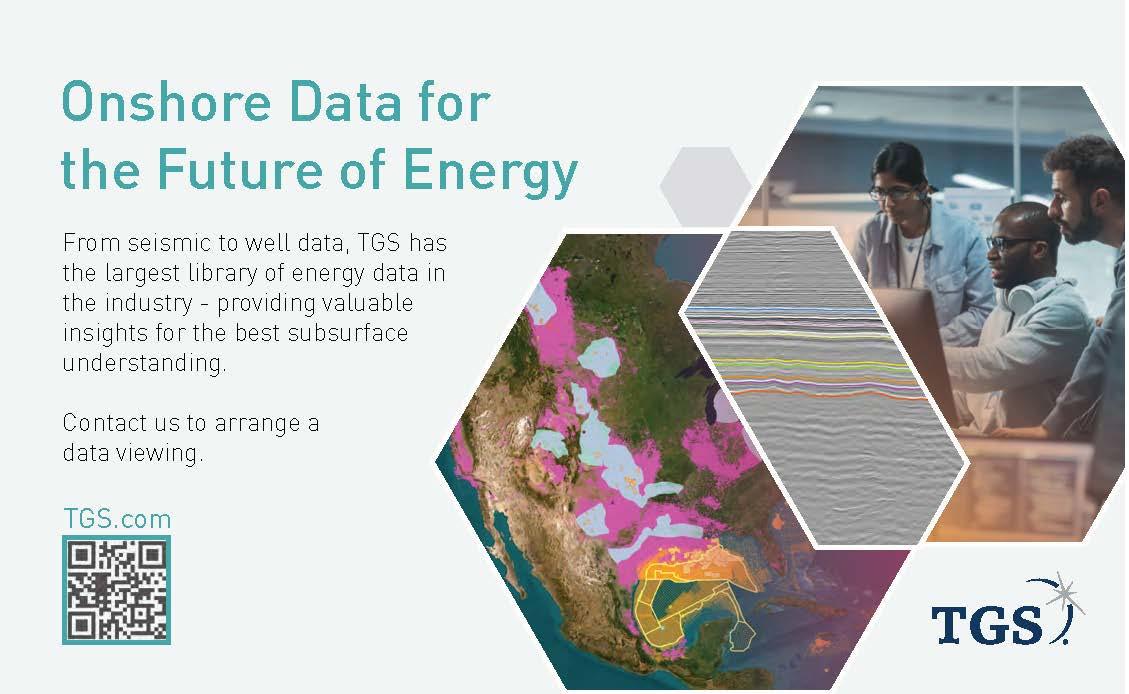

Dr. Steven A. Tedesco is Owner of Running Foxes Petroleum Inc.; Manager of MRE Wind and Solar; and Manager of Starfox Helium Inc. and has been in the resource industry for over 40 years. Dr. Tedesco has a MS from Southern Illinois University and a PhD from Colorado School of Mines. He has written numerous articles on coal, coal-bed methane, surface geochemistry, Pennsylvanian stratigraphy, numerous field studies, use of aeromagnetics in petroleum and resource exploration and gas operation. Dr. Tedesco recently authored the book: Geology and Production of Helium and Associated Gases published this spring by Elsevier and another book entitled Surface Geochemistry in Petroleum Exploration published by Chapman and Hall. Dr. Tedesco is on the Foundation Board for Southern Illinois University. Dr. Tedesco operates over 600 CBM, oil (both conventional and waterflood) and gas wells in Utah, Missouri, Kansas, and Wyoming and has solar and wind assets in Arizona, Utah, Colorado, and New Mexico. Dr. Tedesco is a member of SPE, AAPG, RMAG, Emu Association, and National Buffalo Association.


10:00 – 11:30 am – Technical Session 4B
Session Chair: Rob Diedrich
Thursday March 23, 2023
10:00 PM Case Study and Play Characterization of Upper Morrow Sandstone Reservoir using High Density 3D Seismic Inversion and Lithology Prediction Probability
Presenting
Author Mark Falk
Room B
Co-Authors Mark Germinario, Intergrated Subsurface Technology, Mike Lovell, Intergrated Subsurface Technology, Chuck Skidmore, Intergrated Subsurface Technology, Marianne Rouche, TGS, Dennis Langlois, TGS
Abstract Upper Morrow sandstone has historically been successfully developed as methane reservoirs with high helium content in southeast Colorado. The higher helium content is generally considered to be driven by the Las Animas Arch uplift. Helium has been produced as a byproduct of typical natural gas exploration and development. Upper Morrow sandstone is generally considered to have been deposited in low stand valley channel and fill systems. The best expression of these systems has been documented geologically and geophysically in the Stateline Trend along the Colorado-Kansas where the valley system incises Lower Morrowan and Mississippian formations. Stockholm SW Field provides an excellent study (Miller, Hundley-Goff, Brown 1990). The Ladder Creek Helium Plant processes native gas from Morrow Sandstone reservoirs in the area.
TGS acquired a high-density 3D seismic survey over 700 square miles in Cheyenne County in 2014. Integrated Subsurface Technology was contracted to enhance seismic definition and reservoir characterization of the Upper Morrow. The workflow is briefly given below.
• Well log cross plots of P Impedance vs. S Impedance show that seismic attributes of velocity and density are sufficient to define lithology.
• Pre-stack inversion for P Impedance and S Impedance provides attributes of Vp-Vs ratio, Lambda-Rho, and Mu Rho. These attributes are used together to identify and map Upper Morrow sandstone.
• Advanced neural network lithology prediction uses seismic attribute volumes (including inversions) to predict lithology as created from well log models
• A key output of the lithology prediction are probability volumes for each lithology. The probability volume is an important tool to high grade and evaluate individual geo-bodies of connected lithology.
• Geo-bodies of connected seismic lithology map the distribution of Upper Morrow sandstone.

Mark Falk is co-owner of Integrated Subsurface Technology, LLC. Since May, 2020, Integrated Subsurface specializes in seismic inversion, reservoir characterization, and lithology prediction with a focused integration of seismic data and well logs. We have completed projects in SE Colorado, Oklahoma, and Delaware Basin.
Prior to starting Integrated Subsurface, Mr. Falk worked for Chesapeake Energy for 18 years. As Director of Technology for the geosciences, he drove much of Chesapeake efforts in advanced reservoir characterization and drilling/production enhancement. Areas of interest included Marcellus, Haynesville, Eagle Ford, Mid-Continent, and Powder River Basin.
Mr. Falk’s previous experience includes Louis Dreyfus Natural Gas in Oklahoma City and Pennzoil in Houston, where he worked with the international team in Venezuela and Peru. In this capacity, he developed some of the earliest reservoir modelling in Maracaibo Basin and Maturin Basin.
Mr. Falk began his career with Gulf Oil Company after graduation from Bowling Green State University (OH) with a MS in Physics. Mr. Falk also has completed studies in Environmental Engineering at Oklahoma State University.


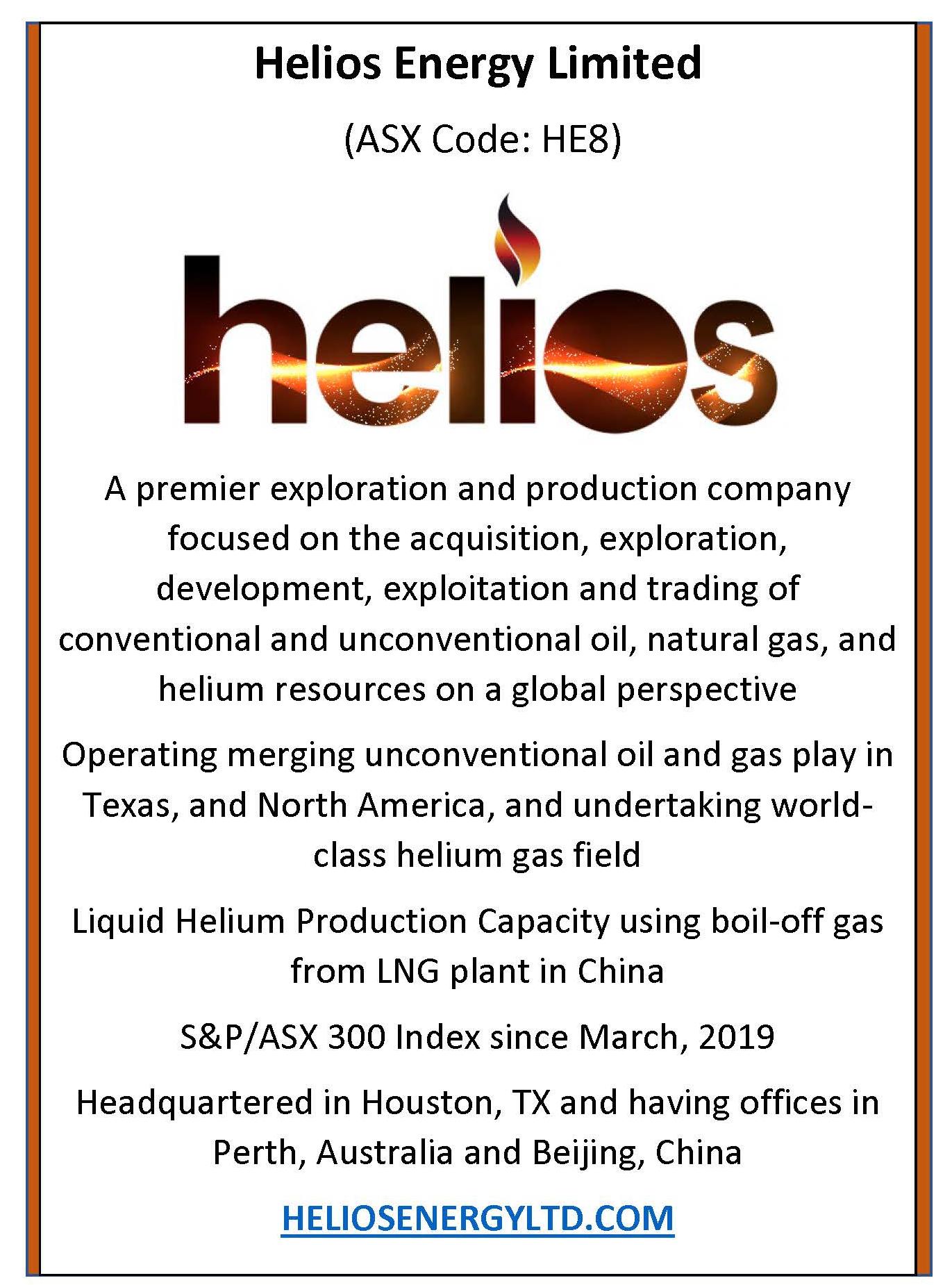
Thursday March 23, 2023
10:30 AM Helium – Relationships to Other Reservoir Gases and Implications for Exploration: The New Mexico Example

Presenting
Author Ron Broadhead, New Mexico Bureau of Geology and Mineral Resources.
Room B
Abstract Helium is the second most abundant element in the universe after hydrogen but is relatively rare on earth. Radiogenic decay of uranium and thorium in crustal rocks, especially granites, is the primary source of helium and generates 4He. 3He is rare on earth and is dominantly primordial helium derived from degassing of the mantle. Although He occurs in most natural gases, it almost always occurs in extremely low, subeconomic concentrations, less than 0.1%. Only 17.6% of all natural gases in the U.S. contain more than 0.3% helium. It is rare in concentrations more than 1%. A very few small reservoirs have gases with more than 7% helium.
Other gases that constitute the dominant components of helium-bearing natural gases are hydrocarbons (HC’s), carbon dioxide (CO2), and nitrogen (N2). The highest He concentrations occur where the dominant gas is N2 but most He has historically been produced as a byproduct where the dominant gases are HC’s. He occurs as two stable isotopes, 3He and 4He. 3He is dominantly primordial and primarily originates from the earth’s mantle while 4He is a radiogenic decay product of uranium and thorium mainly in granitic basement rocks. 4He is the dominant isotope in crustal gases.
HC’s are generated from petroleum source rocks. Their presence in a reservoir is dependent upon the presence of a mature source rock in the basin and a migration path between the source rock and the reservoir. Large accumulations of CO2 in the southwestern U.S. resulted from the degassing of rising Tertiary magmas and subsequent migration of the gases into reservoirs. N2 appears to originate mostly from degassing of the mantle but is also formed by the thermal maturation of coals and from the degradation of ammonia in pore waters. Some reservoir N2 may also be trapped atmospheric gas.
The presence of economic concentrations of He in reservoir gases is dependent not onl y on an adequate source of 4He generated from granitic basement rocks but also on accommodating flux rates of HC’s, CO2 and N2. All of these gases differ in their origins, places of generation and rates of generation. Economic concentrations of He occur where the reservoir is incompletely filled with either HC’s or CO2. These reservoirs contain elevated concentrations of N2 in addition to the elevated concentrations of He.
Ron Broadhead received his B.S. in Geology from New Mexico Tech and his M.S. in Geology from the University of Cincinnati where he studied Devonian shales under the late Paul Potter. He worked for Cities Service Oil Company in Tulsa and Oklahoma City and has been with the New Mexico Bureau of Geology and Mineral Resources (a Division of New Mexico Tech) since 1981. He retired from New Mexico Tech in 2020 and was granted emeritus status by the university. At the Bureau, major research projects have included the New Mexico petroleum source rock project, subsurface and petroleum geology of the Permian, San Juan, Tucumcari, Raton, Las Vegas and Estancia Basins as well as helium-rich and CO2-rich natural gases of New Mexico. He also supervised the Bureau’s core and subsurface information libraries. He taught subsurface and petroleum geology at New Mexico Tech beginning in 1982 and
continues to teach part-time in retirement. His numerous society activities include serving as editor of Search and Discovery, the online journal of AAPG, from 2011 through 2018.
Thursday March 23, 2023
11:00 AM Helium and Low-Hydrocarbon Reservoir in San Juan County, Utah: Unconventional Methods to Detect Reservoir Zonations and Gas-Water Contacts Part 1

Presenting Author Jacob Cammack, Four Corners Helium
Co-Authors Smith, Christopher - Advanced Hydrocarbon Stratigraphy
Room B
Abstract Methods for detecting reservoir fluid-zonations and water contacts often rely upon well-accepted hydrocarbon-relationships and their respective solubilities in water (e.g. ratios of heavy to light hydrocarbons, BTEX, etc.), and employ standard wellsite gas detection methods (e.g. gas chromatograph or hotwire). These methods are not reliable in a recent helium-well targeting the Mississippian Leadville in San Juan County, Utah due to its low hydrocarbon concentrations (0.91% He, 70.4 - 70.9% CO2, 22.2 - 22.3% N2, 5.8% C1 and trace C1+) and the fact that hotwire and gas chromatography methods are rarely capable of reliably detecting helium, CO2 and N2. In this presentation we apply several methods to detect reservoir zonation and gas water contacts:
Part 1 (Jake Cammack, Four Corners Helium):
1. Compositional gas analyses from wellsite mass spectrometry, wellhead samples, and downhole DST results show a helium-enriched, gaseous, CO2 and N2 reservoir with low to absent hydrocarbons.
2. XRD, and Elemental Analyses of cuttings are used to identify modern and paleo-zones of differing oxidation (possibly reflecting gas-water contacts) and to define digenetic zonations and hydrothermal history of the formation.
3. Water geochemistry trends are used to show that formation water interacted with CO2rich reservoir that was clearly separate from the gaseous zones prior to drilling.
Part 2 (Also see abstract from Chris Smith, Advanced Hydrocarbon Stratigraphy):
1. AHS’s Rock Volatiles Stratigraphy (RVS) method was used to gently extract modern volatiles from cuttings samples; thus reflecting the current volatile contents of the reservoir.
2. RVS is used here to assess seal-quality, relative porosity / permeability and to define modern differences in oxidative potential and fluid-zonations. RVS strengthens the relationship to the proposed gas-water contact detected using other methodology.
1. The gas-reservoir is similar to the adjacent Doe Canyon analog field in SW Colorado, which has produced about 350 MMCFD of helium. It is our goal in this work to detect the most productive stratigraphic zones in our project area and to reduce the probability of water production.
Jake manages exploration geochemistry, field studies, and GIS as a Partner of Four Corners Helium LLC. He has compiled a database with over 17,000 gascomposition and helium analyses which likely comprises the most complete gas-geochemistry dataset ever assembled for Utah, Colorado, New Mexico and Arizona. Using this database, he is developing and implementing predictive multivariate analysis and GIS to define prospects and to predict gas concentrations (e.g. helium, N2, CO2, hydrocarbons, etc.), source, migration, accumulation and trap characteristics.
Jake designed and implemented a soil-gas study in SW Colorado and led a team to adapt a quadrupole mass spectrometer to make real-time gas-composition-analyses of soil-gasses collected in the field. He was among the first wellsite geochemists to utilize mass spectrometry on gasses from Mississippian, Devonian, and Precambrian rocks on a helium project in NW New Mexico.
His acuity with GIS computer-mapping was developed as an instructor at Fort Lewis College in Durango, Colorado. This software is crucial for integrating and relating complex datasets, including: lease information, geological structures, geophysical anomalies, topography, and gas composition trends.

Jake earned his MS in geochemistry from the University of Wisconsin – Madison where he used fieldwork, and carbon/oxygen isotopes to study 3.4-billion-year-old fossilized stromatolites from Australia, that are thought to be evidence of the oldest known lifeforms on earth. His MS-work is published in the Journal of Precambrian Research. Jake’s BS thesis from Fort Lewis College in Durango, Colorado focused on the Navajo Volcanic Field in Northwestern New Mexico and Northeastern Arizona. His BS thesis used petrography, chlorine isotopes and fluorine trends to unravel the magma’s gas and fluid origins. Volcanics and metamorphism are factors in helium sourcing and migration.
Thursday March 23, 2023
11:30 AM Helium and Low-Hydrocarbon Reservoir in San Juan County, Utah: Unconventional Methods to Detect Reservoir Zonations and Gas-Water Contacts Part 2

Presenting Author Christopher Smith, Advanced Hydrocarbon Stratigraphy
Room B
Co-Authors Jacob Cammack - Four Corners Helium; Timothy Smith - Advanced Hydrocarbon Stratigraphy; Patrick Gordon - Advanced Hydrocarbon Stratigraphy; Michael Smith - Advanced
Abstract Methods for detecting reservoir fluid-zonations and water contacts often rely upon well-accepted hydrocarbon-relationships and their respective solubilities in water (e.g. ratios of heavy to light hydrocarbons, BTEX, etc.), and employ standard wellsite gas detection methods (e.g. gas chromatograph or hotwire). These methods are not reliable in a recent helium-well targeting the Mississippian Leadville in San Juan County, Utah due to its low hydrocarbon concentrations (0.91% He, 70.4 - 70.9% CO2, 22.2 - 22.3% N2, 5.8% C1 and trace C1+) and the fact that hotwire and gas chromatography methods are rarely capable of reliably detecting helium, CO2 and N2. In this presentation we apply several methods to detect reservoir zonation and gas water contacts: Part 1 (Jake Cammack, Four Corners Helium):
Author
4. Compositional gas analyses from wellsite mass spectrometry, wellhead samples, and downhole DST results show a helium-enriched, gaseous, CO2 and N2 reservoir with low to absent hydrocarbons.

5. XRD, and Elemental Analyses of cuttings are used to identify modern and paleo-zones of differing oxidation (possibly reflecting gas-water contacts) and to define digenetic zonations and hydrothermal history of the formation.
6. Water geochemistry trends are used to show that formation water interacted with CO2rich reservoir that was clearly separate from the gaseous zones prior to drilling.
Part 2 (Also see abstract from Chris Smith, Advanced Hydrocarbon Stratigraphy):
3. AHS’s Rock Volatiles Stratigraphy (RVS) method was used to gently extract modern volatiles from cuttings samples; thus reflecting the current volatile contents of the reservoir.
4. RVS is used here to assess seal-quality, relative porosity / permeability and to define modern differences in oxidative potential and fluid-zonations. RVS strengthens the relationship to the proposed gas-water contact detected using other methodology.
The gas-reservoir is similar to the adjacent Doe Canyon analog field in SW Colorado, which has produced about 350 MMCFD of helium. It is our goal in this work to detect the most productive stratigraphic zones in our project area and to reduce the probability of water production.
Christopher Smith has been a Senior Chemist with Advanced Hydrocarbon Stratigraphy (AHS) since January 2019 and moved to Midland TX a few months ago. He works on data analysis, instrumentation, client engagements, and business development for AHS. Most of his analysis work focuses on the North Slope in Alaska, the Delaware Basin, the Anadarko and Arkoma basins in Oklahoma, and the Marcellus. Prior to working for AHS, he received his PhD in analytical chemistry from the University of Arizona in the Winter 2018 term with focuses on instrumentation, data analysis programing, spectroscopy, electrophysiology, surfactants, and surface modification chemistries. He also completed a MA in history at the University of Tulsa as a Henneke Research Fellow in 2012. He completed his undergraduate work cum laude in 2011 with degrees in chemistry, history, and biochemistry also from the University of Tulsa.


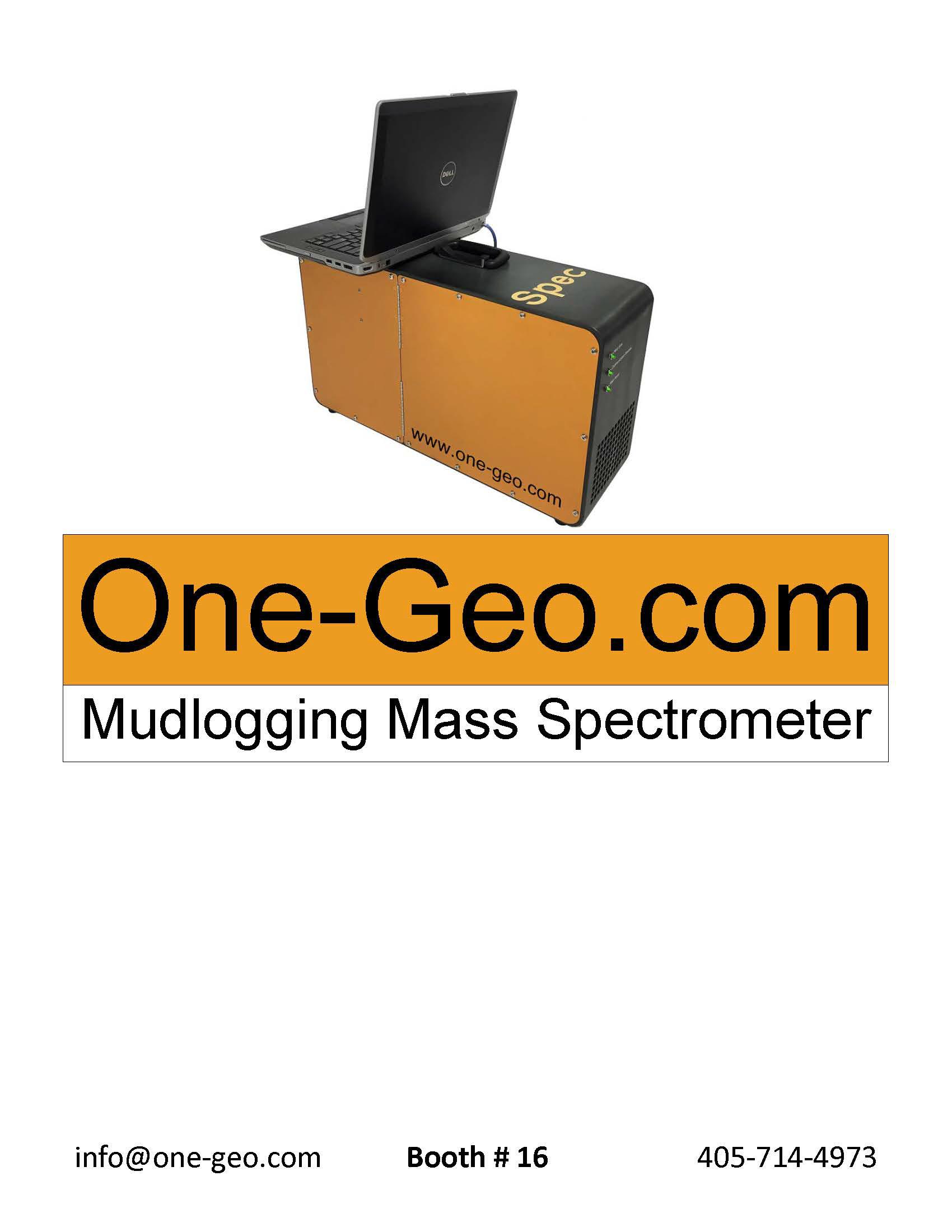
Thursday March 23, 2023
Presenting
Author Jeremy Jordan, IACXENERGY
Co-Authors Jacob Cammack - Four Corners Helium; Timothy Smith - Advanced Hydrocarbon Stratigraphy; Patrick Gordon - Advanced Hydrocarbon Stratigraphy; Michael Smith - Advanced
Abstract Once a helium-rich natural gas deposit has been discovered, there are many obstacles that must be overcome in order to get helium to market. Helium can be entrained in gas streams with diverse compositions, ranging from hydrocarbon-laden to totally inert; thus presenting developers with the challenge of determining a processing scheme designed to extract helium from other constituents while monetizing any other products of value (i.e. NGLs, condensate and/or residue gas) and treating and disposing of contaminants (e.g. CO2, H2S and/or nitrogen). In addition to the raw gas stream’s makeup, both reservoir size and wellhead deliverability also play a role in technology selection. Similar to typical hydrocarbon fields, helium is often found in remote areas with limited road and power infrastructure, which, in the case of a lack of access to power, can be problematic particularly when the raw gas stream is totally inert and cannot be used as fuel.
Significant helium resources lie within federal, tribal, and state surface and/or minerals. As various government agencies - and the general public - continue to take a more aggressive stance against development of anything resembling oil and gas, projects can certainly face headwinds related to obtaining permits and other necessary approvals required to commence operations.

At risk of stating the obvious: No project gets off the ground without capital. At a minimum, capital providers must get comfortable with the ultimate value of helium once it reaches the tailgate of a plant. In many cases, capital providers strongly prefer a relatively long-term helium offtake agreement be put in place as a condition precedent to closing a financing. Therefore, market intelligence and commercial expertise play a critical role in a project’s success.
More often than not, solutions exist to any particular challenge, or multitude of challenges, standing between a resource and its commercialization. Drawing on experience derived from over 16 years of developing projects with IACX, the speaker will cover all topics referenced above, with a particular emphasis on the technical side of the equation.
Author
Jeremy Jordan has 22 years of combined experience in the energy and investment banking industries. Mr. Jordan is a co-founder of IACX, with his primary focus being the company’s commercial efforts. Some of his strengths and responsibilities include: identification, structuring, and negotiation of greenfield projects and asset acquisitions; product marketing, including residue gas, NGLs, and helium; and gas supply. Prior to starting IACX, he worked as an advisor to private and public companies seeking institutional financing. Mr. Jordan holds a Bachelor of Business Administration with a concentration in Finance from Southern Methodist University.



1:30 PM
Presenting Author David
1:30 – 3:30 pm – Technical Session 5A
Session Chair: Mark Germinario
Thursday March 23, 2023
 Seneshen, Geochemical Insight
Seneshen, Geochemical Insight
Co-Authors Duncan MacKenzie, Global Helium
Room A
Abstract Conventional near-surface geochemical exploration for helium deposits involves the collection of soil gas samples for the analysis of helium and other associated gases such as nitrogen, argon, methane and carbon dioxide. This method works especially well in permeable overburden for detecting microseeps along faults and fractures over shallow helium deposits (<300 m). Over Harley Dome in eastern Utah, 1-m-deep soil gas helium concentrations are up to 300% greater than atmospheric (i.e., 5.2 ppm) levels over the 300-m-deep, Jurassic Entrada Sandstone-hosted helium reservoir.
Soil gas surveys over deeper helium deposits (>1,500 m) are best conducted at greater sample depths, preferably over the surface projection of faults. For example, Klusman (2018) showed a 60% increase in soil gas helium concentration from surface to 5-m depth and a 300% increase from 5- to 10-m depth over the 1,676-m-deep, Pennsylvanian Tensleep Sandstone-hosted Teapot Dome field in east-central Wyoming. Samples collected directly over a first-order fault showed the greatest anomaly contrast from surface ambient levels to 10-meter depth (5 to 32 ppm He), while those collected over a second-order splay off the main fault showed only a nominal increase in helium from surface ambient levels to 10 m depth (5 to 7 ppm He). In southeast Colorado, 3.6-m-deep soil gas helium concentrations are up to 300% greater than atmospheric (i.e., 5.2 ppm) levels over a 1,525 m deep, Pennsylvanian, Morrow sandstone-hosted hydrocarbon and helium reservoir.
Soil gas surveys conducted over impermeable overburden (e.g., glacial till cover in south-central and southwest Saskatchewan) result in much lower helium contrast (i.e., 5.3 +/-0.2 ppm) because the overburden acts a seal to helium microseepage. In areas of impermeable overburden cover it is therefore necessary to find other sample media capable of detecting helium migration from subsurface accumulations.
In the case of south-central and southwest Saskatchewan, there are thousands of domestic water wells cased in Quaternary, Tertiary or Upper Cretaceous aquifers. These aquifers are below aquitards (e.g., shale and glacial till) that impede upward helium migration to form soil gas anomalies at surface. A total of 29 domestic water wells, and the pressure tanks off 26 of those wells, were analyzed for dissolved and free gas helium (He), argon (Ar), methane (CH4), nitrogen (N2), carbon dioxide (CO2) and oxygen (O2) in the field with a portable mass spectrometer. There is good correlation of dissolved CH4, CO2 and He with free gas in the pressure tanks suggesting the gases exsolving out of the well water are migrating through the polyvinyl chloride or butyl rubber bladders into the headspace of the pressure tanks. Anomaly contrast is much higher in
Author
the aquifers compared with spatially coincident soil gas samples, and there is significant variation of helium concentrations within individual aquifers. For example, dissolved helium is 27 times higher and nitrogen and argon are 3 times higher in one part of the Upper Cretaceous, methane-rich, Judith River aquifer near a fault than in a water well of similar depth 7 miles to the southwest, suggesting dilution of the methane-rich aquifer by migrating helium, nitrogen and argon from a uranium and thorium rich basement source.
The dissolved water data from this study was combined with another dataset of 809 well water analyses by Dyck and Dunn (1986). When these datasets are combined, dissolved helium anomalies are evident over and adjacent to the Battle Creek helium gas pool (i.e., near Consul) and near other Paleozoic helium gas shows near Climax and under the Shaunavon oil field. There are also dissolved helium anomalies in areas with no Cambro-Ordovician Deadwood penetrations. Because of the high anomaly contrast shown by dissolved gas species (e.g., He, Ar, CH4) and the spatial correlation of anomalies with know helium reservoirs, groundwater is a better sample medium than soil gas for helium exploration in south-central and southwest Saskatchewan.
In summary, soil gas surveys can be an effective tool for exploration for helium deposits in areas with permeable overburden that allows for the upward ascent of helium. Deeper soil gas samples and biasing sample designs towards the surface projection of faults improves helium anomaly contrast dramatically, especially over deep (>1,500 m) helium-bearing reservoirs. In areas with impermeable overburden, such as south-central and southwest Saskatchewan, groundwater is a better sample medium than soil gas for detecting helium anomalies related to subsurface accumulations.

References:
Dyck, W., and Dunn., C.E., 1986. Helium and methane anomalies in domestic well waters in southwestern Saskatchewan, Canada and their relationship to other dissolved constituents, oil and gas fields, and tectonic patterns. Journal of Geophysical Research, Volume 91, No. B12, pp. 12,343-12,353.
Klusman, R.W., 2018. Faults as Windows to Monitor Gas Seepage: Application to CO2 Sequestration and CO2-EOR. Geosciences 2018, 8, 92, pp. 1-26.
David Seneshen is a geochemist who designs and implements surface geochemical surveys to reduce risk in the exploration for helium, hydrogen, hydrocarbons and critical minerals. David received his doctorate in exploration geochemistry from Queens University in Kingston Canada in 1998, and then went on to provide geochemical exploration guidance to mining and oil & gas companies around the world. David is currently optimizing surface geochemical exploration methods for helium and uranium in North America and Australia and conducting geochemical exploration surveys for oil & gas on the North Slope of Alaska and in the Michigan Basin through his consulting company, Geochemical Insight.


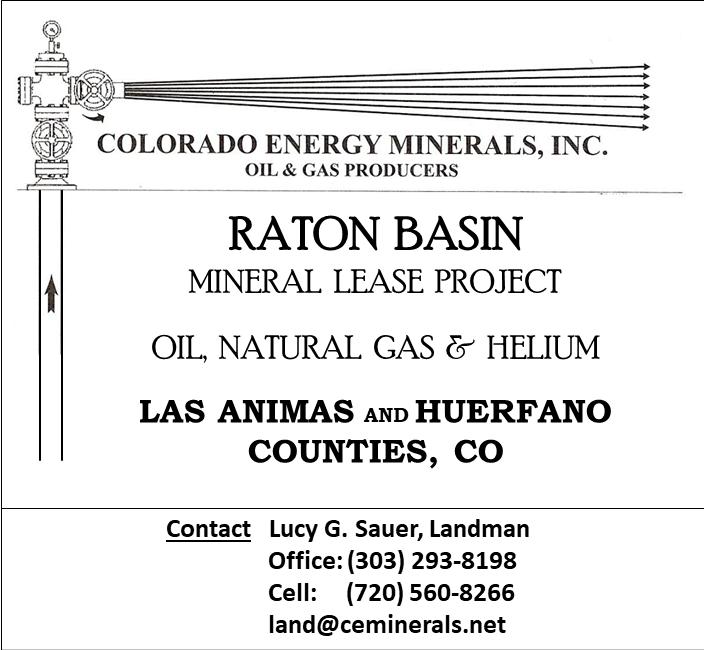
Thursday March 23, 2023
2:00 PM Probabilistic Determination of the Role of Faults and Intrusions in HeliumRich Gas Field Formation
Presenting
Author Daniel Halford, University of OxfordRoom A
Co-Authors R. Karolytė, University of Oxford, M. Andreason, Navajo Nation Oil and Gas Company, B. Cathey Earthfield Technology LLC, J. Dellenbach, Division of Energy and Mineral Development, J.J. Cuzella, Division of Energy and Mineral Development, S.A. Sonneberg, Colorado School of Mines, A. Cheng, University of Oxford, K. McCaffrey, Durham University, J.G. Gluyas, Durham University, C.J. Ballentine, University of Oxford
Abstract Helium (He) is a critical and limited natural resource for high-tech industries. The occurrence of gas fields with observed economic He concentrations (typically >0.3%) requires geological periods of quiescence to generate He from the radioactive decay of uranium and thorium in the Earth’s crust and tectonic and structural regimes favorable to releasing and concentrating He. A key unknown in developing an understanding of the He system has been determining the role of faults and other structural features in focusing the deep-seated He source to shallow accumulations. We test the correlation between high-He occurrences (n=138 wells) and structural features using a new high-resolution geophysical aeromagnetic survey in the Four Corners area, USA. Three maps were created using Werner deconvolution algorithms by combining magnetic, gravity, and topography data, together with magnetic and gravity depth profiles: 1) depth-tobasement map with basement lineaments/faults; 2) igneous body occurrences (size and position); and 3) a flattened basement structural high map. We show quantitatively (utilizing ANOVA tests) that a non-random process controls the relationship between He (>0.3%) accumulation and both basement faults and igneous intrusive bodies: 88% percent of all high-He wells occur within 1 km of basement faults; and 85% of high-He wells occur within 1 km of igneous intrusions. As He concentrations increase, the distance to these structural features decreases. The strong spatial statistical correlation of He wells to both basement faults and intrusions suggests that advection transport via faults/intrusions facilitates He migration. The role of gas phase buoyancy and structural trapping as an additional key system component is confirmed: 88% of observed He accumulations occur within structural highs; and 91% of the remaining wells are near (<1 km) intrusive bodies that could be acting as a local structural high. We present a composite map that illustrates how this probabilistic approach can be used as a predictive model to help improve He exploration success by targeting zones of intersection of basement faults and igneous bodies in combination with basement structural high occurrence.

Daniel received his Bachelor of Science in Geological and Environmental Science from Stanford University and his Master of Science in Petroleum Geology from Colorado School of Mines. He is currently a Ph.D. student at the University of Oxford studying helium systems using geochemistry, geophysics and geology.



Thursday March 23, 2023

Presenting
Author Scott Field, Field Geo Services Inc.
Co-Authors Michael Krenek, Field Geo Services Inc.

Abstract With Increased interest in development of helium exploration and production, a newer type of wellsite gas detection system is required for real time gas data during drilling. Although effective for hydrocarbon detection, traditional gas detection systems are unable to detect helium. A mass spectrometer functions differently than the traditional gas chromatography by detecting the charged molecular masses of gases. The mass spectrometer is very effective at detecting values of helium entering the mud system from the formations being drilled. Abrupt or gradual increases in helium can determine the depth and relative strength of the seals containing the helium. Modeling the chemistry of the mass spectra signals on multiple wells will allow for analysis of changes to a top seal and other reservoir character across a basin. Top seal leakage can pose a problem for both hydrocarbon and helium wells.
Author
Scott Field’s career as a businessman and geologist is a reflection of his adaptability and intellectual curiosity. Throughout the 20+ years he has been working in the oil and gas industry he has experienced and responded to several of the industries “boom and bust” cycles. Each downturn and upswing has motivated Scott to adjust his knowledge and product to correspond with the specific needs of the time. It is this evolutionary trajectory that has allowed Scott and his company, Field Geo Services, to exceed in downturned economies and to thrive in difficult markets.
Scott Field began his career in geology in 2000 as a wellsite mudlogger for Pason Systems. His primary areas of experience as a developing mudlogger were in Utah and Colorado. In 2002, Pason specifically chose Scott as one of its pioneers of a new and specifically tailored program in Parachute, Colorado. This developmental program came to be known as Remote Geologging (RGL), and it was an innovative response to the multi rig and faster drilling scenario in the Piceance Basin. During the early years of the RGL program, Scott independently developed practices and procedures to increase the accuracy and speed of the work product for the client. Scott became the lead geologist of an eight person team in the RGL field.
In early 2006, two E&P companies that Scott had been working with suggested they would support an independent company of Scott’s creation. This confidence and support inspired Scott to found Field Geo Services, Inc. in 2006. As an independent service company, Scott continued to develop additional techniques for the remote style geology program, incorporating engineering data to assist in picking formation tops and Total Depth. From the founding of Field Geo Services in August 2006 throughout 2008, Field Geo Services’ rig count climbed from 3 to 19 actively drilling per month, with new clients added via word of mouth in regards to Scott’s quality work product.
In 2008, the natural gas market dropped substantially. This turn of events prompted Scott to respond by diversifying Field Geo Services. Scott sought out diversification into the oil market to decrease reliance on natural gas drilling and began to provide traditional mudlogging in addition to the remote style geology program.
3:00 PM
PresentingScott’s determination to expand his knowledge base and company offerings prompted his exploration into advanced mudlogging techniques. In 2010, Scott began training in Mass Spectrometry for oil and gas analysis and offered one of the earliest wellsite mass spectrometry programs to his clients. Scott’s understanding of the data increased exponentially with every well, and he developed increased accuracy, better details, and significant understanding of the data set and its importance to the client.
Scott and Field Geo Service’s reputation for customized geological service prompted a client to ask Scott to look into wellsite X-Ray Diffraction for a drilling project. Scott researched and selfeducated on X-Ray diffraction and furthered his knowledge base with an intensive two-week class at the International Center of Diffraction Data in Pennsylvania. After successful completion of the ICDD class, Scott obtained two XRD units specifically for wellsite deployment. Field Geo Services began renting the XRD units to clients in 2012. Scott developed methods and techniques to quickly gather the XRD data and to convert that data into a graphical format in order to assist in geosteering and correlation to Gamma data. In 2014, Scott created Field Data, a company holding his specific software for mass spectrometry and X-Ray Fluorescence analysis, called SpectraStacker.
Scott and Field Geo Services have since continued to increase expertise with the mass spectrometry, X-Ray diffraction, and X-Ray fluorescence. Scott’s unique methods to view and interpret chemistry data have resulted in the discovery of many trends in hydrocarbon activity, rock mechanics, and inorganic analysis. This has increased the utility and efficiency of the data to Scott’s clients. In 2014 through 2015, Scott and Field Geo Services developed a strong multiple services model of mudlogging, geosteering, mass spectrometry, and X-Ray Diffraction. This trend has moved Scott and Field Geo Services into a larger scale business model of mudlogging service with advanced geochemistry and basin wide analysis.
Scott is currently regarded by many as one of the top geochemical analysts for wellsite data using mass spectrometry, X-Ray Diffraction, and X-Ray Fluorescence. His expertise is requested on a constant basis from former, current and potential clients, and he has been requested to serve in a new role as geological consultant on future projects.
Thursday March 23, 2023
The Soil Gas Journey at GeoFrontiers
Author Gary Rice, GeoFrontiersCo-Authors
Dalton Balentine, GeoFrontiersRoom A
Abstract The history of soil gas used for geochemical (soil) measurement of helium can be described through GeoFrontier’s experience with soil gas technology beginning in 1978. In the 1970s, the USGS reported on fundamental and applied research on the measurement of helium at soil gas concentrations as an indirect indicator for uranium. Modifications of simple mass spectrometers for laboratory and field lab analysis improved considerably during this time led by USGS scientists Mike Reimer, Alan Roberts, and their colleagues. Their contribution to the analysis laid the foundation for modern soil gas geochemistry including, but not limited to, helium.
Soil gas sampling for hydrocarbons and other gases evolved from the USGS’s seminal work on helium. Sampling and measurement techniques saw tremendous advances as oil & gas 80

Biography of Presenting
Author
professionals used more geochemistry for exploration. GeoFrontiers has been analyzing soil gas hydrocarbons s since 1978 and soil gas helium since 1985. Examples of helium exploration programs show the evolution of the technology from 1978 to today.

Early helium soil gas sampling tested a theory that surface helium concentrations could indicate oil reservoirs. When trapped, elevated helium concentrations might be theoretically observed, even if primary production was hydrocarbons. While these experiments yielded some success, the direct measurement of hydrocarbon seepage obviated the need for an indirect indicator such as helium.
In the early 21st century, supply shortages of helium stimulated primary exploratory pursuits for the increasingly valuable gas. GeoFrontiers’ exploration to find and map helium reservoirs began in 2012 with successful reproduction of a USGS geochemical study published in 1976 at Harley Dome field in Utah. Harley Dome field has since been commercialized. A helium survey near Marfa (of Marfa lights fame) in Texas was completed in 2014 with positive helium results from this previously unexplored area. In 2016 and 2017, a helium exploration program was conducted in Tanzania in conjunction with a Denver company. GeoFrontiers was tasked with supplying sampling equipment, sample containers, and analyses of collected helium samples for the Tanzanian program. A large program for Navajo Nation Oil and Gas Company (NNOGC) was published in 2022. GeoFrontiers analyzed about 2,200 samples for that program. A well-known helium deposit on the Navajo Reservation called Tohache Wash is a prime example of current helium seepage over a produced helium deposit at 6500 feet. Analysis results over partially depleted Tohache Wash can be compared with data over the fully depleted Rattlesnake field where soil helium measurements were mostly background (~5.3ppm) concentrations.
Forty-five years of experience and technology improvements backed up by results over known fields and depleted areas offers an answer to the most important question in helium exploration. Where is the helium?
Gary K. Rice is President, of GeoFrontiers Corporation in Dallas. GeoFrontiers develops and applies geochemical exploration technologies worldwide for petroleum and other subsurface fluids. Prior company experience includes Texas Instruments, Geophysical Services, Inc., and Halliburton Geophysical. Professional Affiliations include the American Association of Petroleum Geologists, Dallas Geological Society, and the American Chemical Society. In 2012 Dr. Rice received the Monroe G. Cheney Science Award from the SW Section of the AAPG for outstanding contributions to science.


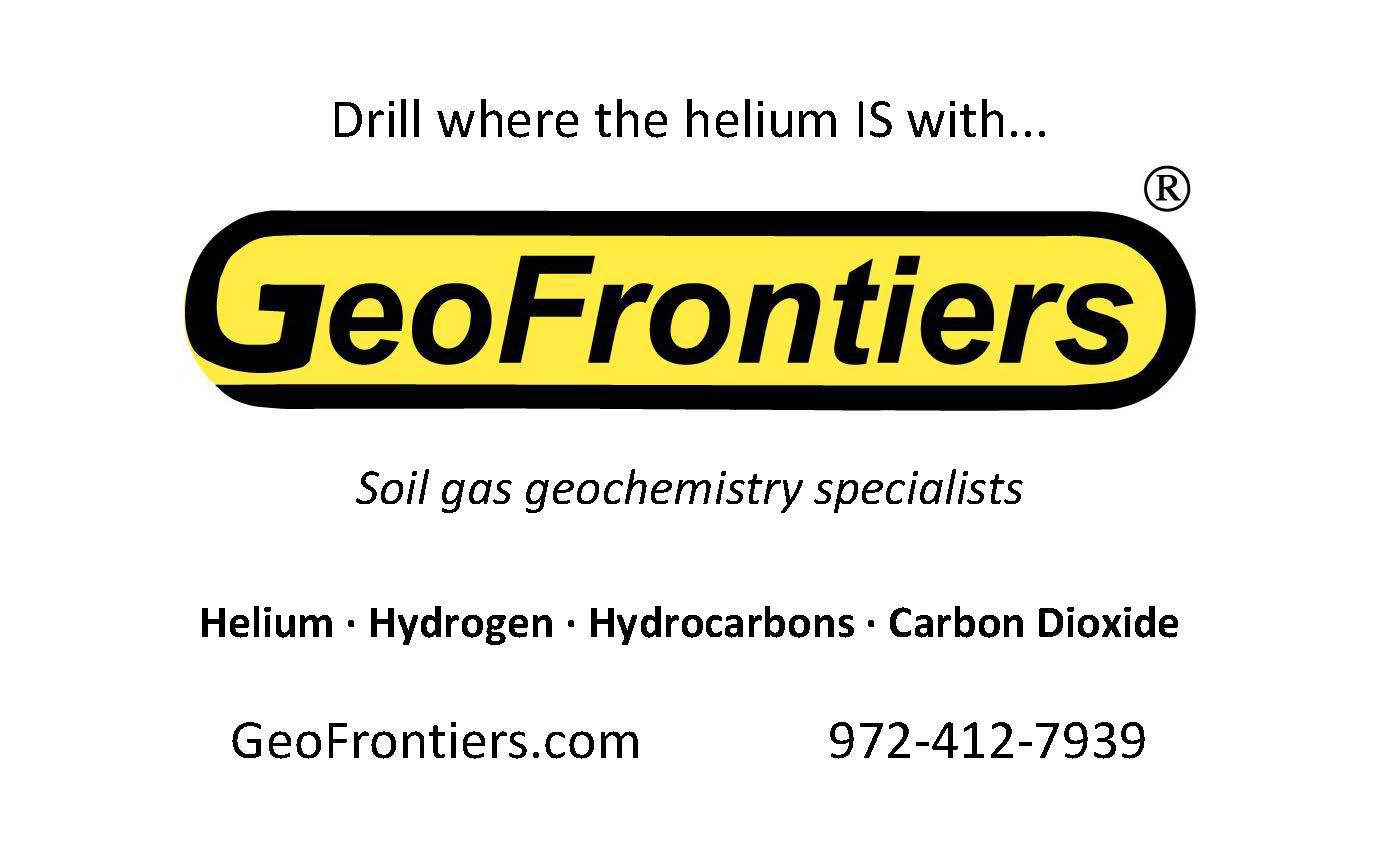

1:30 – 3:30 pm – Technical Session 5B
Session Chair: Steven Tedesco
Thursday March 23, 2023
1:30 PM LaBarge Platform, Wyoming, and Neighboring Helium Accumulations: Chemistry and Emplacement Mechanism
Presenting
Author Matthew Merrill, USGSCo-Authors Andrew
Abstract
HuntRoom B
The LaBarge Platform (hereafter LaBarge) is a basement thrust cored anticline in western Wyoming. Gas accumulations produced at this structure are typically greater than 0.5 mol% helium, which are well above the typical economic threshold of 0.3 mol%. These accumulations are likely the result of predominantly radiogenically-produced helium from crustal sources that accumulated into stable traps by a combination of 1) in-situ charge and 2) exsolution from deep basinal ground water that transported helium in a diffused state.
This study seeks to identify the source and migration of helium and other gases in the region surrounding LaBarge. To this end, gas and water samples were collected from six Mississippian aged Madison Limestone producing natural gas wells at LaBarge, and from 17 regional dissolved gas or gas-effusive surface springs within a 200-km radius of the field.
Sample chemistry indicates three distinct regional helium source groups that approximately match the boundaries of major geologic provinces in the area. The first province comprises tectonically stable sedimentary strata with proximal thrust faults, including LaBarge, where helium concentrations are relatively high (0.5-1.0 mol%). Their R/RA ratios are 0.05 to 0.07 and based on a binary crustal/mantle calculation (with end members of R/RA = 0.02 and 8), this indicates that the crustal proportion is >=99%. Though the source is primarily crustal, the R/RA ratios indicate that there is some amount of non-crustal helium. The second source group occurs west of LaBarge in the Basin and Range province of southeastern Idaho. Here, there is more mantle-sourced helium, with R/RA values of 0.15-2.2 (71.6 - 98.5% crustal), and lower helium concentrations (0.0004-0.008 mol%) than the first region. The last regional group, from the Yellowstone province to the north, is well documented in the literature as primarily mantlesourced helium, and therefore the region was only sampled along the boundary zone near LaBarge where results indicate the helium was 78.8% crustal.

Six noble gas samples from wells in the reservoir show helium isotopic compositions near crustal production endmember composition. Neon and other nobles plot on air and crustal mixing lines with little potential mantle contribution. The CO2/3He ratio has been used to illustrate magmatic gas contribution in many high CO2 accumulations, particularly in the southern Rocky Mountains. Using this ratio, LaBarge plots at the edge of mantle-based gases (1x109), a finding that does not match other data. This contradiction suggests that there may be different sources for the CO2 and other gases relative to the He sources.
Crustal-sourced helium is often attributed to high heat flow, which can increase the release of helium produced and trapped in the crust; however, there is no evidence of a nearby thermal
Biography of Presenting
Author
anomaly. In-situ radiogenic helium production from the reservoir formations themselves would require billions of years and cannot account for the sampled concentrations. Another process is the basal helium flux rate from all nearby crustal rocks; that flux would need to match the maximum rate reported in the literature to charge the reservoir to its current concentration within the age of the trap. A final and most probable process is that the helium may have been supplied from migrating groundwater associated with basement thrust faulting. In this heavily thrusted region, this potential pathway, combined with lesser contributions from the other processes, would explain the relatively high concentration helium occurrences with crustal source noble gas chemistry found at LaBarge and in the surrounding area.
Matthew D. Merrill is a supervisory research geologist at the U.S. Geological Survey in Reston, Virginia. He is currently a co-lead for the Carbon and Energy Storage, Emissions and Economics (CESEE) project within the Energy Resources Program. His past and current work spans a wide range of scientific topics including oil and gas assessments, helium system geochemistry, greenhouse gas emissions estimates, carbon sequestration, and enhanced oil recovery. His B.A. and Masters in Geology are both from Wesleyan University in Connecticut and focused on Patagonian volcanology and autonomous VIS/NIR mineral detection for Mars rovers respectively.

Thursday March 23, 2023
2:00
Presenting
Author Peter Barry, Woods Hole Oceanographic Inst.
Room B
Co-Authors B. Sherwood Lollar, University of Toronto, C.J. Ballentine, University of Oxford, P.C. Larson, Keewaydin Resources Inc., J.J. Bluett, Invenir Ltd., T.H. Abraham-James, Invenir Ltd.
Abstract Helium is an important industrial gas with a wide array of applications. It is extensively used in medical magnetic resonance imaging (MRI) scanners, for scientific and cryogenic research, welding, refrigeration, gas for aircraft, and as a coolant for nuclear reactors. Over the past decade, the global supply chain has struggled to meet increasing demand, leading to significant disruptions in the global helium market and volatile helium prices.
Radiogenically produced 4He accumulates in ancient crust during quiescent periods and is subsequently released during periods of active tectonism or volcanism, or gradually via diffusion1,2. Gas reservoirs can trap and store 4He that is produced by radiogenic decay of U and Th in the crust. This occurs as another gas (CH4, CO2 or N2) or fluid (i.e., groundwater) interacts with a 4He rich source rock, which acts to concentrate the helium in subsurface reservoirs3,4. Helium is most commonly extracted as a byproduct of natural gas production, when CH4 is the dominant gas in the crust, but can also be concentrated by CO2 and N2 when stable continental cratonic regions interact with volcanic systems or become tectonically active.
Here we present gas chemistry data from an exploration borehole recently drilled in the Duluth Complex (DC), Minnesota, USA. We find that well gases contained 10.5% He, 13.2% N2, 73.8% CO2 and 2.4% CH4. Interestingly, this gas has a high He/N2 (~0.8) relative to most helium rich gas deposits, which typically display He/N2 ratios between 0.03 and 0.12. The DC is the major

Biography of Presenting
Author
intrusive component of the 1.1 Ga Midcontinent Rift System, composed predominantly of 1096 Ma anorthositic to troctolitic mafic intrusions emplaced into the 1108-1083 Ma North Shore Volcanic Group (NSVG) and above 1.85 Ga Animikie Basin sediments5. The DC has been tectonically quiescent since emplacement of the youngest intrusion but was proximal to the longer duration NSVG thermal anomaly6.
These findings are a prominent example of how helium can be accumulated in continental settings. The ancient continental crust provides the source of 4He and intrusive volcanics provide the source of CO2 and heat to release and concentrate the helium7. The major element chemistry of the gases from the Duluth well is consistent with their release from the crystalline basement following interaction with a CO2 rich magmatic body, however it remains unclear why the He/N2 ratio is so high relative to other known systems globally.

1Warr et al., 2022, 2Cheng et al., 2022, 3Ballentine and Burnard, 2002, 4Ballentine and Sherwood Lollar, 2002, 5Miller et al., 2002, 6Schmidt et al., 2021, 7Danabalan et al. 2022
Peter H. Barry is an American geochemist who is an Associate Scientist in the Marine Chemistry and Geochemistry Department at the Woods Hole Oceanographic Institution. He uses noble gases and stable isotopes to understand the volatile history and chemical evolution of Earth, including the dynamic processes of subduction, mantle convection and surface volcanism, which control the redistribution of chemical constituents between the crust and mantle reservoirs. Barry’s main research focus has been on high-temperature geochemistry, crust-mantle interactions and the behavior of volatile fluids in the lithosphere. He also studies crustal systems, the origin of high helium deposits, including hydrocarbon formation and transport mechanisms. Barry earned his bachelor’s degree in 2004 from SUNY Geneseo, where he studied Geology. He earned his master's degree in 2011 and PhD in 2012 from Scripps Institution of Oceanography. He was an NSF Postdoctoral Fellow at University of Tennessee and continued his postdoctoral research at the University of Oxford during 2014–2018 before becoming an Assistant Scientist at the Woods Hole Oceanographic Institution in 2019. In 2018, he won the DCO Emerging Leader Award from the Deep Carbon Observatory (DCO) and Alfred P. Sloan Foundation in part for leading the Biology Meet Subduction project. Barry's major contributions to science to date include explaining the EndPermian Extinction event, the distribution of major reservoirs of helium gas on Earth and discovering new sinks of CO2 in subduction zones.
Thursday March 23, 2023
3:30 PM Helium Resources in
Room B
Presenting
Author David C. Harris, Kentucky Geological Survey

Co-Authors John B. Hickman and J. Richard Bowersox
Abstract In 1918, helium was first measured in natural gas produced from the Mississippian Big Lime formation on the northern margin of the Rome Trough in northeast Kentucky. Although the helium content of original sample, taken from the 14 American Rolling Mill gas and measured by the U.S. Bureau of Mines, was only 0.14%, this discovery set the stage for the commercial helium development of the Rome Trough. The Rome Trough is an Ediacaran through Lower Cambrian, northeast-trending rift system extending from south-central Kentucky northward into north85
Author
central Pennsylvania and southernmost New York. Although helium was subsequently measured in gas produced from wells throughout the Rome Trough, large commercial-grade concentrations have only been found in the Lower Cambrian Rome Sand on the west-central margin of the Rome Trough. In Kentucky, commercial-grade helium discoveries came from wells drilled in the mid-1960s. Texaco drilled and tested the Middle Cambrian Rome Sand in its 1 Leonard Kirby well, Garrard County, during July 1968. The Rome Sand in the 1 Leonard Kirby well is a thick section of interbedded sandstone and shale lying on Precambrian Grenville metamorphic basement rocks. The play’s premise was that hydrocarbons generated in organicrich shales interbedded with Rome sands would be trapped against Precambrian igneous rocks comprising the western wall of the Rome Trough. Drillers found very low 230 BTU gas in the Rome sands, which indicated 80% nitrogen, but they also found an average of 1.67% helium in four drill-stem tests. Shales in the Rome Sand and the underlying basement rocks are the likely sources for generating the helium found in the section. Following the drill-stem tests the 1 Leonard Kirby well was plugged and abandoned. In 1972, the follow-on Peter Widener 1 Andrew Burdette well (drilled 5 mi south of the Kirby well) found 1.32% helium in the Rome sands but was plugged and abandoned due to a lack of developer interest. Almost 40 years later an offset to the Widener 1 Andrew Burdette well, the Hoy Energy 1 Andrew Burdette, was drilled and 1.63% helium was found in its gas stream. After sitting idle for 15 years, this well will be developed using a small, portable helium extraction unit, and the helium trucked to an extraction plant for upgrading. Now, fifty-four years after the discovery of commercial-grade helium, Kentucky may finally become a helium-producing state.
Dave Harris is a geologist, and Head of the Energy and Minerals Section at the Kentucky Geological Survey, University of Kentucky. He has worked at KGS since 1990, and was previously employed by BP Exploration in San Francisco, Dallas and Houston, and Mobil in New Orleans. He has a MS degree from Stony Brook University, 1982, and BS from the College of William and Mary, 1979. While at KGS he has worked on a wide variety of subsurface research projects including carbonate reservoirs, deep Cambrian clastics in the Rome Trough, and carbon storage programs.
Thursday March 23, 2023
3:00 PM
Presenting Author
Exploration for Helium in the Phanerozoic
Room B
Paul Lafleur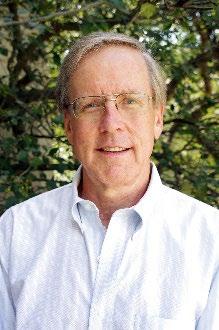
Abstract Almost all the helium discovered worldwide has been found by chance in the drilling for hydrocarbons. Targets were usually anticlinal structures found by seismic surveys. The association of helium and natural gas in reservoirs is purely coincidental because the source rocks for each are different - natural gas is mainly produced from diagenesis of carbon rich shale whereas Helium- 4 is derived mainly from the decay of uranium/thorium in the crust. The source of the two compounds is likely to be either the basement or the reworking of uraniferous sediments.
A new geochemical exploration system for helium in the Phanerozoic is considered highly desirable by industry. The current exploration system in the Phanerozoic uses a modified petroleum system concept that has been used successfully for decades to high-grade plays and

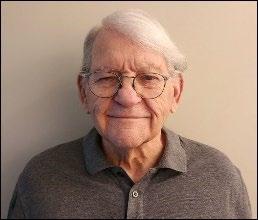
de-risk oil and gas prospects. Like a petroleum system, the helium system is identified by its source rock, reservoir, trap, seal, and migration pathways. However, this approach is expensive taking years to complete and can be a limiting factor for countries/provinces/states to develop their resources.
As a precursor to ground helium/hydrogen surveys for exploration in the Phanerozoic, hyperspectral (satellite) surveys which assesses huge areas for their helium potential as well as any associated hydrocarbons. These areas may be even devoid of any previous exploration for hydrocarbons. This is followed with geochemical soil gas surveys of the more prospective trends to locate drilling locations. Both methods ascertain whether helium anomalies, which represent helium reservoirs at depth, are associated with hydrocarbons or nitrogen. Helium reservoirs associated with nitrogen are higher in helium content but are deeper, close to the basement.
Hyperspectral and geochemical soil gas surveys are also applicable for projects that begin with helium analysis of old wells followed by seismic and drilling. Typically, exploration companies lease vast areas surrounding the legacy well, but their initial focus is on seismic in the area around the legacy well to determine the size and configuration of the helium reservoir penetrated by the well and this is followed by drilling. It is not known at this point whether this reservoir is the best prospect because the helium discovered is usually associated with HC, not with nitrogen with much higher helium concentration in the lower Phanerozoic. Rarely do legacy wells penetrate deep enough to this level.
Any cost-effective exploration program for helium is best accomplished by hyperspectral and follow-up geochemical soil gas surveys.

Paul Lafleur is president of Petro-Find Geochem Ltd that provides geochemical soil gas surveys to the oil and gas exploration industry in Western Canada and Worldwide. A graduate of the Colorado School of Mines in Geology and Engineering, he has 18 years of experience as a provider of geochemical soil gas surveys in the exploration of hydrocarbons and helium in the Phanerozoic, and uranium using helium and hydrogen as pathfinders in the Proterozoic Athabasca Basin in Saskatchewan. In the last three years, he has used third party hyperspectral surveys in the exploration for helium and hydrocarbons in the Phanerozoic of Canada and the Middle East, and for uranium and rare earths in Canada.
Paul Lafleur is a Registered Professional Engineer in Saskatchewan that has granted Paul Lafleur a License for Permission to Consult in the field of “Geological Engineering: mineral and energy economics; application of trace hydrocarbon and fixed gas analysis of soil gas to identify and characterize the presence of hydrocarbons and minerals.
Petro-Find Geochem Ltd is based in Saskatoon, Saskatchewan
Presenting
Author Gregg Peters, The Edelgas Group
Co-Authors
Bo Sears, The Edelgas GroupAbstract In the entire value chain of helium exploration and development, nothing is more important than the off-take agreement. Frequently one-sided, these agreements can leave your organization enduring more risk than exploration itself. Forewarned is forearmed, knowing what to look for is the first step in maximizing the return for all stakeholders.
Historically, the major Industrial Gas companies (Tier 1’s) have been the primary and only capable buyers of Helium from producers of all sizes, in all geographies. This very narrow pool provides them tremendous leverage in negotiation. Unfortunately, when you dance with an 800lb gorilla, the gorilla always leads. The typical result is agreements that range from suboptimized to unfair and inescapable.

Armed with decades more commercial experience, superior market knowledge, live data, detailed logistical know-how, and iron-clad contracts that contain well developed industry terms, they can lead the dance without an explorers feet ever touching the ground. Further, trusted debt and/or equity providers, mostly new to this type of alternate investment, can also suffer the effects of lopsided agreements.
For some industrial gas companies, the primary intent of these contracts is to “lock-up” a source, leaving explorers little to no flexibly or power. However, in the drive to commence operations, explorers may sign without full comprehension of all the ramifications. A standard industrial gas agreement always contains language crafted for its own benefit. Experienced Helium buyers know, in advance, all of your needs/weaknesses, such as processing solutions, financing , logistics, etc.
But times are changing. Increasing interest in exploration is causing new molecules to enter the market – resulting in more potential buyers, all of whom have specific strategic goals, risks, strengths, and weaknesses. Explorers/Producers can and should know the strategic drivers, cost/price models and commercial reputations of any potential long term partners before entering a long term relationship. Today a producer can strengthen their own negotiating position - in all critical commercial components such as price, term, escalation, openers, and new development. The ability for the explorer to have flexibility to move freely within the space is of paramount importance.
Based in Chicago, Gregg was born and raised into the Industrial Gas sector starting off at a family-owned distributor.
In 2004, he began a six-year tenure as the Industrial Gas Marketing Director for Praxair Distribution Inc. Gregg set pricing strategies and led growth initiatives, including rapid commercialization of cutting-edge supply systems and a fuel gas product that mitigated the impact on customers during an extended shortage in propane supply. That experience became
useful during the first helium shortage (1.0) in ’07-’08, and the cycles of analysis and strategy began for what became the following series of shortages.
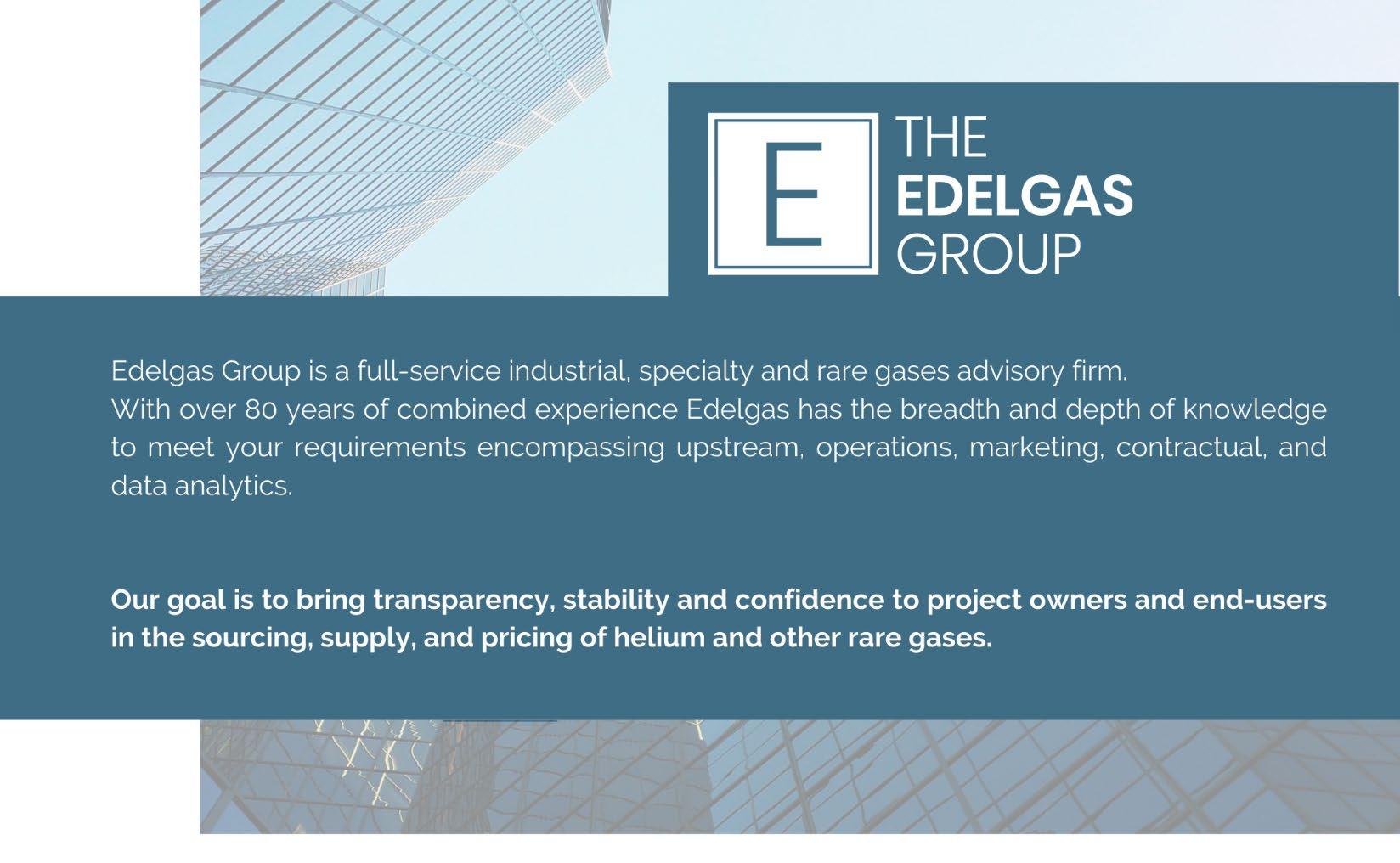

In 2010, Gregg accepted the role as Helium Director, North America for Praxair Inc, responsible for business and client support of commercial, technical and supply aspects of the product during shortages. Gregg led efforts in pricing strategy, contract development, client portfolio and new market/product development. His strengths in cross functional leadership, including communications to line workers and C-suite, were central to the development and commercialization of new supply technologies and supply agreements.
He holds a bachelor's degree in Marketing from Valparaiso University and a Masters in Operations from Loyola University in Chicago.

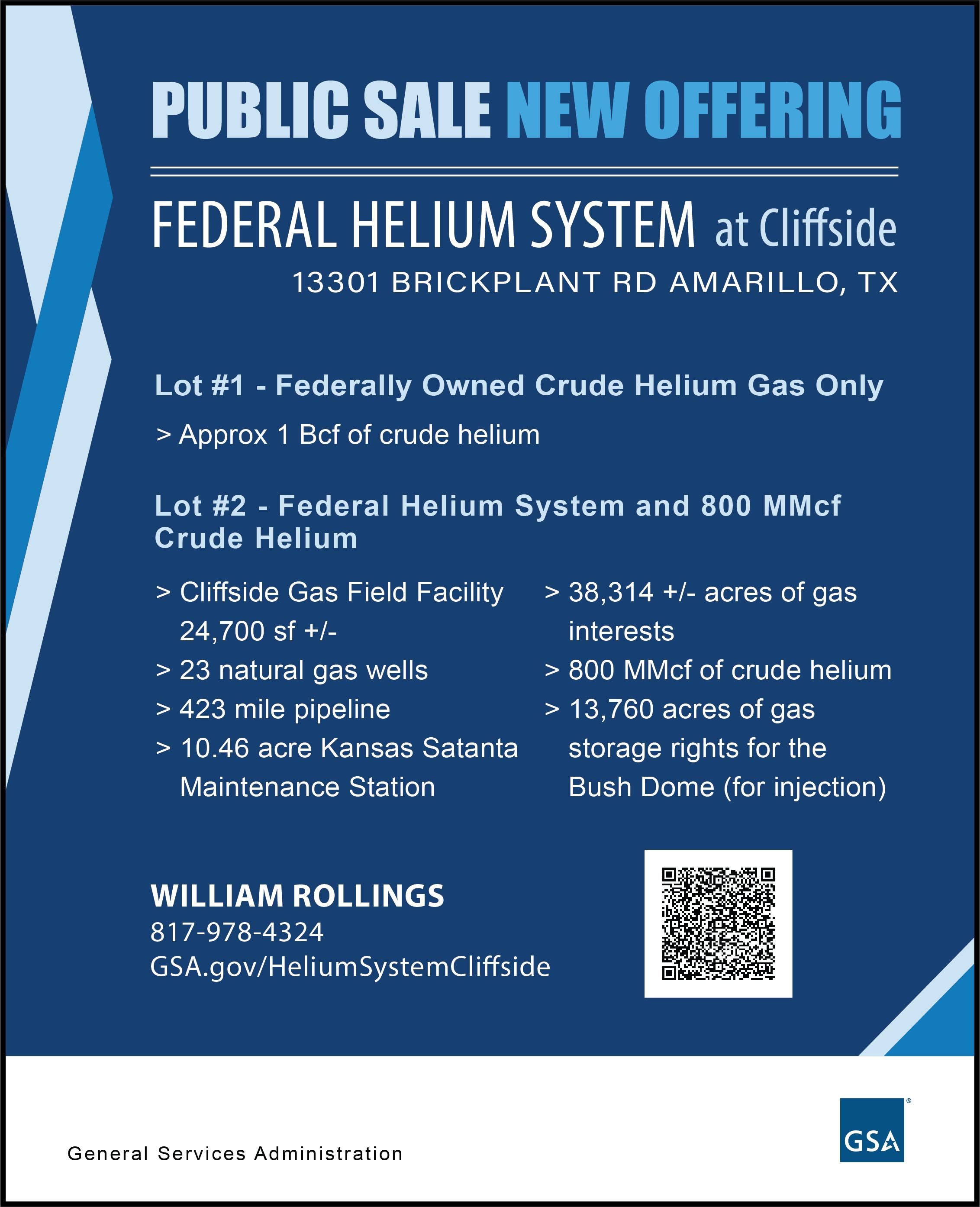

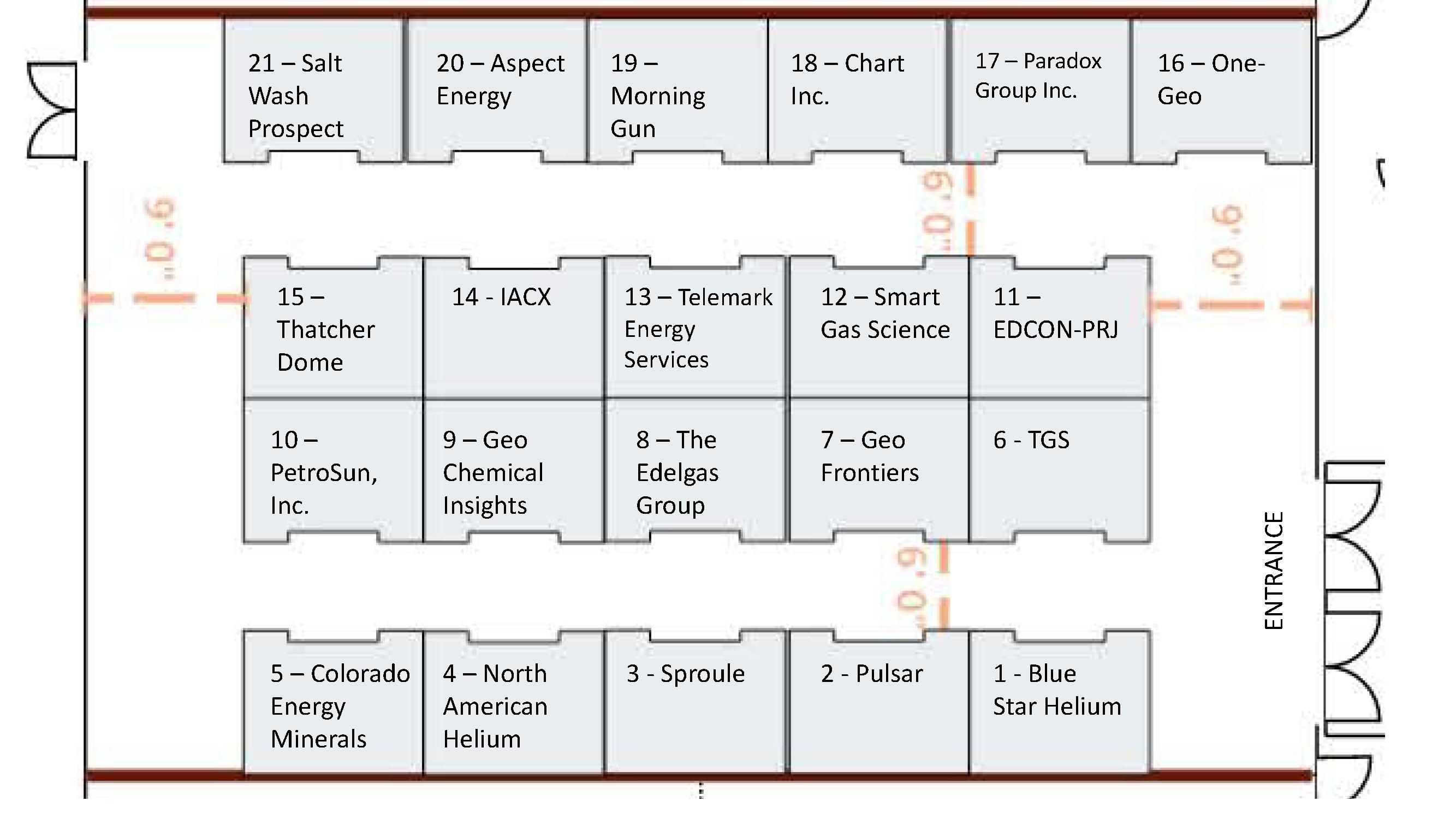
• 21st Century Geoscience Ltd
• 45-8 ENERGY
• 4C Exploration ltd
• Advanced Hydrocarbon Stratigraphy
• Air Liquide
• Altitude Energy Partners LLC
• American Gas Products
• Andersen Oil and Gas Exploration
• Aota Technical, LLC
• Apogee Exploration
• Arjae Design Solutions Ltd
• Aspect Energy
• Aspect Holdings LLC.
• Aurivos
• Avanti Helium Corporation
• Bandit Exploration
• Bayswater E&P
• Becker Oil Corp
• Bickerstaff Associates, Inc.
• Bishop Research LLC
• Black Exploration, LLC
• Blue Spruce Operating, LLC
• Blue Star Helium
• Borehole Image Specialists
• Bridgecreek Resources
• Brothers Gas
• Butler Oil
• Canadian Helium Inc.
• Capilano Policy Group
• Chart Inc.
• Cholla Production, LLC
• Colorado Energy Minerals
• Colorado Energy Minerals Inc.
• Colorado Geological Society

• Colorado Oil & Gas Conservation
• Consultant
• Coterra Energy
• Coyote Oil & Gas
• Cross Exploration Company LLC
• Cryo Technologies
• D3 Energy Limited
• DEMD
• Denbury Inc.
• Denver Museum of Nature and Science
• Desert Eagle Operating
• Desert Mountain Energy Corp
• Devon Energy
• Division of Energy and Mineral Development, BIA
• DOC Office of Critical Minerals and Metals
• DOI, OS, AVSO, DME
• Dynamic Energy Consulting
• E C Energy Partners
• Earthfield Technology, LLC
• Earthfield Technology, LLC.
• EDCON-PRJ, Inc
• Electronic Fluorocarbons
• Energy Royalty Partners
• Energy Transfer
• ENXL
• EOG Resources
• ExxonMobil
• Field Geo Services
• First Helium Inc.
• Five-Nines Resources, LLC
• Four Corners Helium
• Fox Bros Energy LLC
• G Geophysics LLC
• General Services Administration
• Geochemical Insight
• GeoFrontiers Corporation
• GeoStar Energy Partners
• Global Helium Corp.
• Global Ventures/Consultants
• GLT Corporation
• Goolsby
• Helios Energy Limited
• Helium Evolution Incorporated
• Helium One Global Ltd
• Hollberg Exploation/TMR
• Hoy Energy
• IACX Energy
• Independent Geologist
• Infinity Oil & Gas
• Innova Energy Services
• Integrated Geologic Solutions
• Iwatani Corporation
• Japan Petroleum Exploration Co.,Ltd.
• Japex (U.S.) Corp
• Journey Engineering Corporation
• Kelley Leasing Partners, LLC
• Kerrigan & Associates, Inc.
• Keyes Helium
• Kirkwood Companies
• Knights Nitrogen Services Ltd
• Kodiak Petroleum Inc
• Kornbluth Helium Consulting, LLC
• Laramide Geosciences
• Linde
• Lionheart
• LM INTELLIGAS
• Longbow Consulting, LLC
• Magnolia Minerals Trust, LLC
• Manitoba Geological Survey
• Martineau Petroleum, Inc.
• McCleery International Geology
• Messer LLC
• Midcontinent Exploration Group
• Mojo Geologic Consulting
• Morning Gun Exploration LLC
• MSU Student
• Murfin Drilling Company, Inc.
• MWS
• Navajo Nation Oil and Gas Co.
• New Era Helium Corp.
• New Mexico Bureau of Geology and Mineral Resources

• Nighthawk Resources
• Noble Helium
• NodalSeismic
• North American Helium Inc.
• North East USA Distributors LLC
• NTEC
• O'Connor Land Services, Inc.
• OJH Geological Ltd
• One-Geo
• Orogeny Resources LLC
• Own Resources
• Oxy
• Paradox Basin Data
• Paradox Group, Inc.
• Paradox Resources, LLC
• Pearson Technologies Inc
• Perry Remote Sensing LLC
• Petrel Robertson Consulting Ltd.
• Petro-Find Geochem Ltd
• Petrosight
• PetroSun, Inc.
• Pinon Petroleum LLC
• Pulsar Helium Inc.
• PURO Energy Partners
• Rangeland E&P
• Renergen Limited
• REO, LLC
• Robert L. Bayless LLC
• Rose Petroleum
• Royal Helium
• Royal Helium / Imperial Helium
• Running Foxes Petroleum Corp.
• Sabata Energy Consultants
• Savannah Exploration, Inc.
• Seidle Consulting
• SIGIT
• Skyline Assayers & Laboratories
• SLB
• Smart Gas Sciences
• Sol Spa
• Springer Resources, LLC
• Sproule
• ST Oil Utah LLC
• Student
• SUERC
• SYOXSA, Inc.
• Telemark Energy Services
• Telmay Engineering
• Tex-Air Gas Co., Inc.
• TGS
• The Cobalt Group, LLC
• The Edelgas Group
• Thor Resources Inc.
• Timberline Oil & Gas Corp
• Total Helium
• Transitional Energy
• Travis Energy Group Inc
• Tumbleweed Midstream
• Twin Bridges Resources
• U.S. Department of Interior - DME
• U.S. Geological Survey
• Uniper Global Commodities North America
• University of Kentucky
• University of Oxford
• Utah Geological Survey
• Utica Resources
• Vanoco Consulting LLC
• Wavetech Helium, Inc.
• Weil Group Resources
• WESCO OPERATING INC
• WHOI
• Wintermoon Geotechnologies Inc
• Wright Brothers
• Wyoming State Geological Survey

Jeffrey Aldrich is a Senior Geoscientist with Sproule International Company (formally MHA Petroleum Consultants). He has over 40 years of global oil and gas experience working from frontier exploration through appraisal to large development projects. His expertise is in unconventional reservoirs, prospect evaluation, reserve determinations, helium reservoirs and multi-discipline and multi-culture team dynamics. Jeff is the primary Petroskills instructor for “Evaluating and Developing Shale Reservoirs (SRE)” , “Prospect and Play Analysis (PPA)” and Unconventional Reserve and Resource Evaluations (URRE). Prior to joining MHA he held various management and technical positions with Dart Energy, a Australian global unconventional gas company, Greenpark Energy, a UK CBM company, PetroSA, the South African national oil company, and American companies, Forest Oil, Maxus Energy and Pennzoil Oil and Gas Company. He has a B.S. Degree in Geology from Vanderbilt University and a M.S. Degree in Geology from Texas A&M University. He is an active member in the AAPG having served as the Vice-President, Sections, President of the DEG and is currently the Chairman of the Board of Datapages, LLC. plus active on several committees. He is also a member of SPE, RMAG, DWLS, DIPS and is both Certified Petroleum Geologist (#3791) and a Licensed Professional Geologist in Texas, Louisiana and Alberta. He is author or co-author of over 30 papers and/or technical presentations.
Matthew Bauer

Matthew W. Bauer is the Vice President of Data Science and Analytics with Energy Royalty Partners and an Affiliate Faculty Member with the Colorado School of Mines. He received his M.S. in geology from the Colorado School of Mines and his B.S. degree from the University of Missouri-Kansas City.
Mr. Bauer is a quantitative geologist specializing in spatial data science applications for the energy industry. He has authored software for a variety of projects including ETL pipelines, workflow automation, regional petrophysics, spatial language processing, and modeling of both hydrocarbon & renewable royalty cashflows. He is also involved in several projects promoting python literacy for geologists including teaching with the Earth Resource Data Science Program at the Colorado School of Mines.
Mr. Bauer serves as the Second Vice President for the Rocky Mountain Association of Geologists chairing the Continuing Education Committee and is a Licensed Professional Geologist in the state of Kansas.

Michele received a B.A. degree in geology from the University of Colorado and a M.S. degree from Duke University where she was part of the Project PROBE research into the structural geometry of rift formation. She contributed work on sedimentary response to rift geometry to the project. She worked for Marathon Oil Company in the Denver Research Center and then in the Gulf of Mexico Exploration division in Houston. Later as a consultant for the USGS she contributed one Arctic and eight Asian and Australian petroleum system style basin studies and resource analyses to the World Energy Project. While with Gustavson Associates she supported clients in oil, natural gas, and coal-bed methane projects worldwide with due diligence, reserve, and resource reporting and mineral appraisals. Beginning in 2013 she worked with several North American helium companies adapting the petroleum system approach to helium and applying it to prospect identification and evaluation, exploration, reserve and resource reporting. Now as a consultant, Michele continues her interest in helium exploration.

Sean Brennan is co-project lead for the Carbon and Energy Storage, Emissions, and Economics Project at the U.S. Geological Survey. His main areas of expertise include sedimentology, stratigraphy, low-temperature geochemistry, and subsurface fluid systematics. His research has focused on assessing non-energy gases in the subsurface, creating assessment methodologies and completing assessments of subsurface fluid resources, and working to understand the creation, migration, and entrapment of various naturally occurring fluids.


Ron Broadhead received his B.S. in Geology from New Mexico Tech and his M.S. in Geology from the University of Cincinnati where he studied Devonian shales under the late Paul Potter. He worked for Cities Service Oil Company in Tulsa and Oklahoma City and has been with the New Mexico Bureau of Geology and Mineral Resources (a Division of New Mexico Tech) since 1981. He retired from New Mexico Tech in 2020 and was granted emeritus status by the university. At the Bureau, major research projects have included the New Mexico petroleum source rock project, subsurface and petroleum geology of the Permian, San Juan, Tucumcari, Raton, Las Vegas and Estancia Basins as well as helium-rich and CO2rich natural gases of New Mexico. He also supervised the Bureau’s core and subsurface information libraries. He taught subsurface and petroleum geology at New Mexico Tech beginning in 1982 and continues to teach part-time in retirement. His numerous society activities include serving as editor of Search and Discovery, the online journal of AAPG, from 2011 through 2018.

Rob Diedrich is a geologist with 40 years’ experience in the petroleum industry, primarily with Marathon Oil Company and SM Energy, a Denver independent, where he retired in 2019 as the company’s Vice President of Resources. His primary focus at SM Energy was on the exploration and development of unconventional resource plays in US basins. He has a BA Degree in geology from SUNY Oneonta and an MS Degree in geology from Bowling Green State University. Rob is an active volunteer in the Denver geoscience community, most recently serving as the 2022 President of RMAG. He currently chairs RMAG’s ‘On the Rocks’ Field Trip Committee. Rob is also active in AAPG’s Rocky Mountain Section (RMS) where he serves as a Director and President of the RMS-AAPG Foundation.
Mark GerminarioMark Germinario received his BS & MS in Geological Sciences from San Diego State University finishing in 1982. His 40-year career in exploration and production includes positions held at Union Pacific Resources, Stroud Energy, EOG Resources and Beacon E&P. He has worked many conventional and unconventional oil and gas plays across the Rockies, Texas, and Oklahoma. He has developed a broad background in conventional and unconventional reservoir characterization, geo-mechanical stratigraphy, field development planning, basin and prospect evaluation, and best practices analysis
In addition, he has participated in the geotechnical management of two successful small privately funded E&P companies.





While at Union Pacific Resources, Mr. Germinario contributed to the building of the Ladder Creek Helium Plant in Cheyenne Wells, Colorado by documenting the helium resources of the Morrow Sandstone, in Eastern Colorado. Until recently, he ran business development effort at Tumbleweed Midstream, the owner of the Ladder Creek Helium Plant. Currently, Mr. Germinario is the owner of Integrated Geologic Solutions, LLC providing geologic and business development consulting services to the helium and hydrocarbons sectors.
Steven TedescoDr. Steven A. Tedesco is Owner of Running Foxes Petroleum Inc.; Manager of MRE Wind and Solar; and Manager of Starfox Helium Inc. and has been in the resource industry for over 40 years. Dr. Tedesco has a MS from Southern Illinois University and a PhD from Colorado School of Mines. He has written numerous articles on coal, coal-bed methane, surface geochemistry, Pennsylvanian stratigraphy, numerous field studies, use of aeromagnetics in petroleum and resource exploration and gas operation. Dr. Tedesco recently authored the book: Geology and Production of Helium and Associated Gases published this spring by Elsevier and another book entitled Surface Geochemistry in Petroleum Exploration published by Chapman and Hall. Dr. Tedesco is on the Foundation Board for Southern Illinois University. Dr. Tedesco operates over 600 CBM, oil (both conventional and waterflood) and gas wells in Utah, Missouri, Kansas, and Wyoming and has solar and wind assets in Arizona, Utah, Colorado, and New Mexico. Dr. Tedesco is a member of SPE, AAPG, RMAG, Emu Association, and National Buffalo Association.
Bender’s Bar & Grill
10710 Westminster Blvd
Westminster, CO 80020
Kachina Southwestern Grill
10600 Westminster Blvd
Westminster, CO 80020
Caribou Coffee 10611 Westminster Blvd
Westminster, CO 80020
Tuk Tuk Thai Bistro
10667 Westminster Blvd
Westminster, CO 80020
Chuy’s 6595 W 104th Ave
Westminster, CO 80020
Rusty Taco 6515 W 104th Ave #100
Westminster, CO 80020
MOD Pizza
6414 W 104th Ave, Suite 400
Westminster, CO 80020
Jersey Mike’s Subs
10398 Reed St, Suite 100
Westminster, CO 80021
Macaroni Grill
10411 Town Center Dr.
Westminster, CO 80021
Hacienda Colorado 10422 Town Center Dr.
Westminster, CO 80021
Bone Fish Grill 10438 Town Center Dr.
Westminster, CO 80021
BJ’s Restaurant & Brew House
10446 Twon Center Dr. Westminster, CO 80021
East Moon Asian Bistro & Sushi
10431 Town Center Dr. #101C
Westminster, CO 80021
Starbucks 10445 Town Center Dr. Westminster, CO 80021
Jewel of India
10343 Federal Blvd P Westminster, CO 80260
Pho 9 II
10250 Federal Blvd #700
Federal Heights, CO 80260
